George Akerlof
description: an American economist who won the 2001 Nobel Prize in Economics for his work on information asymmetry
157 results
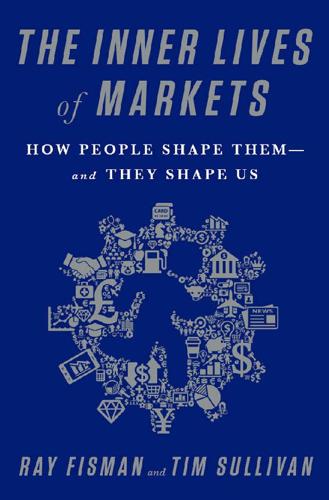
The Inner Lives of Markets: How People Shape Them—And They Shape Us
by
Tim Sullivan
Published 6 Jun 2016
While there, his misgivings were fed by a speech he gave at a symposium on internet commerce, where he asked whether anyone in the room had ever bought anything online. Only three hands went up out of an audience of several hundred. If even those at the vanguard of tech commerce weren’t shopping online, what hope was there that everyone else ever would? Kicking the Tires George Akerlof never set out to create the intellectual framework that helped nurture the e-commerce explosion or transform the way economists devised their theories. In the 1960s, he was just another young assistant professor trying to get his somewhat unorthodox paper on the economics of the used car market published in an academic journal.
…
Companies like eBay, Amazon, Airbnb, Facebook, and Uber employ PhD economists to more directly translate conceptual insights from Akerlof and his followers into practical guidance on how to better compete in the marketplace or, as we’ll see, reimagine marketplaces altogether. (The paper’s main insight is, in a sense, a warning for all businesses where information is of paramount importance: when the seller knows more about the quality of her wares than the buyer does, the market is prone to collapse.) And all this can be traced back, in some small way, to young George Akerlof choosing to sit in on a topology class his first year at Harvard. Adverse Selection on eBay Despite his early doubts, Jeff Skoll did ultimately end up running eBay, which (along with other e-tailers like Amazon) has succeeded in selling on the internet only because of the enormous resources it devotes to keeping customers from getting screwed.8 As one eBay economist put it to us, in academic parlance, “Our job is to reduce asymmetric information on eBay.”
…
It’s not for us to say whether any particular eBay merchant is being truthful (but the Tiffany audit we described in the last chapter suggests many aren’t); it’s simply that for any given listing, rip-off artists and honest brokers face the same (negligible) cost of claiming whatever they like. The challenge facing sellers of genuine Tiffany and the buyers in search of them is to prove that they’re not just full of empty words. Around the time George Akerlof had finally gotten someone in the academic community to take “The Market for Lemons” seriously, Michael Spence was at the early stages of his PhD at Harvard’s economics department. By the time he defended his thesis in 1972, he’d provided an answer to the cheap talk problem that also, perhaps inadvertently, helps to explain why Robert Torres ended up with San Fer tattooed across the back of his neck (even though we’re sure Spence, a very proper and vaguely aristocratic Rhodes Scholar, never contemplated the issue of hand and neck tattoos).
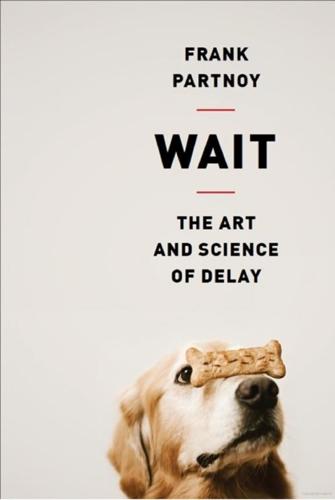
Wait: The Art and Science of Delay
by
Frank Partnoy
Published 15 Jan 2012
But if he puts off his apology day after day, the delay becomes a problem. It makes good sense to wait until the end of lunch to decide whether to ask someone on a second date. But what if you are still putting off the decision a month later? Where is the line between good delay and bad delay? The economist George Akerlof was spending a year in India after graduate school, and his good friend and fellow economist Joseph Stiglitz visited him there. (This was decades ago, before both men won the Nobel Prize.1) Stiglitz had purchased many souvenirs and clothes during his trip. On his return, when a customs official at check-in told Stiglitz he had too many bags and would have to leave one behind, Stiglitz put the extra ornaments and clothes in a cardboard box and asked Akerlof to ship it back to the United States.
…
Why would human beings engage in procrastination if it weren’t somehow making them better off? Carolyn Fischer, a public finance and natural resources economist, developed a clever mathematical model to show how procrastination can be in our best interests.17 A second strand of economics, the one originated by George Akerlof,18 laid the groundwork for Piers Steel and dozens of other prominent economists and psychologists who see procrastination as closely tied to impatience. Procrastination has become a hot subfield in economics, but if we asked three economists about procrastination, we might get five different opinions.
…
The psychologists Joseph Ferrari, Jane Burka, and Piers Steel help chronic procrastinators who suffer from paralyzing stress and negative self-esteem. The various perspectives from economics and history are enlightening, too, like different views of a cathedral. Yet notwithstanding all of the books, websites, and self-help courses on the topic, there is no grand unified theory of procrastination.22 The closest we have is George Akerlof. In 1991, twenty-five years after his postgraduate year in India, Akerlof was invited to give a lecture at the 103rd meeting of the American Economics Association. By this time, he had developed an economic model to explain why humans procrastinate. He began his lecture, entitled “Procrastination and Obedience,” by telling the crowd about Stiglitz’s box.23 The heart of classical economics is the assumption that human beings are rational and forward-looking.
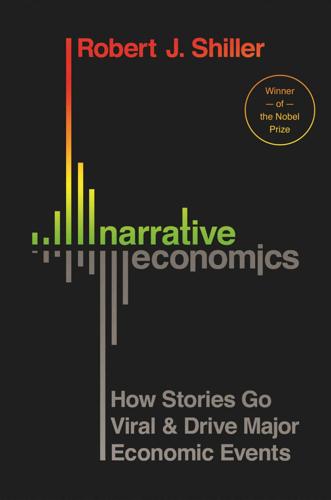
Narrative Economics: How Stories Go Viral and Drive Major Economic Events
by
Robert J. Shiller
Published 14 Oct 2019
Acknowledgments My 2017 American Economic Association (AEA) presidential address, “Narrative Economics,” was published in the April 2017 issue of the association’s journal, the American Economic Review. Many passages from that presidential address have found their way, often with modifications, into this book. This book is strongly influenced by two books I wrote with George Akerlof, Animal Spirits (2009) and Phishing for Phools (2015). Another strong influence is the book George Akerlof wrote with Rachel Kranton, Identity Economics (2011). Narratives play a role in all these books. Working with George aided my thinking immeasurably. The research that underlies this book has taken place over decades. I acknowledge research support over the years from the US National Science Foundation, the Cowles Foundation for Research in Economics at Yale University, the Smith Richardson Foundation, the Whitebox Foundation via the Yale School of Management, and the James Tobin research fellowships at Yale.
…
His words “vengeance” and “despairing convulsions of revolution” suggest narratives filled with moral underpinnings, reaching to the deeper meaning of our activities. From Irrational Exuberance to Narrative Economics This book is the capstone of a train of thought that I have been developing over much of my life. It draws on work that I and my colleagues, notably George Akerlof, have done over decades,13 culminating in my presidential address, “Narrative Economics,” before the American Economic Association in 2017 and my Marshall Lectures at Cambridge University in 2018. This book makes a broad attempt at synthesizing the ideas in all these works, linking these ideas to epidemiology (the branch of science concerned with the spread of diseases) and putting forth the notion that thought viruses are responsible for many of the changes we observe in economic activities.
…
Once it became established that even dignified authors would allow their publishers to cover their books with a glitzy dust jacket, it became a permanent fixture. In fact, publishers who want to survive in a highly competitive business where others use book jackets have had no choice, for the book jacket is part of what George Akerlof and I called a phishing equilibrium. In a competitive market in which competitors manipulate customers, and in which profit margins are competed away to normal levels, no one company can choose not to engage in similar manipulations. If they tried, they might be forced into bankruptcy. A phishing equilibrium with a certain acceptable level of dishonesty in narrative is therefore established.14 Phishing equilibria may not be all that bad.

Animal Spirits: How Human Psychology Drives the Economy, and Why It Matters for Global Capitalism
by
George A. Akerlof
and
Robert J. Shiller
Published 1 Jan 2009
Animal Spirits Animal Spirits HOW HUMAN PSYCHOLOGY DRIVES THE ECONOMY, AND WHY IT MATTERS FOR GLOBAL CAPITALISM With a new preface by the authors GEORGE A. AKERLOF AND ROBERT J. SHILLER Princeton University Press • PRINCETON AND OXFORD George Akerlof is the Daniel E. Koshland Sr. Distinguished Professor of Economics at the University of California at Berkeley; co-director of the Program on Social Interactions, Identity and Well-Being of the Canadian Institute for Advanced Research; and a member of the board of directors of the National Bureau of Economic Research. Robert Shiller is the Arthur M.
…
Copyright © 2009 Princeton University Press Requests for permission to reproduce material from this work should be sent to Permissions, Princeton University Press Published by Princeton University Press, 41 William Street, Princeton, New Jersey 08540 In the United Kingdom: Princeton University Press, 6 Oxford Street, Woodstock, Oxfordshire OX20 1TW press.princeton.edu All Rights Reserved Ninth printing, and first paperback printing, with a new preface by the authors, 2010 Paperback ISBN: 978-0-691-14592-1 The Library of Congress has cataloged the cloth edition of this book as follows Akerlof, George A., 1940– Animal spirits : how human psychology drives the economy, and why it matters for global capitalism / George A. Akerlof and Robert J. Shiller. p. cm. ISBN 978-0-691-14233-3 (hardcover : alk. paper) 1. Economics—Psychological aspects. 2. Finance—Psychological aspects. 3. Capitalism. 4. Globalization. I. Shiller, Robert J. II. Title. HB74.P8A494 2009 330.12′2019—dc22 2008052649 British Library Cataloging-in-Publication Data is available This book has been composed in Adobe Galliard and Formata by Princeton Editorial Associates, Inc., Scottsdale, Arizona Printed on acid-free paper. ∞ Printed in the United States of America 10 9 Contents * * * Preface to the Paperback Edition Preface Acknowledgments INTRODUCTION Part One: Animal Spirits ONE Confidence and Its Multipliers TWO Fairness THREE Corruption and Bad Faith FOUR Money Illusion FIVE Stories Part Two: Eight Questions and Their Answers SIX Why Do Economies Fall into Depression?
…
Robert’s wife, Virginia Shiller, a clinical psychologist, has been influential in impressing upon her husband the significance for economics of various principles of human psychology and has helped temper his technical impulses to make sure there is always a connection to economic reality. We both have sons who are emerging scholars and who have offered comments on the book. George Akerlof thanks the Canadian Institute for Advanced Research and the National Science Foundation (grant SES 04-17871) for generous financial support. We also thank Edward Koren, whose drawings, wordlessly and succinctly, capture the spirit of this book. Animal Spirits Introduction TO UNDERSTAND HOW economies work and how we can manage them and prosper, we must pay attention to the thought patterns that animate people’s ideas and feelings, their animal spirits.

Finance and the Good Society
by
Robert J. Shiller
Published 1 Jan 2012
But, lacking the subsidy e ectively given by the U.S. government via Fannie Mae and Freddie Mac, mortgage securitization has not been common anywhere else.6 Before the crisis of 2007 nance theorists saw clear innovation in mortgage securitization. Securitized mortgages are, in the abstract, a way of solving an information asymmetry problem—more particularly the problem of “lemons.” This problem, rst given a theoretical explanation by George Akerlof, refers to the aversion many people have to buying anything on the used market, like a used car. They worry that they can’t judge whether the item has defects, and that they will get stuck with a lemon. The seller knows whether a particular item is of good quality or not, but the buyer does not—at least not without expending a good deal of costly e ort to nd out. 7 In a nutshell, Akerlof’s theory holds that if you think that the seller is going to pass o the bad stu on you, you won’t pay more for it than the lowest price.
…
He believed that real business decisions are emotional, not “the outcome of a weighted average of quantitative bene ts multiplied by quantitative probabilities. … Thus if the animal spirits are dimmed and the spontaneous optimism falters, leaving us to depend on nothing but a mathematical expectation, enterprise will fade and die;—though fears of loss may have a basis no more reasonable than hopes of profit had before.”8 My colleague George Akerlof and I were so convinced of the importance of these uctuations in animal spirits, and of their importance in the world economic crisis, that we wrote a book about it, entitled Animal Spirits.9 Fluctuations in animal spirits that are shared by large numbers of people are, we argued, social phenomena, the result of epidemic social contagion, which makes these uctuations very hard to comprehend and predict.
…
They did, nevertheless, reappear again and again for thousands of years, re ecting the persistence of public disgust with the extravagance of the rich. There is an economic theory that would seem to justify something akin to sumptuary laws or taxes. The theory was described by Thorstein Veblen in his 1899 book The Theory of the Leisure Class and the economic part of the theory was expanded by George Akerlof and other economic theorists.10 Many people spend lavishly on consumption that they do not really even enjoy merely to signal to others their status—a practice called positional consumption because its value to the consumer depends on how it establishes his or her position relative to others.

Misbehaving: The Making of Behavioral Economics
by
Richard H. Thaler
Published 10 May 2015
We had not just Amos and Danny, but also Walter Mischel, of the Oreo and marshmallow experiment fame, Leon Festinger, who formulated the idea of cognitive dissonance, and Stanley Schachter, one of the pioneers of the study of emotions. Together they were the psychology version of the dream team. Some of the friendly economists who agreed to participate were also an all-star cast: George Akerlof, William Baumol, Tom Schelling, and Richard Zeckhauser. The hard-core group was Colin, George, Bob, and me. Eric also invited Larry Summers to come to the inaugural meeting, but Larry couldn’t come and suggested inviting one of his recent students, Andrei Shleifer. It was at that meeting that I first met the rambunctious Andrei, who would later become my collaborator.
…
And unlike the initial effort, it has been a huge success. Here is the plan Eric devised. In 1992, the foundation formed a group of researchers called the Behavioral Economics Roundtable, gave them a modest budget, and tasked them with the goal of fostering growth in the field. The initial members of the Roundtable were George Akerlof, Alan Blinder, Colin Camerer, Jon Elster, Danny Kahneman, George Loewenstein, Tom Schelling, Bob Shiller, Amos Tversky, and me, and within reason, we could spend the money we were given any way we wanted. The Roundtable members decided that the most useful way to spend our limited budget (which began at $100,000 per year) was to foster and encourage the entry of young scholars into the field.
…
The first paper by Fehr that captured our attention was experimental. He and his coauthors showed that in a laboratory setting, “firms” that elected to pay more than the minimum wage were rewarded with higher effort levels by their “workers.” This result supported the idea, initially proposed by George Akerlof, that employment contracts could be viewed partially as a gift exchange. The theory is that if the employer treats the worker well, in terms of pay and working conditions, that gift will be reciprocated with higher effort levels and lower turnover, thus making the payment of above-market wages economically profitable.
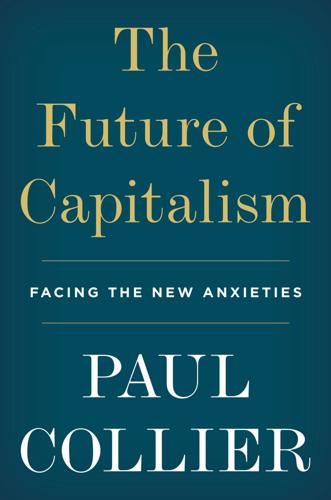
The Future of Capitalism: Facing the New Anxieties
by
Paul Collier
Published 4 Dec 2018
This yields advantages in depth of knowledge, but the present task spans several of these silos. This book has only been possible because I have learned from collaborations with an exceptionally wide range of specialists of world-renown. The new social divergence is partly driven by changes in social identities; from George Akerlof, I have learned the new psycho-economics of how people behave in groups. It is partly driven by globalization gone wrong; from Tony Venables, I have learned the new economic dynamics of metropolitan agglomeration and why provincial cities can implode. It is partly driven by the deteriorating behaviour of firms; from Colin Mayer, I have learned what can be done about this loss of purpose.
…
By joining them up into a causal chain, actions that are not in our immediate self-interest may then look rational, creating enlightened self-interest. At its best, this expands our knowledge. At its worst, it creates a rupture between reality and what we believe – narratives as ‘fake news’.15 True or false, stories are powerful. In their devastating analysis of the financial crisis, two Nobel Laureates, George Akerlof and Robert Shiller, conclude that ‘stories no longer merely explain the facts, they are the facts’.16 What is true of financial crises turns out also to apply to the outbreak of mass violence. New research finds that the best way of predicting such outbreaks is to monitor the narratives circulating in the media.17 The three types of narrative – belonging, obligation and causality – fit together to forge a web of reciprocal obligations.
…
A world filled only by economic man would not be the triumphantly functional paradise envisaged by simple economics textbooks, where selfishness is apparently all that is needed. Those textbooks presuppose a society in which rules have already been agreed and are respected. ECON 101 starts where SOC PSY 999 and POL SCI 999 finish. Economists are belatedly recognizing this: the pioneers have been George Akerlof and his co-author Rachel Kranton.20 But as it catches up, economics also brings some useful insights. One such recent insight, with huge implications, concerns the evolution of ethical norms. It comes from Tim Besley, who takes his inspiration from biology: norms, like genes, get transmitted from parents to children.21 But the process looks very different.

How Markets Fail: The Logic of Economic Calamities
by
John Cassidy
Published 10 Nov 2009
.”: Binmore, Game Theory, 67. 12. HIDDEN INFORMATION AND THE MARKET FOR LEMONS 151 “I belonged to . . .”: From George Akerlof’s Nobel autobiography, available at http://nobelprize.org/nobel_prizes/economics/laureates/2001/akerlof-autobio.html. 152 “a major reason as to why . . .”: George Akerlof, “Writing ‘The Market for Lemons’: A Personal and Interpretive Essay,” available at http://nobelprize.org/nobel_prizes/economics/articles/akerlof/index.html. 153 “[M]ost cars traded . . .”: George Akerlof, “The Market for ‘Lemons’: Quality Uncertainty and the Market Mechanism,” Quarterly Journal of Economics 84 (1970): 489. 154 “was potentially an issue . . .”: Akerlof, “Writing ‘The Market for Lemons.’ ” 155 “marginally attached”: Bureau of Labor Statistics, Issues in Labor Statistics, Summary 90–04 (April 2009): 1. 156 “it is quite possible . . .”: Akerlof, “The Market for ‘Lemons,’ ” 494. 157 2006 health care spending: “National Health Spending in 2006: A Year of Change for Prescription Drugs,” Health Affairs 27, no. 1 (2008): 14. 158 “The most obvious . . .”: Kenneth J.
…
In Haight-Ashbury, a run-down neighborhood of cheap apartments and vacant buildings just east of Golden Gate State Park, a vibrant subculture was developing around marijuana, LSD, and the psychedelic music of Jefferson Airplane and the Grateful Dead, two local bands; in Candlestick Park, out near the airport, which was then home to the San Francisco Giants football team, the Beatles played what turned out to be their final concert before paying fans; across the water in Oakland, Bobby Seale and Huey P. Newton were founding the Black Panther Party. In nearby Berkeley, George Akerlof, a twenty-six-year-old graduate of MIT’s prestigious Ph.D. program in economics, was starting his teaching career. From early childhood, Akerlof had appeared destined for academia. His father, who emigrated from Sweden to the United States in the 1920s, was a chemistry professor. His mother, who met his father while she was in graduate school, came from a bookish family of German Jews.
…
But Keynes, as he stressed in his 1937 paper, was primarily concerned not with wage rigidity, which he used mainly as an analytical device, but with how the economy operates in an environment of irreducible uncertainty about the future, populated by individuals who don’t know very much and are, therefore, susceptible to peer pressure and other inchoate factors such as psychology. As every economics major knows, and as George Akerlof and Robert Shiller have recently reminded us, Keynes said that “animal spirits,” or the “spontaneous urge to action rather than inaction,” play an important role in economic behavior. Seizing on these statements, critics of Keynes have suggested that his theories depend on mass irrationality.
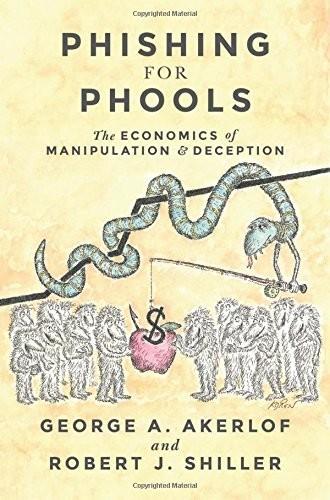
Phishing for Phools: The Economics of Manipulation and Deception
by
George A. Akerlof
,
Robert J. Shiller
and
Stanley B Resor Professor Of Economics Robert J Shiller
Published 21 Sep 2015
Phishing for Phools Phishing for Phools THE ECONOMICS OF MANIPULATION AND DECEPTION GEORGE A. AKERLOF AND ROBERT J. SHILLER Princeton University Press • PRINCETON AND OXFORD Copyright © 2015 by Princeton University Press Published by Princeton University Press, 41 William Street, Princeton, New Jersey 08540 In the United Kingdom: Princeton University Press, 6 Oxford Street, Woodstock, Oxfordshire OX20 1TW press.princeton.edu Jacket illustration © Edward Koren. Jacket design by Jason Alejandro. “(How Much Is That) Doggie in the Window?” Written by Bob Merrill. Copyright © 1953, 1981 Golden Bell Songs.
…
Frank and Ben Bernanke also refer to this image in Principles of Macroeconomics (New York: McGraw Hill, 2003). 4. See Cinnabon, Inc., “The Cinnabon Story,” accessed October 31, 2014, http://www.cinnabon.com/about-us.aspx. 5. Ibid. 6. “Cinnabon,” Wikipedia, accessed October 22, 2014, http://en.wikipedia.org/wiki/Cinnabon. 7. Email from Stefano DellaVigna to George Akerlof, October 25, 2014. 8. International Health, Racquet, and Sportsclub Association, “Industry Research,” accessed October 22, 2014, http://www.ihrsa.org/industry-research/. 9. Stefano DellaVigna and Ulrike Malmendier, “Paying Not to Go to the Gym,” American Economic Review 96, no. 3 (June 2006): 694–719.
…
Paul Goldberger, “The Shadow Building: The House That Goldman Built,” New Yorker, May 17, 2010, accessed October 22, 2014, http://www.newyorker.com/magazine/2010/05/17/shadow-building. 21. We are grateful to Zoltan Pozsar for sharing with us his insights regarding the dependence of banking arrangements on firms’ worries regarding large haircuts on conventional deposits at commercial banks if the bank should default. Source: Private conversations with George Akerlof at the International Monetary Fund in 2010–11. 22. Catherine Clifford and Chris Isidore, “The Fall of IndyMac,” Cable News Network, July 13, 2008, accessed December 1, 2014, http://money.cnn.com/2008/07/12/news/companies/indymac_fdic/. 23. See Ellis, The Partnership, p. 78. 24. Ibid., p. 5. 25.

The Irrational Economist: Making Decisions in a Dangerous World
by
Erwann Michel-Kerjan
and
Paul Slovic
Published 5 Jan 2010
Chapter 30 Kunreuther: Reflections and Guiding Principles for Dealing with Societal Risks 1 Howard Kunreuther and Erwann Michel-Kerjan, At War with the Weather: Managing Large-Scale Risks in a New Era of Catastrophes (Cambridge, MA: MIT Press, 2009). 2 Howard Kunreuther, with R. Ginsberg, L. Miller, P. Sagi, P. Slovic, B. Borkan, and N. Katz, Disaster Insurance Protection: Public Policy Lessons (Wiley Interscience, 1978). ABOUT THE CONTRIBUTORS George A. Akerlof, University of California, Berkeley George Akerlof is the Daniel E. Koshland, Sr., Distinguished Professor of Economics at the University of California, Berkeley. He was educated at Yale and the Massachusetts Institute of Technology. In 2001, Professor Akerlof received the Nobel Prize in Economic Science; he was honored for his theory of asymmetric information and its effect on economic behavior.
…
Stimulated by creative conceptual, methodological, and empirical work by the more senior authors in The Irrational Economist and many others, including Amos Tversky, Daniel Kahneman, and Richard Thaler, the trickle of studies challenging traditional economic assumptions of rationality became a torrent. Nobel prizes in economics awarded to Herbert Simon in 1978, to George Akerlof in 2001, and to Daniel Kahneman and Vernon Smith in 2002 for their contributions toward understanding the behavioral dynamics of economic decisions further contributed to what has become a revolution in thinking. Today, young scholars, and even those not so young, have become convinced that the secret to improving economic decision making lies in the careful empirical study of how we actually make decisions.
…
“Coping Rationally with Lapses from Rationality,” Eastern Economic Journal (Summer): 251-269. Reprinted in Thomas Schelling, Strategies of Commitment and Other Essays (Cambridge, MA: Harvard University Press, 2006.) 2 Berserk Weather Forecasters, Beauty Contests, and Delicious Apples on Wall Street GEORGE A. AKERLOF AND ROBERT J. SHILLER No one has ever made rational sense of the wild gyrations in financial prices, such as stock prices.1 These fluctuations are as old as the financial markets themselves. And yet these prices are essential factors in investment decisions, which are fundamental to the economy.
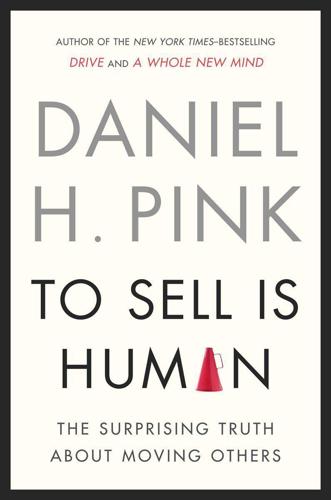
To Sell Is Human: The Surprising Truth About Moving Others
by
Daniel H. Pink
Published 1 Dec 2012
Rosabeth Moss Kanter, “The ‘White Coat’ Economy of Massachusetts,” Boston Globe, May 9, 2006; Derek Thompson, “America 2020: Health Care Nation,” Atlantic, August 17, 2010, available at http://www.theatlantic.com/business/archive/2010/08/america-2020-health-care-nation/61647/. CHAPTER 3. FROM CAVEAT EMPTOR TO CAVEAT VENDITOR 1. George A. Akerlof, “Writing ‘The Market for “Lemons’”: A Personal and Interpretive Essay,” available at http://www.nobelprize.org/nobel_prizes/economics/laureates/2001/akerlof-article.html. 2. George A. Akerlof, “The Market for ‘Lemons’: Quality Uncertainty and the Market Mechanism,” Quarterly Journal of Economics 84, no. 3 (August 1970): 488–500. 3. Ibid, 489. 4. Joe Girard with Stanley H. Brown, How to Sell Anything to Anybody (New York: Fireside, 2006; 1977), 6. 5.
…
It turns out that these two word clouds, taken together, can help us puncture one of the most pervasive myths about selling in all its forms. The beliefs embedded in that first image—that sales is distasteful because it’s deceitful—aren’t so much inherently wrong as they are woefully outdated. And the way to understand that is by pulling back the layers of that second image. Lemons and Other Sour Subjects In 1967, George Akerlof, a first-year economics professor at the University of California, Berkeley, wrote a thirteen-page paper that used economic theory and a handful of equations to examine a corner of the commercial world where few economists had dared to tread: the used-car market. The first two academic journals where young Akerlof submitted his paper rejected it because they “did not publish papers on topics of such triviality.”1 The third journal also turned down Akerlof’s study, but on different grounds.
…
For example, you can enliven question pitches, one-word pitches, and rhyming pitches by accompanying them with a single photograph or illustration that captures your idea. As digital communication relies less on text and more on images, your subject line and Twitter pitches can link to a compelling visual. You can even use props. For instance, if George Akerlof, the economist I discussed in Chapter 3, were pitching his idea about the cascading consequences of information asymmetry, he might hold up a lemon. Likewise, video offers a way to combine the efficiency of electronic communication with the intimacy of seeing another person’s face and hearing her voice.

Never Let a Serious Crisis Go to Waste: How Neoliberalism Survived the Financial Meltdown
by
Philip Mirowski
Published 24 Jun 2013
Its founder, Kalle Lasn, has asserted, “What we’re trying to do is pioneer a new form of social activism using all the power of the mass media to sell ideas rather than products”; its website proclaims, “The purpose of life is not to find yourself, but to lose yourself.”5 More neoliberal sentiments would be hard to find. The website also has a set of pages devoted to economics; under the rubric “Meet the Mavericks” it profiled Paul Samuelson, George Akerlof, Joseph Stiglitz, and Herman Daly. Kalle Lasn Associates has also published an anti-textbook entitled Meme Wars: The Creative Destruction of Neoclassical Economics which contains contributions by George Akerlof and Joseph Stiglitz. At least the graphics were radical. Similar ideas were promoted in the curiously titled Occupy Handbook, which included chapters by Raghuram Rajan, Tyler Cowen, Martin Wolf, David Graeber, Jeffrey Sachs, and Robert Shiller.6 Besotted by the millenarian idea of starting anew, and lacking any sense of the history of protest and political organization, both neoliberals and neoclassical economists rapidly addled whatever political curiosity and radical inclinations that the well-intentioned protestors might have had.
…
This, in turn, led to Sissyphyssian task of shoring up whatever was left of the concepts of “agency” and “preference.” For some, identity came from imposition of further variables of “self-confidence” and self-reputation read through the eyes of others—neoliberal prescriptions par excellence (see Benabou and Tirole). Another economist we shall encounter later in our survey of crisis theories, George Akerlof, purported to concoct a neoclassical theory of identity by stuffing the utility function with even more arbitrary variables. This version of the “individual” seeks to reduce anxiety-creating cognitive dissonance induced by the behavior of others whose actions don’t conform to the social categories assigned to them—it smacked of nothing more than teen angst blown up to grand levels of utilitarian generalization, an infantilization of Homo economicus.
…
The beauty of this narrative is that it mentions some of the major bugaboos of the left, but deftly subordinates them to the time-honored litany that the markets worked as they should, and it was all, in the final analysis, the fault of the government.41 This ingenious commingling of complaints about worsening income distribution and rapacious bankers with what is at bottom a unilateral denial that economists got anything wrong has been so effective that it often has inserted Rajan into critical leftish campaigns where the audience was oblivious to the true character of the analysis.42 I don’t want to especially pick on Chicago in this book; Berkeley’s Christina Romer, Obama’s first head of his Council of Economic Advisors, was just as embarrassing.43 Nevertheless, the sheer density of denial per square economist at Chicago does raise a more interesting issue, given voice by Donald Westbrook and others: “No doubt World War II would have occurred without Martin Heidegger, Carl Schmitt or the other Nazi intellectuals, but it is not so clear that the crisis could have occurred without the Chicago School of neoclassical economics.” Far from being the conventional generic blanket disparagement of “freshwater economics” (such as that spread by Paul Krugman, Brad DeLong, George Akerlof, and others), this points to the fact that Chicago was the prime initial incubator for modern finance theory, which has indeed provided direct intellectual inspiration and justification for most of the so-called innovation in financial derivatives and automated equity trading of the last three decades.
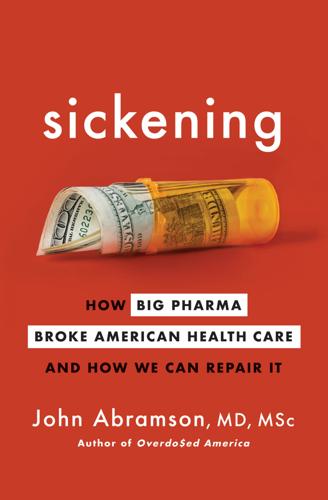
Sickening: How Big Pharma Broke American Health Care and How We Can Repair It
by
John Abramson
Published 15 Dec 2022
Why doctors are so willing to ignore this warning, leaving them and their patients vulnerable to the manipulations of the drug industry, is the subject of the next chapter. 7 Manufacturing Belief Modern economics inherently fails to grapple with deception and trickery. People’s naïveté and susceptibility to deception have been swept under the rug. — NOBEL PRIZE–WINNING ECONOMISTS GEORGE AKERLOF AND ROBERT SHILLER, Phishing for Phools That drug companies bias the journal articles reporting their clinical trial results and the clinical practice guidelines based on those reports is not in question. Why highly trained American doctors fall for this crass commercialism definitely is in question.
…
This requires going beyond the paradigm of evidence-based medicine to the psychology that lies behind doctors’ processing of new medical information. That psychology leaves them just as susceptible as ordinary consumers are to manipulation by skillful marketing. In 2013, two Nobel Prize–winning economists, George Akerlof and Robert Shiller, were writing Phishing for Phools: The Economics of Manipulation and Deception. Their book debunks the myth of the utopian market being magically overseen by an “invisible hand.” In it, the authors state that Adam Smith’s unregulated market is not in fact a mechanism for optimally distributing goods and services to the maximum benefit of society; rather, it is a way to exploit human weaknesses (and thus engage in “phishing”).
…
Other editorial assistance for which I am grateful was provided by Sonni Efron, Will Murphy, and David Newman. The investigative journalist Jeanne Lenzer deserves special mention; her work showed me, more than two decades ago when I was a full-time family physician, that integrity, courage, and persistence can stand up to even the most powerful forces. Many thanks to George Akerlof, who kindly (and patiently) assisted me in integrating the principles of behavioral economics into health-care professionals’ vulnerability to pharmaceutical marketing. Special gratitude goes to the hardworking and thoughtful behind-the-scenes curators of several blogs and listservs that provide real-time discussion of unfolding issues related to corporate distortion of medical knowledge and our health care: David Healy (davidhealy.org), Roy Poses (hcrenewal.blogspot.com), and my colleagues at the Biojest listserv.

The Euro: How a Common Currency Threatens the Future of Europe
by
Joseph E. Stiglitz
and
Alex Hyde-White
Published 24 Oct 2016
More modern theories emphasize imperfectly informed and often irrational consumers and firms operating in markets with imperfect and asymmetric information, where profits can typically be enhanced more by exploiting these market imperfections than in any other way. Nobel Prize–winning economists George Akerlof and Rob Shiller document this widespread behavior in their brilliant book Phishing for Phools—using the term for Internet scammers who systematically “fish for fools.”16 With financial products moving ever more easily throughout Europe, the opportunity to take advantage of a whole continent of people who might be duped into buying financial products that were not suitable for them proved irresistible.
…
A Tract on Monetary Reform (London: Macmillan, 1923), p. 80. 26 For instance, they do not build in, or build in in a fully adequate way, essential market imperfections—for example, the irrationality of financial markets, as emphasized by the research of Nobel Prize–winning economist Rob Shiller (see, for instance, his book Irrational Exuberance [Princeton, NJ: Princeton University Press, 2000]) or the pervasive imperfections of information (as emphasized by Nobel Prize–winning economists Michael Spence, George Akerlof, and myself). For a more extensive discussion of the failures of the standard macroeconomic models, see, for instance, Stiglitz, “Rethinking Macroeconomics: What Failed and How to Repair It,” Journal of the European Economic Association 9, no. 4 (2011): 591–645; and Stiglitz, “Stable Growth in an Era of Crises: Learning from Economic Theory and History,” Ekonomi-tek 2, no. 1 (2013): 1–38 (originally delivered as keynote lecture to the Turkish Economic Association, Izmir, November, 2012).
…
I then showed that similar effects arise as a result of imperfect information: lowering wages leads to a lower quality and less motivated labor force. This research was part of the work that provided the basis of the Nobel Prize that was awarded to me. There is now a huge literature on the subject, providing empirical verification as well. See, for instance, George A. Akerlof and Janet L. Yellen, eds., Efficiency Wage Models of the Labor Market (New York: Cambridge University Press, 1986); and Jeremy Bulow and Laurence Summers, “A Theory of Dual Labor Markets with Application to Industrial Policy, Discrimination, and Keynesian Unemployment,” Journal of Labor Economics 4, no. 3 (1986): 376–414. 21 The combination of austerity and poorly thought-out structural reforms associated with the IMF/Troika programs simply increased this uncertainty.

Economics Rules: The Rights and Wrongs of the Dismal Science
by
Dani Rodrik
Published 12 Oct 2015
This is an important feature of real-world markets. Workers have a better sense of their ability than do employers. Creditors know whether they are likely to default or not, while lenders do not. Buyers of used cars do not know whether they’re buying a lemon, but sellers do. Work by Michael Spence, Joseph Stiglitz, and George Akerlof showed that these types of markets could exhibit a variety of distinctive features, including signaling (costly investment in behavior that has no immediate apparent benefit), rationing (refusal to provide a good or service, even at a higher price), and market collapse. This work earned these three economists a joint Nobel Prize in 2001 and spawned a huge literature that hums along to this day.
…
They are understood today to be an approximation that is valid in a limited context . . . but in this form and in this limited context they have survived for a century and may be expected to survive indefinitely. This is the sort of law of physics that I think corresponds to something as real as anything else we know.” Weinberg, “Sokal’s Hoax,” New York Review of Books 43, no. 13 (August 8, 1996): 11–15. †† In his Nobel address, here’s how George Akerlof described the shift in economic modeling of which he was part: “At the beginning of the 1960s, standard microeconomic theory was overwhelmingly based upon the perfectly competitive general equilibrium model. By the 1990s the study of this model was just one branch of economic theory. Then, standard papers in economic theory were in a very different style from now, where economic models are tailored to specific markets and specific situations.
…
For a good overview of the differences between economists’ and anthropologists’ perspectives, see Pranab Bardhan and Isha Ray, Methodological Approaches in Economics and Anthropology, Q-Squared Working Paper 17 (Toronto: Centre for International Studies, University of Toronto, 2006). 3. For a sampling of this work, see Samuel Bowles, “Endogenous Preferences: The Cultural Consequences of Markets and Other Economic Institutions,” Journal of Economic Literature 26 (1998): 75–111; George A. Akerlof and Rachel E. Kranton Identity Economics: How Our Identities Shape Our Work, Wages, and Well-Being (Princeton, NJ: Princeton University Press, 2010); Alberto Alesina and George-Marios Angeletos, “Fairness and Redistribution,” American Economic Review 95, no. 4 (2005): 960–80; Alberto Alesina, Edward Glaeser, and Bruce Sacerdote, “Why Doesn’t the United States Have a European-Style Welfare State?”
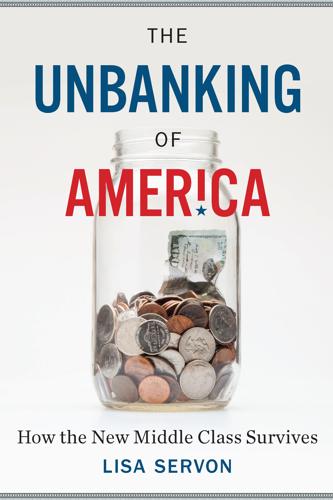
The Unbanking of America: How the New Middle Class Survives
by
Lisa Servon
Published 10 Jan 2017
White, “Why Banks Love Debit Cards Again,” Time, March 28, 2013. http://business.time.com/2013/03/28/why-banks-love-debit-cards-again/ Despite these two huge suits: Pew Charitable Trusts, “Checks and Balances,” p. 3. 34 “have lost an essential tool”: Jessica Silver-Greenberg and Robert Gebeloff, “Arbitration Everywhere: Stacking the Deck of Justice,” New York Times, DealBook blog, October 31, 2015. http://www.nytimes.com/2015/11/01/business/dealbook/arbitration-everywhere-stacking-the-deck-of-justice.html “they tend to do them”: Ibid. George Akerlof and Robert Shiller: George A. Akerlof and Robert Shiller, Phishing for Phools: The Economics of Manipulation and Deception (Princeton, NJ: Princeton University Press), p. xi. 36 made it a common catchphrase: Renee Haltom, “Failure of Continental Illinois,” Federal Reserve History, November 22, 2013. http://www.federalreservehistory.org/Events/DetailView/47 37 “other people’s money”: Other People’s Money is the title of Louis Brandeis’s 1914 treatise.
…
Hackett links this shift to companies’ fear that lawsuits will force them to “abandon lucrative billing practices. . . . When banks make mistakes or do bad things,” Hackett says, “they tend to do them many times and to many people.” Banks are not the only type of business to engage in practices that aren’t in the best interest of consumers. In their book Phishing for Phools, the Nobel Prize–winning economists George Akerlof and Robert Shiller argue that the free market is set up to reward tricksters. Business people, they say, are under pressure to compete and to make the most profit possible. This environment leads them to engage in manipulation and deception. “The economic system,” Akerloff and Shiller write, “is filled with trickery.”
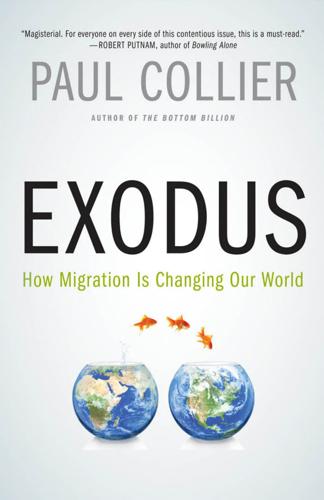
Exodus: How Migration Is Changing Our World
by
Paul Collier
Published 30 Sep 2013
But for a question such as the ethics of migration it is woefully inadequate. The resulting book is an attempt to generate a unified analysis of a wide array of disparate specialist research, across social science and moral philosophy. Within economics my key influences have been the writings of George Akerlof through his innovative ideas on identity, and Frédéric Docquier for his rigorous investigation of the migration process, and especially discussion with Tony Venables both on economic geography and as a sparring partner for the model that is the analytic workhorse of this book. In social psychology I have drawn on discussions with Nick Rawlings and the works of Steven Pinker, Jonathan Haidt, Daniel Kahneman, and Paul Zak.
…
Typically, high productivity depends upon reconciling large size with worker motivation. Economists have long realized that big is productive: large organizations are able to reap economies of scale. But only recently have they developed a convincing analysis of motivation. Incentives are evidently part of the story, but the work of Nobel laureate George Akerlof and Rachel Kranton has opened up a new appreciation of how successful organizations motivate through identity. An effective firm persuades its workers to adopt identities that are conducive to productivity.7 Akerlof’s central idea comes through posing the question “What makes a good plumber?” He argues that the essential step is neither technical training nor incentive pay, but whether the plumber has made the leap of identity: “I am a good plumber.”
…
The conscientious teacher has emigrated; it is the ineffective one who is still in the classroom. It is this ineffective teacher with whom young teachers interact and who sets the norms of what is expected. With fewer “insider” role models to imitate, remaining workers are more likely to choose to self-identify as “outsiders.” Nobel laureate George Akerlof and Rachel Kranton have developed a model that predicts just such an effect. As “insiders” selectively emigrate, those left behind face higher costs of becoming insiders themselves: they would stick out like a sore thumb. But as fewer people choose to become insiders, the productivity of those left behind declines.9 While their model has yet to be tested in poor countries, there is some supporting evidence.

Cogs and Monsters: What Economics Is, and What It Should Be
by
Diane Coyle
Published 11 Oct 2021
This makes the framework of individual utility maximisation rather doubtful, as it assumes fixed preferences known to the individual. Yet in this theoretical world, advertising would not work and impulse purchases could not occur. Some economists incorporate social influences on choice in their work, such as Ed Glaeser, in his research on ‘non-market’ phenomena such as crime waves or obesity (Glaeser and Scheinkman 2000). George Akerlof and Rachel Kranton look at people’s decisions from the perspective of personal identity: Men and women in the United States smoked cigarettes at vastly different rates at the beginning of the twentieth century, but these rates largely converged by the 1980s. Women now smoke just as much as men.
…
The idea of narrative economics has advocates (and narratives as an element in policy are cropping up in other domains such as the natural sciences or AI). Robert Shiller (2017, 967) compares economic narratives to epidemics, infections of the mind. He writes: ‘The field of economics should be expanded to include serious quantitative study of changing popular narratives,’ adding, ‘Narratives can be based on varying degrees of truth.’ Similarly, George Akerlof and Dennis Snower argue that neither conventional nor behavioural economics offers empirically valid general accounts of the way economies develop, whereas considering the role of narratives can account for the realisation of one among a number of indeterminate outcomes: narratives teach social norms, shape individuals’ identities and motivations, and prompt their decisions (Akerlof and Snower 2016).

What's Wrong With Economics: A Primer for the Perplexed
by
Robert Skidelsky
Published 3 Mar 2020
The key to understanding the rational expectations revolution is that mainstream economists believe they have cracked the uncertainty problem. Expectations about the future are simply probability distributions over a sequence of events. Uncertainty is reduced to probability, and can thus be labelled a special case of certainty. Economists like Nobel Laureates George Akerlof (b.1940) and Joseph Stiglitz (b.1943) have pointed to the existence of ‘asymmetric information’ – situations in which one party to a transaction has more information than another: a problem rife in insurance and second-hand car markets.8 But unless such inequalities of information are regarded as inherent, they will be overcome by computer-generated big data.
…
These examples upend the central verity of modern economics, that people always have rational expectations. They often make choices which they ought to know will leave them worse off. Advertisers were exploiting this propensity long before economists started to notice it. In their book, Phishing for Phools (2015), Nobel Laureates George Akerlof (b.1940) and Robert Shiller (b.1946) show, with many examples both amusing and appalling, that misperception and deception are rampant in market economies. ‘Phishing’ is a ‘fraud on the internet in order to glean personal information from individuals’ to get them to do things in the interest of the ‘phisherman’ rather than the ‘phools’.
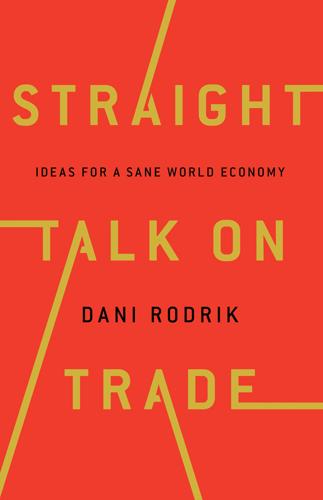
Straight Talk on Trade: Ideas for a Sane World Economy
by
Dani Rodrik
Published 8 Oct 2017
See for example, Alberto Alesina, Guido Cozzi, and Noemi Mantovan, “The Evolution of Ideology, Fairness and Redistribution,” Economic Journal, vol. 122(565), 2012: 1244–1261; Stefano Della Vigna and Ethan Kaplan, “The Fox News Effect: Media Bias and Voting,” Quarterly Journal of Economics, vol. 122(3), 2007: 1187–1234; and David Yanagizawa-Drott, “Propaganda and Conflict: Theory and Evidence from the Rwandan Genocide,” Quarterly Journal of Economics, vol. 129(4), November 2014. 15. George Akerlof and Rachel Kranton, “Economics and Identity,” Quarterly Journal of Economics, vol. 115(3), 2000: 715–753; George Akerlof and Rachel Kranton, “Identity and the Economics of Organizations,” Journal of Economic Perspectives, vol. 19(1), 2005: 9–32. 16. Martin Gilens and Benjamin I. Page, “Testing Theories of American Politics: Elites, Interest Groups, and Average Citizens,” Perspective on Politics, vol. 12(3), September 2014: 564–581. 17.
…
For example, the partisan-politics literature in macroeconomics endows political parties with explicit ideologies, typically represented as different preference weights on inflation versus unemployment.13 These differences in preferences are typically imposed from outside the model, with little explanation. More recently there has been some work, both at the macro and micro levels, that looks at how ideologies are shaped and develop. These studies examine the formation of political preferences through exposure to societal outcomes, media, or early childhood experiences.14 The work of George Akerlof and Rachel Kranton on the economics of identity is particularly relevant here.15 Akerlof and Kranton consider models where individuals associate themselves with specific social categories and their desired behavior derives from the attributes of those categories. Workers, for example, may acquire identities that moderate the incentive compatibility constraint vis-à-vis their employers, leading them to behave in greater conformity with the objectives of their firms.
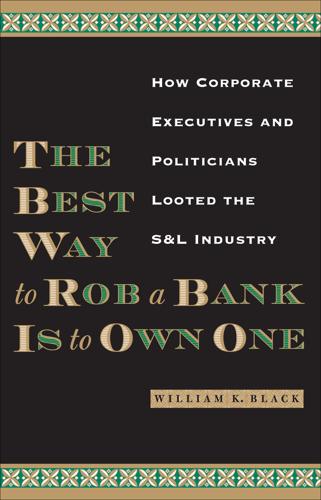
The Best Way to Rob a Bank Is to Own One: How Corporate Executives and Politicians Looted the S&L Industry
by
William K. Black
Published 31 Mar 2005
In sum, the lessons we learned from the debacle were false. The guidance that law and economics professors provided left us more susceptible to control fraud. This book is often critical of particular economists, but I am not dismissive of economics. Indeed, I write in large part to help build a new economic theory of fraud arising from George Akerlof’s classic theory of lemons markets (1970) and Henry Pontell’s work on “systems capacity” limitations in regulation that may increase the risk of waves of control fraud (Calavita, Pontell, and Tillman 1997, 136). This book explains why private market discipline fails to prevent waves of control frauds.
…
Thanks to Jim Leach, Buddy Roemer, Thomas Carper, and the late Henry Gonzalez. You saved the nation billions of dollars by opposing the efforts of the control frauds, but you also saved me from cynicism about elected officials when I had cause to be cynical. James Pierce gave me the opportunity of a lifetime when he asked me to serve as his deputy and introduced me to George Akerlof. Both of you have been leading influences on my research, and your support has been critical. Kitty Calavita, Gil Geis, Paul Jesilow, and Henry Pontell recruited me to come to UC-Irvine for my doctorate in criminology, taught me criminology, and have supported me throughout. I entered as a student and left as a colleague and friend.
…
I have been the immense beneficiary of the team assembled by UT Press to edit the book, Kip Keller and Lynne Chapman. Their care and professionalism is top drawer. Our eldest, Kenny, served as my research assistant. My spouse, June Carbone, author of a book on family law, was an inspiration and someone I could bounce ideas off. Travis Hale and Debra Moore gave me editing assistance. Henry Pontell and George Akerlof served as outside reviewers for the book, and their comments, along with those of Ed Kane, were of great use to me in improving the draft. Kirk Hanson helped me complete the book by allowing me to serve as a visiting scholar at the Markkula Center for Applied Ethics. Thank you all. And, yes, the remaining errors are mine alone. 1.
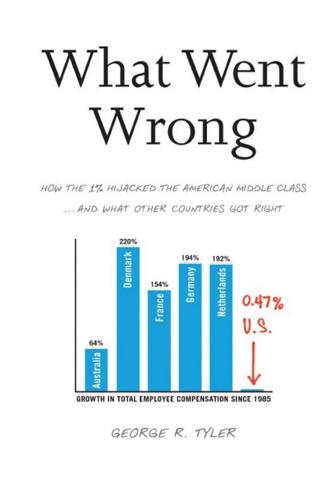
What Went Wrong: How the 1% Hijacked the American Middle Class . . . And What Other Countries Got Right
by
George R. Tyler
Published 15 Jul 2013
CHAPTER 6 A CULTURE OF SELFISHNESS “Stock-based compensation plans are often nothing more than legalized front-running, insider trading, and stock-watering all wrapped up in one package.”1 ALBERT MEYER, Founder, Bastiat Capital “If a worker’s rewards are based on only some of her tasks, that is where she will concentrate her effort. For example, a CEO whose compensation depends on the current stock price will try to run up the current stock price, but will ignore the long-term consequences.”2 GEORGE AKERLOF and RACHEL E. KRANTON, Identity Economics, 2010 “If the absolute value of every top earner’s take-home pay were to fall by half, the same executives would end up in the same jobs as before.”3 ROBERT H. FRANK, Cornell University “Management has become obsessed with share price. By focusing on short-term moves in stock prices, managers are eroding the long-term value of their franchises.”4 JESSE EISINGER, New York Times, June 28, 2012 There are two secrets about shareholder capitalism: First, shareholder capitalism presumes that firms maximize profits.
…
Such practices are apparently legal in most instances.68 Even worse, the prospect of giant rewards from options incentivizes fraud in a US business community already struggling mightily with ethical issues. Drawing on the sociologist Max Weber’s work on the theory of the firm as a collective that reacts rationally to prevailing systems, Nobel Laureate behavioral economist George A. Akerlof and Rachel E. Kranton explained it this way: “The more a CEO’s compensation is based on stock options, for example, the greater is the incentive to maximize the price at which to cash in. There are at least two ways to do this: one is by increasing the firm’s true value; another is by creatively managing the firm’s books.
…
A core element of successful companies in many environments is firm-specific human capital. Firms may build on this strength by committing to their employees in the long run. This approach traditionally formed one of the backbones of many European economies such as the German one.”72 The work of American researchers like McInnes and George Akerlof provide a theoretical foundation for the relational work model in the family capitalism countries featuring close collaboration. As early as 1982, Akerlof had concluded that exceptional worksite performance hinges on a complicated matrix of one’s own wages and those of colleagues, plus willingness of employers to treat employees as insiders.
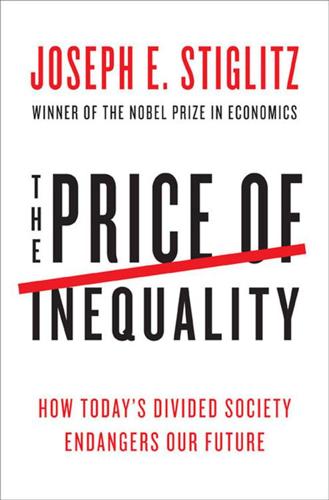
The Price of Inequality: How Today's Divided Society Endangers Our Future
by
Joseph E. Stiglitz
Published 10 Jun 2012
Robert Solow, one of my thesis advisers, and with whom I wrote an early paper on distribution and macroeconomic behavior, had written his own thesis on inequality. The influence of Paul Samuelson, another of my thesis advisers, will be apparent in the discussion of globalization in chapter 3. My first published papers on the subject were written with my fellow graduate student George Akerlof, with whom I shared the 2001 Nobel Prize. At the time I went to Cambridge University, as a Fulbright scholar in 1965–66, the distribution of income was a major focus of debate, and I owe debts to the late Nicholas Kaldor, David Champernowne, and Michael Farrell, and especially to Sir James Meade and Frank Hahn.
…
An alternative interpretation, which I discuss briefly in chapter 5, is that of Thomas Frank, in his What’s the Matter with Kansas? How Conservatives Won the Heart of America (New York: Metropolitan Books, 2004). 20. This chapter of my thesis was published as “The Distribution of Income and Wealth Among Individuals,” Econometrica 37, no. 3 (July 1969): 382–97. Other papers growing out of this early work include two with George Akerlof, with whom I shared the 2001 Nobel Prize, “Investment, Income, and Wages” (abstract), Econometrica 34, no. 5, suppl. issue (1966):118, and “Capital, Wages and Structural Unemployment,” Economic Journal 79, no. 314 (June 1969): 269–81; one with my thesis supervisor, Robert Solow, “Output, Employment and Wages in the Short Run,” Quarterly Journal of Economics 82 (November 1968): 537–60; and another chapter from my thesis, “A Two-Sector, Two Class Model of Economic Growth,” Review of Economic Studies 34 (April 1967): 227–38. 21.
…
Of course, for a long time, Jim Crow laws reinforced market processes of discrimination. Inadequate public education ensured that those from certain groups began life with a handicap–and that problem continues today. 46. See, e.g., Dilip Abreu, “On the Theory of Infinitely Repeated Games with Discounting,” Econometrica 56, no. 2 (March 1988): 383–96. See also George A. Akerlof, “Discriminatory, Status-Based Wages among Tradition-Oriented, Stochastically Trading Coconut Producers,” Journal of Political Economy 93, no. 2 (April 1985): 265–76. 47. This is another example of the notion of reflexivity discussed in chapter 5. Psychological phenomena, where individuals’ perceptions are affected by their beliefs, reinforce the result—a phenomenon also discussed further in chapter 5.

The Undercover Economist: Exposing Why the Rich Are Rich, the Poor Are Poor, and Why You Can Never Buy a Decent Used Car
by
Tim Harford
Published 15 Mar 2006
Jerome could rush to buy health insurance if and only if they knew they were ill, who would want to insure them? Inside information This is more than an idle question. Economists have known for a while that if one party to a deal has inside information and the other does not, then markets may not work as well as we would hope. That makes intuitive sense. But it wasn’t until an American economist named George Akerlof published a revolutionary paper in 1970 that the profession realized quite how profound and dramatic the problem might be. Akerlof chose as his example the market for used cars and showed that even if the market is highly competitive, it simply cannot work if sellers know a lot about the quality of their cars and buyers do not.
…
Worse, 15 percent of citizens have no insurance coverage of any kind—which should be a stunning statistic for the world’s richest economy, but probably isn’t because it has been lamented for so many years. Compare it to Germany, where 0.2 percent of the population has no coverage, or to Canada or Britain, where everyone is provided for by the government. Given what we have learned from George Akerlof and his lemons, the troubles of the US health-care system should be no surprise. We should expect a voluntary private insurance system to be patchy. A few people who have more pressing costs than health insurance (for example, the young poor, who have little money and rightly expect that they are unlikely to become seriously ill) will drop out of the system.
…
The tax bill paid by American drivers from the US Department of Transportation, http://www.fhwa.dot.gov/ohim/2000hfbt.pdf. The effect of London’s congestion charge on traffic levels is described in “Congestion Charging Six Months On,” Transport for London, October 2003. Chapter 5 The classic article on lemons and asymmetric information is George Akerlof, “The Market for ‘Lemons’: Quality Uncertainty and the Market Mechanism,” Quarterly Journal of Economics (August 1970). Akerlof ’s book An Economic Theorist’s Book of Tales (Cambridge: Cambridge University Press, 1984) contains many of his most interesting papers up to that date—not only the lemons paper but, for instance, economic theories of the caste system.
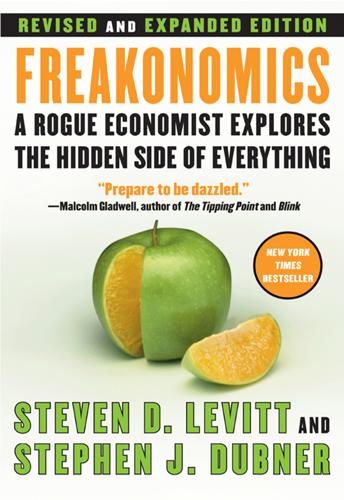
Freakonomics: A Rogue Economist Explores the Hidden Side of Everything
by
Steven D. Levitt
and
Stephen J. Dubner
Published 11 Apr 2005
Stokes, 1914). THE BRAND-NEW USED-CAR CONUNDRUM: This thesis, and indeed much of what we think today about “asymmetric information,” stems from a paper that George A. Akerlof wrote during his first year as an assistant professor at Berkeley in 1966–67. It was rejected three times—two of the journals told Akerlof that they “did not publish papers on topics of such triviality,” as he later recalled—before being published as George A. Akerlof, “The Market for ‘Lemons’: Quality Uncertainty and the Market Mechanism,” Quarterly Journal of Economics, August 1970. Some thirty years later, the paper won Akerlof the Nobel Prize in Economics; he is widely considered the nicest man to have ever won the award.
…
But if anyone ever needs a reason to be deeply skeptical of Wikipedia’s dependability, I urge you to click on the entry for “List of Economists,” which is introduced thusly: “This is an alphabetical list of well-known economists. Economists are scholars conducting research in the field of economics.” It is true that the list includes George Akerlof and Paul Samuelson and Jeffrey Sachs and even Steve Levitt. But if you want to see how truly pathetic Wikipedia can be, check out the sixth “economist” listed under “D”: that’s right, yours truly. Although some of my best friends are economists, I am very much not. (Note: soon after I posted this entry, a reader was helpful/mischievous enough to quickly amend the Wikipedia entry, deleting my name.)
…
Social scientists sometimes talk about the concept of “identity.” It is the idea that you have a particular vision of the kind of person you are, and you feel awful when you do things that are out of line with that vision. That leads you to take actions that are seemingly not in your short-run best interest. In economics, George Akerlof and Rachel Kranton popularized the idea. I had read their papers, but in general have such a weak sense of identity that I never really understood what they were talking about. The first time I really got what they meant was when I realized that a key part of my identity was that I was not the kind of person who would cut in line to shorten my commute, even though it would be easy to do so, and even though it seemed crazy to wait 15 minutes in this long line.

Fixed: Why Personal Finance is Broken and How to Make it Work for Everyone
by
John Y. Campbell
and
Tarun Ramadorai
Published 25 Jul 2025
As Adam Smith famously put it, “It is not from the benevolence of the butcher, the brewer, or the baker that we expect our dinner, but from their regard to their own self-interest.”7 When businesspeople compete for the business of alert customers who accurately perceive quality and price, they provide goods and services of each quality demanded at the lowest possible cost. But the same self-interested businesspeople are just as strongly motivated to supply the mistaken demands of confused customers. This pernicious behavior is what the Nobel Prize–winning economists George Akerlof and Robert Shiller call “phishing for phools.”8 The perversion of capitalism in the personal finance system is familiar in a different context. Until about 100 years ago, the marketplace for medicines was competitive and unregulated. As medical knowledge advanced, it became more and more difficult for ordinary people to distinguish legitimate treatments from fraudulent ones and real doctors from quacks.
…
While one might suspect racial animus as a cause for this behavior, Ayres and Siegelman show that the behavior is similar even at minority-owned dealerships and among minority car salespeople. 35. See, for example, Atif Mian, Ludwig Straub, and Amir Sufi, “The saving glut of the rich” (unpublished paper). 36. This is the behavior that Nobel Prize–winning economists George Akerlof and Robert Shiller call “Phishing for Phools” in the title of their 2015 book. 37. Cass Sunstein and the Nobel Prize–winning economist Richard Thaler pioneered the use of subtle changes to the choice architecture of finance and other domains to induce good outcomes for individuals by harnessing their inertia.
…
Steffen Andersen, John Campbell, Kasper Meisner Nielsen, and Tarun Ramadorai, “Sources of inaction in household finance: Evidence from the Danish mortgage market,” American Economic Review 110 (2020): 3184–3230, show that poorer and less educated households are particularly likely to make this mistake. 6. Daniel Gottlieb and Kent Smetters, “Lapse-based insurance,” American Economic Review 111 (2021): 2377–2416, highlight this fact. 7. Adam Smith, The Wealth of Nations, books 1–3, ed. Andrew S. Skinner (Penguin Classics, 2013). 8. George Akerlof and Robert Shiller, Phishing for Phools (Princeton University Press, 2015). 9. These and other examples can be found at “10 evil vintage cigarette ads promising better health,” Healthcare Administration Degree Programs, n.d., https://www.healthcare-administration-degree.net/10-evil-vintage-cigarette-ads-promising-better-health/.
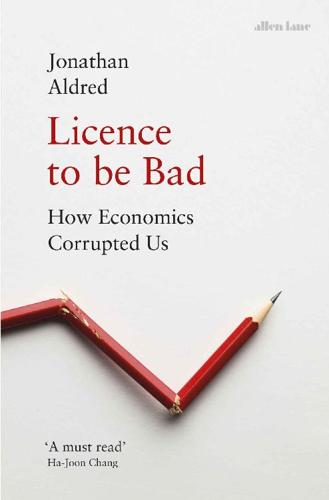
Licence to be Bad
by
Jonathan Aldred
Published 5 Jun 2019
Attempts to trace the source of economic growth find that most of it is due neither to increases in labour productivity nor to investment. Coming from different theoretical perspectives, Nobel laureate economists Robert Solow and Herbert Simon reached the same conclusion: most growth ultimately stems from the economic consequences of advances in knowledge. George Akerlof, another Nobel economist, emphasizes that ‘our marginal products are not ours alone … [they] are due almost entirely to the cumulative process of learning that has taken us from stone-age poverty to twenty-first century affluence’.16 Were it not for ingrained hero myths, this might seem too obvious to state.
…
To be clear, this is not a Marxist or Communist argument about the hidden power of downtrodden workers: Soviet production was hopelessly inefficient largely because it failed to recognize this power. Among modern economists the argument has been pioneered not by Marxists but by two Nobel laureate economists and a subsequent Chair of the US Federal Reserve: George Akerlof, Joseph Stiglitz and Janet Yellen have shown how profits can rise if a firm pays more than the bare minimum to prevent workers from seeking employment elsewhere. If instead the firm pays a substantially higher ‘efficiency wage’, this motivates workers to give their best, maximizing efficiency and productivity.
…
It shapes the questions asked of the data, and how the answers derived from the data are interpreted. Throughout this book we have seen how economic theories and their transformation into formal mathematics shape what we see – and what we don’t. At least two Nobel laureate economists have noted the problem. In Paul Krugman’s words, ‘we just don’t see what we can’t formalize’.12 Similarly, George Akerlof argues that economic analysis is ignored unless it is written up in a research paper, and that can only happen if the analysis is mathematical: ‘What I am worried about most of all, is what we don’t see … the analysis that is never seen, that never becomes a paper … And it can’t become a paper, because that’s not what a paper in economics is all about … we know such vacuums exist.’13 To be fair, some economists have been more radical.

EuroTragedy: A Drama in Nine Acts
by
Ashoka Mody
Published 7 May 2018
Euro-area growth marches to the drum of world trade growth. 439 list of figures xi ACK NOW LEDGME NTS Willy Kiekens, formerly an IMF Executive Director, suggested in a phone conversation soon after I left the IMF that I write a book explaining the euro crisis. He set me off on an amazing journey. My greatest debt is to George Akerlof. He understood what I wanted to write long before I did. Through many lunches over five years, he gave me an opportunity to talk about my findings and ideas. These ideas crystalized at a particularly long lunch in Georgetown in late 2016, when he prodded me on potential titles for the book and then came up with one himself: “EuroTragedy: A Drama in Nine Acts.”
…
But Kohl also chose to scorn economics. Ostmarks were converted to D-marks at midnight on June 30, 1990, and, as a meticulously documented and damning scholarly indictment in early 1991 concluded, “One of the worst and sharpest depressions in European history had begun.”77 Two of the authors of that analysis were George Akerlof (who later received the Nobel Prize for Economics) and Janet Yellen (who became chairman of the Fed). They explained the unfolding disaster. At the unreasonably 80 e u r o t r a g e d y generous conversion rate, East German wages had become far higher than justified by labor productivity (which was around 30 percent that of West German workers).
…
This view that Germany needed serious long-term medicine was made popular by the Economist in June 1999, when it described Germany as “the sick man of Europe.”142 The phrase caught on, and some wondered if Germany was “too sick to be cured.”143 True, German authorities had their homework to do. The East German economy had long-term problems. Despite improvement in productivity, the high initial wages set by the 1:1 conversion of the Ostmark to the D-mark continued to undermine the competitiveness of East German firms, exactly as Professors George Akerlof and Janet Yellen had predicted (see c hapter 2). Hans-Werner Sinn, President of the Munich-based Ifo Institute for Economic Research and a prominent voice in public debate, wrote that unemployment and business insolvencies in eastern Germany were still rising, and that the “flourishing landscapes,” which Chancellor Helmut Kohl had breezily promised, were nowhere to be seen.144 The east remained dependent on “costly subsidies,” requiring a transfer each year of between 4 and 5 percent of West German GDP to the east.145 The overall tax burden had increased to finance the subsidies to eastern Germany. schröder asserts the german national interest 147 West German companies, however, were in relatively good shape.
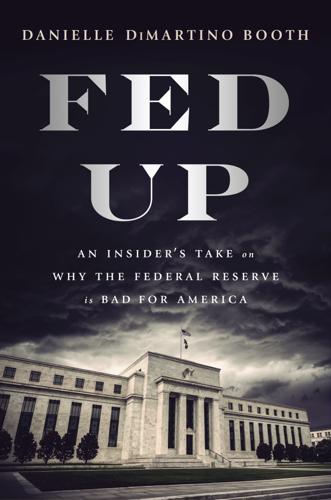
Fed Up: An Insider's Take on Why the Federal Reserve Is Bad for America
by
Danielle Dimartino Booth
Published 14 Feb 2017
Though Yellen voted only every third year, she was still in the game, her sights set on a higher prize. Though Yellen had developed a reputation as a whiz in economic forecasting, she remained oblivious as the housing market in her region imploded on multiple fronts—even more amazing considering the mental firepower at her own breakfast table. Her husband is George A. Akerlof, corecipient of the 2001 Nobel Prize for Economics. (Actually, it’s the Sveriges Riksbank Prize in Economic Sciences in Memory of Alfred Nobel.) Both are quiet, modest academics, their economic and political philosophies closely aligned. “Not only did our personalities mesh perfectly,” Akerlof wrote about their marriage after he won the Nobel Prize, “but we have also always been in all but perfect agreement about macroeconomics.”
…
When combined, the results are magnificent—costs are cut, profits juiced and bonus season becomes the most wonderful time of the year.” It could all be laid at the feet of the Fed, which has essentially become the fourth branch of the U.S. government. The Fed’s balance sheet stood at $4.5 trillion. I wondered what Yellen’s husband, George Akerlof, who had railed against the deficit racked up by the Bush administration, thought about the outrageous balance sheet and Yellen’s obvious role in exacerbating income inequality. Bizarrely, Bernanke’s renunciation of his GOP affiliation was lauded as brave when his self-congratulatory memoir, The Courage to Act, was released in 2015.
…
She described herself as: Clay Chandler, “Blinder, Yellen Named to Fed Board,” Washington Post, April 23, 1994, www.washingtonpost.com/pb/archive/business/1994/04/23/blinder-yellen-named-by-clinton-to-fed-board/86e0e452-6f71-45b5-a02b-b44ea9c9016a/?outputType=accessibility&nid=menu_nav_accessibility forscreenreader. “Who would be prepared to believe”: Binyamin Appelbaum, “The Gorilla and the Maginot Line,” New York Times, April 25, 2013. Her husband is George A. Akerlof: Josh Boak, “A Marriage of Equals: Janet Yellen’s Husband Also a Renowned Economist,” Associated Press, San Jose Mercury News, March 18, 2014. “Not only did our personalities mesh”: Marilyn W. Thompson and Jonathan Spicer, “A Fed Love Story: Janet Yellen Meets Her Match,” Reuters.com, September 29, 2013, www.reuters.com/article/us-usa-fed-yellen-idUSBRE98S07N20130929.
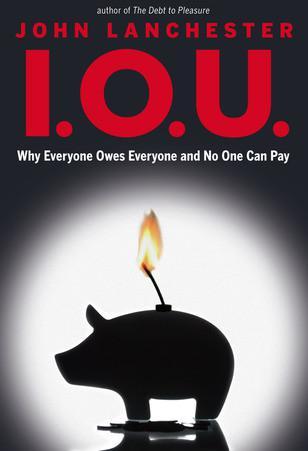
I.O.U.: Why Everyone Owes Everyone and No One Can Pay
by
John Lanchester
Published 14 Dec 2009
It needs a little basic financial knowledge to follow her account, but if you have that, Fool’s Gold reads like a thriller—written by someone who was not just following the story but predicted its outcome. 5 Testimony to the Senate Committee on Agriculture, Nutrition and Forestry, 30 July 1998. CHAPTER THREE: BOOM AND BUST 1 I’m indebted to a piece by Steven Malanga in City Journal: www.city-journal.org/2009/19_2_homeownership.html. 2 There is an excellent discussion of Enron and the impact of frauds in George Akerlof and Robert Shiller’s book Animal Spirits: How Human Psychology Drives the Economy, and Why It Matters for Global Capitalism. CHAPTER FOUR: ENTER THE GENIUSES 1 Again, I’m deeply indebted to Gillian Tett’s account of the CDO industry. 2 Richard A. Posner, A Failure of Capitalism. I don’t agree with all of Posner’s analysis, but it is superbly clear and his book is well worth reading as an account of the financial crisis being based on what one might call rational mistakes. 3 Tett, Fool’s Gold, p. 182. 4 Richard Bitner, Confessions of a Subprime Lender: An Insider’s Tale of Greed, Fraud, and Ignorance, has been a great help to me in understanding the bad lending which underlay the crisis. 5 “Bank Accused of Pushing Mortgage Deals on Blacks,” The New York Times, June 6, 2009. 6 “US Seeks Culprits for Subprime,” Financial Times, August 8, 2007.
…
“Most, probably, of our decisions to do something positive, the full consequences of which will be drawn out over many days to come, can only be taken as the result of animal spirits—a spontaneous urge to action rather than inaction, and not as the outcome of a weighted average of quantitative benefits multiplied by quantitative probabilities.” In their book Animal Spirits, George Akerlof and Robert Shiller appropriated the term to apply to the whole area of emotion and confidence in economics, and it’s in that spirit that I’m using the term here. *This is an oversimplification, because, as the current crisis has shown, central banks can also print money and do so via a number of mechanisms such as the new favorite, “quantitative easing.”

13 Bankers: The Wall Street Takeover and the Next Financial Meltdown
by
Simon Johnson
and
James Kwak
Published 29 Mar 2010
Leading businesspeople—often selected for their personal relationships or political skills rather than their management ability—focus on saving their most prized possessions. Facing shorter time horizons, executives care less about the long-term value of their firms and more about their friends and themselves. As George Akerlof and Paul Romer wrote in their classic paper on “looting,” businesspeople will profit from bankrupting their own firms when “poor accounting, lax regulation, or low penalties for abuse give owners an incentive to pay themselves more than their firms are worth and then default on their debt obligations.”34 In Russia, as in most emerging market crises, there was a sharp increase in “tunneling”—borderline illegal ways for managers and controlling shareholders to transfer wealth from their businesses to their personal accounts.35 Boris Fyodorov, a former Russian minister of finance who struggled against corruption and the abuse of authority, argued that confusion only helps the powerful;36 when there are complicated government bailout schemes, multiple exchange rates, or high inflation, it becomes difficult to monitor the real market prices of assets and protect the value of firms.37 In the extreme confusion caused by a crisis, insiders can take the money (or other valuables) and run, leaving banks, industrial firms, and other entities to collapse.
…
* To create a mortgage-backed security (MBS), a large number of mortgages are pooled together; the mortgage-backed securities each have a claim on the payments made on those mortgages. The net effect is that each investor in the MBS owns a tiny piece of each mortgage, distributing each mortgage’s risk of default among a large number of investors. * The mismanagement and outright fraud that led to these failures were one of the inspirations for George Akerlof and Paul Romer’s paper on “looting.” * Bonds are IOUs issued by companies or governments. They are given ratings by credit rating agencies; those ratings are supposed to reflect the probability that the issuer will default on the IOU. “Investment-grade” bonds are those that are highly rated, meaning that there is a small probability of default.
…
The general U.S. preference for capital account liberalization is clear in its subsequent free trade agreements with Singapore and with Chile, as well as in its negotiations over China’s accession to the World Trade Organization. 33. Aslund, Russia’s Capitalist Revolution, supra note 31, at chapter 5. 34. George A. Akerlof, Paul M. Romer, Robert E. Hall, and N. Gregory Mankiw, “Looting: The Economic Underworld of Bankruptcy for Profit,” Brookings Papers on Economic Activity 24 (1993): 1–73. 35. The classic techniques involve managers transferring assets (below market price) to, or buying inputs (above market price) from, companies they control.
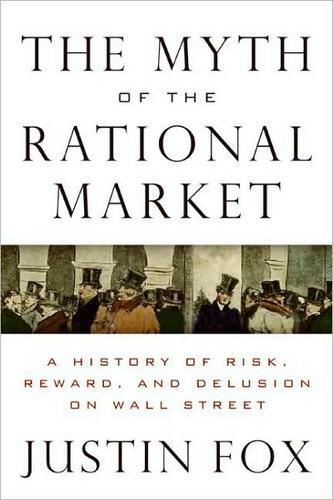
The Myth of the Rational Market: A History of Risk, Reward, and Delusion on Wall Street
by
Justin Fox
Published 29 May 2009
SAMUELSON DID NOT BELIEVE, THOUGH, that his relentless mathematical reasoning was adequate to the challenge of explaining economic reality. He was, recalled Joseph Stiglitz, a Samuelson favorite who got his Ph.D. from MIT in 1967, “quite good at identifying weaknesses in the perfect competition model and not taking it very seriously.” Just identifying weaknesses wasn’t enough for Stiglitz or his fellow student George Akerlof. “If you’re going to say, ‘This model does not provide a good description,’ you need to provide a model that does provide a good description of what’s going on,” said Stiglitz. “George and I saw our job as graduate students as creating the models [of imperfect competition] that Samuelson was telling us about.”
…
In Shefrin’s case it was Santa Clara University in California, where he and colleague Meir Statman began a productive collaboration examining the psychology of investor behavior. Thaler’s Cornell student Werner De Bondt was another important early fellow traveler. Among established economists, George Akerlof was probably the most supportive, teaching a class together with Kahneman at UC–Berkeley for several years in the 1980s. A handful of adventurous young economists at other schools began following the study of less-than-hyperrational decision making in other directions. Thaler’s biggest triumph in those early days, though, was lining up psychologist and foundation executive Eric Wanner to be the intellectual movement’s patron.
…
The Sage Foundation paid for conferences and workshops, handed out grants to young researchers, and even sponsored a regular behaviorist “summer camp” for graduate students and junior professors. The infrastructure of an intellectual movement was being constructed. There were some questions early on about what kind of intellectual movement it would be. In 1982, Thaler cofounded a group called the Society for the Advancement of Behavioral Economics. George Akerlof and Herbert Simon were members of its first advisory board. It soon became apparent that most of those who signed up wanted to lay waste to the entire mathematical, hard-science apparatus that economists had built after World War II. Thaler didn’t want to do that, and he later left the group—which lives on today as a low-profile organization with almost no impact on the economics mainstream.

People, Power, and Profits: Progressive Capitalism for an Age of Discontent
by
Joseph E. Stiglitz
Published 22 Apr 2019
And this lowered private investment bodes poorly for future growth.50 There is a further effect that has already been noted: innovation that should be directed at creating more efficient ways of producing better products is instead directed at better ways of creating and maintaining market power and exploiting consumers. While our financial firms have excelled in the latter arena, they are not alone, as Nobel Prize winners George Akerlof and Robert Shiller demonstrate forcefully in their 2015 book Phishing for Phools: The Economics of Manipulation and Deception.51 We’ve described, for instance, how our cigarette, pharmaceutical, and food companies have profited from producing products that are addictive, and not only not needed, but are also actually harmful.
…
My thinking about climate change has been influenced by Nicholas Stern and John Roome, and my understanding of the legal implications of the deprivation of the rights of children, by Julia Olson and Philip Gregory. I’ve had invaluable conversations with John Attanasio on chapter 8, on reforms in our political system, especially the legal challenges in reducing the influence of money in our politics. Thanks are also due to Martin Wolff, Rana Foroohar, Edmund Phelps, George Soros, George Akerlof, Janet Yellen, Adair Turner, Michael Spence, Andrew Sheng, Kaushik Basu, Winnie Byanyima, and Peter Bofinger (the latter six who together with Rob Johnson, Rodrik, Quah, Medhora, and Pangestu are among the members of the Commission on Global Economic Transformation, sponsored by INET, which I cochair with Spence).
…
Big Data is increasing these asymmetries, and thereby potentially making resource allocations less efficient. 19.Jennifer Valentino-DeVries, Jeremy Singer-Vine, and Ashkan Soltani, “Websites Vary Prices, Deals Based on Users’ Information,” Wall Street Journal, Dec. 24, 2012. 20.To use the colorful language of Nobel Prize winners George Akerlof and Robert Shiller, to “phish for phools.” See Akerlof and Shiller, Phishing for Phools. 21.See Tüfekçi’s TED talk, “We’re Building a Dystopia Just to Make People Click on Ads,” Oct. 27, 2017. 22.Others joined in the suit against Myriad, including the University of Pennsylvania and researchers at Columbia, NYU, Emory, and Yale.

A Little History of Economics
by
Niall Kishtainy
Published 15 Jan 2017
Money for food is important, but so is knowing how to read, being healthy and having the opportunity to participate in the running of society. Real human development is about the growth of freedom itself. CHAPTER 33 Knowing Me, Knowing You At a glittering banquet in Stockholm to celebrate his receipt of the Nobel Prize, the American economist George Akerlof (b. 1940) explained his economic thinking to the guests, who included the king and queen of Sweden: ‘Bring a sad old nag to market. Put a live eel down her throat. She will be frisky.’ Sellers of nags (worn-out old horses) use all sorts of tricks to make their horses look lively. These can have bad consequences, though: ‘On one side of the market are the tricksters.
…
He likened the policy to putting a Ferrari engine into an old banger, and then setting off without bothering about the state of the tyres or the skill of the driver. Information economics is also relevant to the big economic challenges facing advanced economies. Since the Great Depression of the 1930s, economists have been puzzling over what causes unemployment. George Akerlof had been wondering about it since the age of 11 when his father lost his job. (He reasoned that when one father lost his job and so stopped spending, another one would be put out of a job, and so on – the resulting chain reaction turning into a downwards economic spiral. Without knowing it, the schoolboy had discovered one of Keynes’s main principles of economics.)
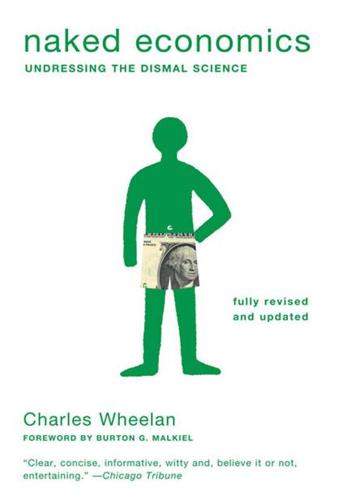
Naked Economics: Undressing the Dismal Science (Fully Revised and Updated)
by
Charles Wheelan
Published 18 Apr 2010
Economics offers insight into policy problems ranging from organ donation to affirmative action. The discipline is intuitive at times and delightfully counterintuitive at others. It is peppered with great thinkers. Some, such as Adam Smith and Milton Friedman, have captured mainstream attention. But others, such as Gary Becker and George Akerlof, have not gotten the recognition outside of academe that they deserve. Too many people who would gladly curl up with a book on the Civil War or a biography of Samuel Johnson have been scared away from a subject that should be accessible and fascinating. Second, many of our brightest citizens are economically illiterate.
…
Clinton ignored what his advisers almost certainly told him about the Yale experiment: It was quietly canceled after five years, both because repayments fell short of projections and because the administrative costs were prohibitive. What we don’t know can hurt us. Economists study how we acquire information, what we do with it, and how we make decisions when all we get to see is a book’s cover. Indeed, the Swedish Academy of Sciences recognized this point in 2001 by awarding the Nobel Prize in Economics to George Akerlof, Michael Spence, and Joseph Stiglitz for their seminal work on the economics of information. Their work explores the problems that arise when rational people are forced to make decisions based on incomplete information, or when one party to a transaction knows more than another. Their insights are relevant to some of our most pressing social issues, from genetic screening to discrimination in the workplace.
…
Information matters, particularly when we don’t have all that we need. Markets tend to favor the party that knows more. (Have you ever bought a used car?) But if the imbalance, or asymmetry of information, becomes too large, then markets can break down entirely. This was the fundamental insight of 2001 Nobel laureate George Akerlof, an economist at the University of California, Berkeley. His paper entitled “The Market for Lemons” used the used-car market to make its central point. Any individual selling a used car knows more about its quality than someone looking to buy it. This creates an adverse selection problem, just as it did with the Hope Scholarships.

Them And Us: Politics, Greed And Inequality - Why We Need A Fair Society
by
Will Hutton
Published 30 Sep 2010
Economists do know, however, that human beings possess one predictable instinct: they will always try to maximise their profit. So economics tries to box as much human reaction as possible into this simple and universal theorem. But economics cannot proceed by ignoring the reality that human beings value – indeed, are passionate about – fairness. As economists Robert Shiller and George Akerlof prove,2 unemployment, recessions, swings in confidence and much other economic activity are simply inexplicable using the standard theorems of economics. But if progress is to be made, there has to be a capacity to model what human beings actually think and value reliably – and to get a grip on apparent inconsistencies.
…
commented David Sarnoff Associates in rejecting a proposal for investment in the radio in the 1920s. 24 Thérèse Delpech (2007) Savage Century: Back to Barbarism, Carnegie Endowment for International Peace. 25 National Intelligence Council (2008) Global Trends 2025: A World Transformed, US Government Printing Office. 26 George Orwell (1938; 1962) Homage to Catalonia, Penguin, p. 221. Chapter Two: Why Fair? 1 Literary analysis and history also testify to the importance of balance: see Margaret Atwood (2008) Payback – Debt and the Shadow Side of Wealth, Bloomsbury. 2 George Akerlof and Robert Shiller (2009) Animal Spirits: How Human Psychology Drives the Economy and Why it Matters for Global Capitalism, Princeton University Press. 3 Some philosophical work is also beginning to take seriously concrete popular conceptions of justice: see David Miller (2001) Principles of Social Justice, Harvard University Press.
…
Steinmueller and Juan Mateos-Garcia (2009) ‘Rebooting Britain’, Nesta Policy Briefing. 6 Rohit Talwar and Tim Hancock (2010) ‘The Shape of Jobs to Come: Possible New Careers Emerging from Advances in Science and Technology (2010–2030)’, report, Fast Future. 7 Ian Brinkley (2008) ‘The Knowledge Economy: How Knowledge is Reshaping the Economic Life of Nations’, report, Work Foundation. 8 Robert Nozick (1974) Anarchy, State, and Utopia, Basic Books, p. 169. 9 Liam Murphy and Thomas Nagel (2002) The Myth of Ownership: Taxes and Justice, Harvard University Press. 10 Will Hutton and Philippe Schneider (2008) ‘The Failure of Market Failure: Towards a 21st Century Keynesianism’, Nesta Provocation. 11 George Akerlof (1970) ‘The Market for Lemons: Quality Uncertainty and the Market Mechanism’, Quarterly Journal of Economics 84 (3): 488–500. 12 Nava Asraf, Colin Camerer and George Loewenstein (2005) ‘Adam Smith,Behavioral Economist’, Journal of Economic Perspectives 19 (3): 131–45. 13 John Coates and Joe Herbert (2008) ‘Endogenous Steroids and Financial Risk Taking on a London Trading Floor’, Proceedings of the National Academy of Sciences 105: 6167–72. 14 Technically, this can be understood as rational behaviour. 15 Studies have sought to limit attention to one potential bias at a time; but several biases might plausibly explain behaviour.

Why Information Grows: The Evolution of Order, From Atoms to Economies
by
Cesar Hidalgo
Published 1 Jun 2015
This helped reveal the information needed for Smith’s “invisible hand” to work. As Hayek wrote, “In a system in which the knowledge of the relevant facts is dispersed among many people, prices can act to coördinate the separate actions of different people.”4 The idea of information also helped economists understand some important market failures. George Akerlof became famous by showing that markets could fail to operate when people had asymmetric information about the quality of the goods they wanted to exchange.5 On a parallel front, Herbert Simon, a polymath who contributed to economics, organizational theory, and artificial intelligence, introduced the idea of bounded rationality, which focused on the behavior of economic actors who had limited information about the world.
…
The existence of quantum information theory, however, does not invalidate the claim that classical information is a concept that works at a range of scales that is unusual for other theories. 4. Friedrich Hayek, “The Use of Knowledge in Society,” American Economic Review 35, no. 4 (1945): 519–530. 5. George A. Akerlof, “The Market for ‘Lemons’: Quality Uncertainty and the Market Mechanism,” Quarterly Journal of Economics 84, no. 3 (1970): 488–500. 6. Claude E. Shannon and Warren Weaver, The Mathematical Theory of Communication (Urbana: University of Illinois Press, 1963), 8. 7. Ibid., 31. 8. The formula for Boltzmann’s entropy (SB) is SB = kB ln(W) where kB is Boltzmann’s constant, which has units of energy over temperature, and W is the number of microstates corresponding to a given macrostate.
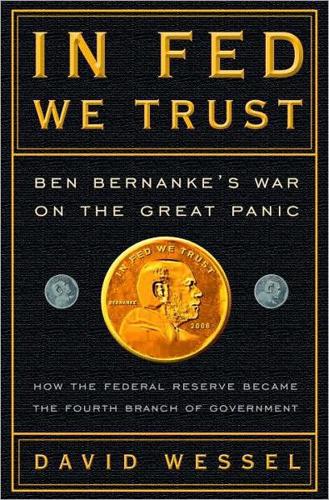
In FED We Trust: Ben Bernanke's War on the Great Panic
by
David Wessel
Published 3 Aug 2009
His research on this subject provided the lens through which he would later view the Great Panic. Beginning with an article published in 1983 in the prestigious American Economic Review and in subsequent research, Bernanke emphasized banks’ role in the economy, employing concepts that later brought Nobel Prizes to Joseph Stiglitz and George Akerlof for their insights into the functioning of markets when one side has more information than the others. Bernanke, among others, contended that banks and other financial intermediaries were “special” because they did more than funnel money from savers to borrowers; they developed expertise in gathering information about industries and borrowers and maintained ongoing relationships with customers.
…
The Fed agreed to put up $180 billion, giving the TALF a total of $200 billion in loans at very sweet terms to offer hedge funds and other big investors to buy securitized consumer loans. The beauty of it was that the Treasury needed only $20 billion from its $700 billion congressionally authorized TARP to get $200 billion into the economy. “TALF shows us there are two sides to creative finance,” wrote Nobel Prize winner George Akerlof along with Robert Shiller, the Yale economist who had predicted the housing bust. “It may have gotten us into this crisis. But its genius may also get us out of it.” The Fed and the Treasury offered investors an additional carrot to borrow this money to buy auto or credit card loans packaged into securities.
…
Bernanke, “The Crisis and the Policy Response,” Federal Reserve Board, January 13, 2009. http://www.federalreserve.gov/newsevents/speech/ bernanke20090113a.htm 254 “What justification is there” John B. Taylor, “The Need to Return to a Monetary Framework,” January 2009. http://www.stanford.edu/∼johntayl/NABE%20Business%20Economics%20Article%20-%20Taylor.pdf 255 “TALF shows us” George A. Akerlof and Robert J. Shiller, Animal Spirits (Princeton, N.J.: Princeton University Press, 2009), 92. 256 “Will we face challenges” Charles I. Plosser, “The Economic Outlook and Some Challenges Facing the Federal Reserve,” Federal Reserve Bank of Philadelphia, January 14, 2009. http://www.philadelphiafed.org/publications/ speeches/plosser/2009/01-14-09_university-of- delaware.cfm 257 “In a committee such as the FOMC” Richard W.
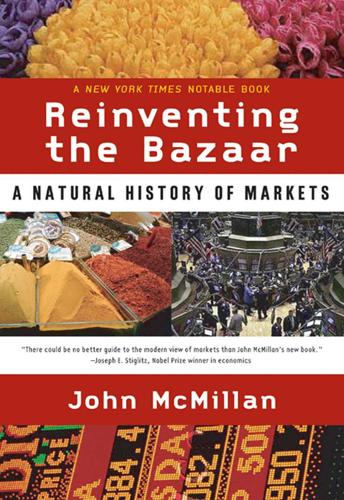
Reinventing the Bazaar: A Natural History of Markets
by
John McMillan
Published 1 Jan 2002
Theorists have opened up the black box of supply and demand and peered inside. Game theory has been brought to bear on the processes of exchange. Examining markets up close, the new economics emphasizes market frictions and how they are kept in check. In 2001, this work received recognition with the award of the Nobel Prize in economics to George Akerlof, Michael Spence, and Joseph Stiglitz for laying the foundation, as the Nobel citation said, “for a general theory of markets with asymmetric information.” Expressed in mathematics and impenetrable jargon, these new ideas reside obscurely in the technical journals. They have, however, a deeply practical content.8 Exchange is “one of the purest and most primitive forms of human socialization,” the sociologist Georg Simmel wrote in 1900; it creates “a society, in place of a mere collection of individuals.”9 A market is a social construction.
…
To boost their profits, wholesalers and vendors would water it down. Buyers could judge the milk’s freshness by smelling it, but they could not judge its butterfat content. As a result of the low quality, the sales of milk declined; per capita consumption fell 25 percent below what it had been twenty years earlier. The economist George Akerlof created a thought experiment to show the logic of how markets malfunction when buyers cannot observe quality.12 Imagine it costs a seller $1.00 to supply a quart of high-quality milk, and $.60 to supply a quart of watered down milk. A typical buyer would willingly pay up to $1.20 for good milk and $.80 for inferior milk.

Culture and Prosperity: The Truth About Markets - Why Some Nations Are Rich but Most Remain Poor
by
John Kay
Published 24 May 2004
And more particularly, for a U.S. Treasury basking in the warm glow of American triumphalism. It became clear that Wolfensohn's continued support for Stiglitz might be at the cost of his own job, and in 1999 Stiglitz returned to research and teaching at Stanford University. In 2001, Stiglitz, along with George Akerlof and Michael Spence, was awarded the Nobel Prize for work on markets and imperfect information. That award was a formal recognition ofhow far modern economics had moved from the simplified theoretical framework of Arrow-Debreu and the simplified policy prescriptions of the Chicago School. Stiglitz became an increasingly public and controversial figure.
…
The fact is there have been very few empirical testings of this kind ... while assertions of conviction are plentiful, factual findings are rare." 8 Indeed, it is difficult to think of any issue on which a position once held by a substantial, respected group of economists has been vacated as a result of empirical refutation. Perhaps the Phillips curve-an empirical correlation between unemployment and inflation that broke down after the oil shock of the 1970s-falls into this category. But then I turned again to Mankiw's elementary textbook, and discovered an entire chapter devoted to the Phillips curve: and that George Akerlof, receiving the Nobel Prize in 2001, described the Phillips curve as "probably the single most important macroeconomic relationship." 9 No modern chemistry textbook describes the phlogiston theory. No physics laureate commends the theory that the sun rotates the earth. The progress of economics is more accurately described by changing fads and fashions, in which Keynesianism gives way to monetarism, enthusiasm for rational expectations waxes and wanes, game theory attracts attention, disappoints, and is then seized on with renewed enthusiasm.
…
The majority of prizes have been given for microeconomic theory-the functioning of individual markets for goods and services, the concerns of this book. Most agree that macroeconomics will develop from a microeconomic base, although that has now been said for many years without major practical consequence. Economic Science: Laureates and Prizes Name Country Year Subject George A. Akerlof USA 2001 Asymmetric information Maurice Allais France 1988 The theory of markets and efficient utilization of resources Kenneth J. Arrow USA 1972 General equilibrium theory { 358} Appendix Name Country Year Subject Gary S. Becker USA 1992 "For having extended the domain of microeconomic analysis to a wide range of human behavior and interaction, including nonmarket behavior."

WTF?: What's the Future and Why It's Up to Us
by
Tim O'Reilly
Published 9 Oct 2017
And when they do fail, why not ask the taxpayers to bail you out, because government regulators—drawn heavily from your own ranks—believe you are so systematically important to the world economy that you become untouchable? Government—or perhaps more accurately, the lack of it—has become deeply complicit in the problem. Economists George Akerlof and Paul Romer fingered the nexus between corporate malfeasance and political power in their 1994 paper “Looting: The Economic Underworld of Bankruptcy for Profit.” “Bankruptcy for profit will occur if poor accounting, lax regulation, or low penalties for abuse give owners an incentive to pay themselves more than their firms are worth and then default on their debt obligations,” they wrote.
…
Uber has many advantages over its drivers in deciding on what price to set. They can see, as drivers cannot, just how much consumer demand there is, and where the price needs to be to meet the company’s needs. Drivers must show up to work with much less perfect knowledge of that demand and the potential income they can derive from it. Michael Spence, George Akerlof, and Joseph Stiglitz received the Nobel Memorial Prize in Economics in 2001 precisely for their analysis in the 1970s of the ways that the efficient market hypothesis, so central to much economic thinking, breaks down in the face of asymmetric information. Algorithmically derived knowledge is a new source of asymmetric market power.
…
Retrieved April 2, 2017, http://piketty. pse.ens.fr/files/capital21c/en/media/Time%20-%20Capital%20in%20the %20Twenty-First%20Century.pdf. 247 “‘sustainable prosperity’”: Lazonick, “Stock Buybacks,” 2. 247 more of the compensation moved to stock: Foroohar, Makers and Takers, 280. 247 options had to be disclosed, but not valued: Hal Varian, “Economic Scene,” New York Times, April 8, 2004, retrieved April 2, 2017, http://people.ischool.berkeley. edu/~hal/people/hal/NYTimes/2004-04-08.html. 248 “profit extracted through harm to others”: Umair Haque, “The Value Every Business Needs to Create Now,” Harvard Business Review, July 31, 2009, https://hbr.org/2009/07/the-value-every-business-needs. 248 disinformation firms used by the tobacco industry: Naomi Oreskes and Erik Conway, Merchants of Doubt (New York: Bloomsbury Press, 2011). 249 “left holding the bag”: George Akerlof and Paul Romer, “Looting: The Economic Underworld of Bankruptcy for Profit,” Brookings Papers on Economic Activity 2 (1993), http://pages.stern.nyu. edu/~promer/Looting.pdf. 250 “The customer is the foundation of a business”: Peter F. Drucker, The Practice of Management (New York: Routledge, 2007), 31–32. 251 “a dumb idea”: Francesco Guerrera, “Welch Condemns Share Price Focus,” Financial Times, March 12, 2009, https://www.ft.com/content/294ff1f2-0f27-11de-ba10-0000779fd2ac. 252 “now serves mainly itself”: Rana Foroohar, “American Capitalisms’s Great Crisis,” Time, May 11, 2016, http://time.com/4327419/american-capitalisms-great-crisis/.
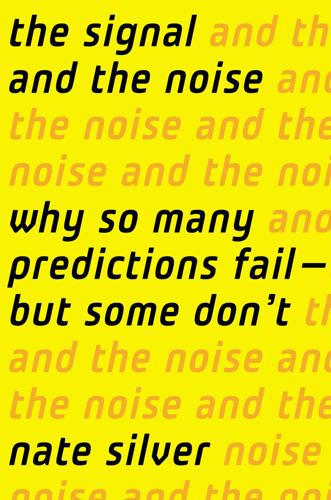
The Signal and the Noise: Why So Many Predictions Fail-But Some Don't
by
Nate Silver
Published 31 Aug 2012
The housing bubble had seeped into the culture to the point where two separate TV programs—one named Flip This House and the other named Flip That House—were launched within ten days of each other in 2005. Even home buyers who weren’t counting on a huge return on investment may have been concerned about keeping up with the Joneses. “I can remember twenty years ago, on the road to Sacramento, there were no traffic jams,” I was told by George Akerlof, a frequent colleague of Shiller’s, whose office at the University of California at Berkeley sits at the epicenter of some of the worst declines in housing prices. “Now there tend to be traffic stoppages a good share of the way. That’s what people were thinking—if I don’t buy now then I’m gonna pay the same price in five years for a house that’s ten miles up the road.”
…
The $85 billion it held in mortgage-backed securities in 2007 was about four times more than the underlying value of its capital, meaning that a 25 percent decline in their value would likely be enough to bankrupt the company.77 Ordinarily, investors would have been extremely reluctant to purchase assets like these—or at least they would have hedged their bets very carefully. “If you’re in a market and someone’s trying to sell you something which you don’t understand,” George Akerlof told me, “you should think that they’re selling you a lemon.” Akerlof wrote a famous paper on this subject called “The Market for Lemons”78—it won him a Nobel Prize. In the paper, he demonstrated that in a market plagued by asymmetries of information, the quality of goods will decrease and the market will come to be dominated by crooked sellers and gullible or desperate buyers.
…
David Miles, Bank of England, “Monetary Policy in Extraordinary Times,” speech given to the Centre for Economic Policy Research and London Business School, February 23, 2011. http://www.bankofengland.co.uk/publications/Documents/speeches/2011/speech475.pdf 77. Investopedia staff, “Case Study: The Collapse of Lehman Brothers,” Investopedia; April 2, 2009. http://www.investopedia.com/articles/economics/09/lehman-brothers-collapse.asp#axzz1bZ61K9wz. 78. George A. Akerlof, “The Market for ‘Lemons’: Quality Uncertainty and the Market Mechanism,” Quarterly Journal of Economics 84, no. 3 (Aug. 1970). http://sws.bu.edu/ellisrp/EC387/Papers/1970Akerlof_Lemons_QJE.pdf. 79. “Lehman Brothers F1Q07 (Qtr End 2/28/07) Earnings Call Transcript,” Seeking Alpha, Mar. 14, 2007. http://seekingalpha.com/article/29585-lehman-brothers-f1q07-qtr-end-2-28-07-earnings-call-transcript?

Reinventing Capitalism in the Age of Big Data
by
Viktor Mayer-Schönberger
and
Thomas Ramge
Published 27 Feb 2018
This may sound like a sensible strategy for an individual, but if it is widespread, it hurts everyone by making it difficult for others to process the information being shared. Moreover, if market participants have to assume that others are not transparent, they must factor this into their decision-making. In his classic example of information asymmetry, George Akerlof cites the market for used cars. Because it’s difficult to inspect the condition of every component of a car without disassembling it, buyers cannot really ascertain if a car they are considering purchasing is a “peach” or a “lemon” at the time of the transaction. As every used car in the market could potentially be a lemon, buyers are less inclined to pay extra for a purported peach, while sellers who actually have a car in great condition must absorb the market’s informational inefficiencies, and in most cases they either decide not to sell their cars or to sell them for less than they feel they’re worth.
…
CHAPTER 3: MARKETS AND MONEY market volatility plummeted: Robert Jensen, “The Digital Provide: Information (Technology), Market Performance, and Welfare in the South Indian Fisheries Sector,” Quarterly Journal of Economics 122, no. 3 (August 2007), 879–924, https://academic.oup.com/qje/article-abstract/122/3/879/1879540/The-Digital-Provide-Information-Technology-Market. “The market is essentially an ordering mechanism”: Friedrich August von Hayek, “Coping with Ignorance,” Ludwig von Mises Memorial Lecture, Hillsdale College, Hillsdale, MI, July 1978. the market for used cars: George A. Akerlof, “The Market for ‘Lemons’: Quality Uncertainty and the Market Mechanism,” Quarterly Journal of Economics 84, no. 3 (August 1970), 488–500, http://qje.oxfordjournals.org/content/84/3/488.short. fewer peaches are offered for sale: Information asymmetries can also cause sellers to lose out when they undervalue their goods and services and a more informed buyer takes advantage of it.
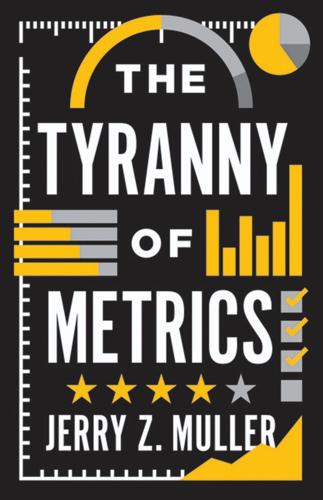
The Tyranny of Metrics
by
Jerry Z. Muller
Published 23 Jan 2018
For a review of the relevant literature with a focus on behavioral economics, which concludes that “behavioral economics clearly shows that the universal application of pay-for-performance as practiced today is not warranted by scientific facts,” see Antoinette Weibel, Meike Wiemann, and Margit Osterloh, “A Behavioral Economics Perspective on the Overjustification Effect: Crowding-In and Crowding-Out of Intrinsic Motivation,” in Marylène Gagné (ed.), The Oxford Handbook of Work Engagement, Motivation, and Self-Determination Theory (New York, 2014). 9. Pittman, Boggiano, and Ruble, “Intrinsic and Extrinsic Motivational Orientations.” 10. Bénabout and Tirole, “Intrinsic and Extrinsic Motivation,” p. 504. 11. Bruno S. Frey and Margit Osterloh, “Motivate People with Prizes,” Nature 465, no. 17 (June 2010), p. 871. 12. George Akerlof, “Labor Contracts as a Partial Gift Exchange,” Quarterly Journal of Economics 97, no. 4 (1982), 543–69. 13. Bruno S. Frey and Reto Jegen, “Motivation Crowding Theory,” Journal of Economic Surveys 15, no. 5 (2001), pp. 589–611; and Robert Gibbons, “Incentives in Organizations,” Journal of Economic Perspectives 12, no. 4 (Fall 1998), pp. 115–32, esp. p. 129. 14.
…
Merton, “Unanticipated Consequences and Kindred Sociological Ideas: A Personal Gloss,” p. 296. 4. Morieux and Tollman, Six Simple Rules, pp. 6–16. 5. Lilford and Pronovost, “Using Hospital Mortality Rates to Judge Hospital Performance.” 6. Berwick, “The Toxicity of Pay for Performance.” 7. On this topic, see George A. Akerlof and Rachel E. Kranton, Identity Economics: How Our Identities Shape Our Work, Wages, and Well-Being (Princeton, 2010), chap. 5, “Identity and the Economics of Organizations.” 8. Berwick, “The Toxicity of Pay for Performance.” 9. Edmund Phelps, Mass Flourishing: How Grassroots Innovation Created Jobs, Challenge and Change (Princeton, 2013), p. 269. 10.

The Upside of Irrationality: The Unexpected Benefits of Defying Logic at Work and at Home
by
Dan Ariely
Published 31 May 2010
Roosevelt, Oglethorpe University commencement address, May 22, 1932. Bibliography and Additional Readings Below is a list of the papers and books on which the chapters were based, plus suggestions for additional readings on each topic. Introduction: Lessons from Procrastination and Medical Side Effects Additional readings George Akerlof, “Procrastination and Obedience,” The American Economic Review 81, no. 2 (May 1991): 1–19. Dan Ariely and Klaus Wertenbroch, “Procrastination, Deadlines, and Performance: Self-Control by Precommitment,” Psychological Science 13, no. 3 (2002): 219–224. Stephen Hoch and George Loewenstein, “Time-Inconsistent Preferences and Consumer Self-Control,” Journal of Consumer Research 17, no. 4 (1991): 492–507.
…
Glen Jensen, Calvin Leung, and David Hess, “ ‘Freeloading’ in the Skinner Box Contrasted with Freeloading in the Runway,” Psychological Reports 27 (1970): 67–73. George Loewenstein, “Because It Is There: The Challenge of Mountaineering . . . for Utility Theory,” Kyklos 52, no. 3 (1999): 315–343. Additional readings George Akerlof and Rachel Kranton, “Economics and Identity,” The Quarterly Journal of Economics 115, no. 3 (2000): 715–753. David Blustein, “The Role of Work in Psychological Health and Well-Being: A Conceptual, Historical, and Public Policy Perspective,” American Psychologist 63, no. 4 (2008): 228–240. Armin Falk and Michael Kosfeld, “The Hidden Costs of Control,” American Economic Review 96, no. 5 (2006): 1611–1630.
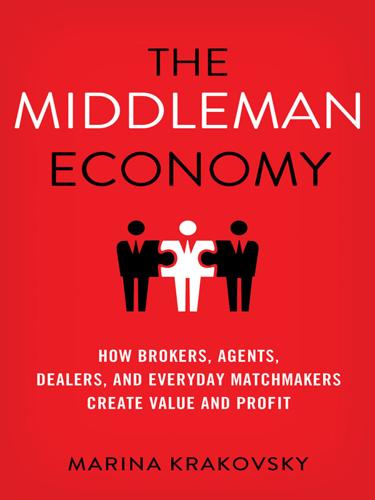
The Middleman Economy: How Brokers, Agents, Dealers, and Everyday Matchmakers Create Value and Profit
by
Marina Krakovsky
Published 14 Sep 2015
As a result, honest sellers (unable to show that they are honest) would have trouble getting a good price for their goods, driving some of them out of the market—a decision that leaves the market overpopulated with dishonest sellers, which further erodes buyers’ trust and prices and so on in a vicious cycle called “adverse selection.”26 The original paper about adverse selection, “The Market for Lemons,” dealt with the case of used cars, but the phenomenon is so pervasive, rearing its head in important markets like those for insurance, that the economist behind the lemons model, George Akerlof, eventually earned a Nobel Prize for this insight.27 The lemons problem explains why middlemen so often appear in markets for used goods: they not only have the expertise to judge quality, but they can vouch for it with their reputation. But it is not only with used goods that we need middlemen to protect us against lemons.
…
Cannon, “An Examination of the Nature of Trust in Buyer-Seller Relationships,” Journal of Marketing 61, no. 2 (April 1997): 35–51. 26.In insurance contexts, the vicious cycle is sometimes called the death spiral. See David M. Cutler and Richard J. Zeckhauser, “Adverse Selection in Health Insurance,” Forum for Health Economics & Policy (1998). 27.George A. Akerlof, “The Market for ‘Lemons’: Quality Uncertainty and the Market Mechanism,” The Quarterly Journal of Economics 84, no. 3 (August 1970): 488–500. 28.Joel Grover and Matt Goldberg, “False Claims, Lies Caught on Tape at Farmers Markets,” NBC Los Angeles, September 23, 2010. 29.Shoshana Walter, “Farm Fakes: A History of Fraudulent Food,” Modern Farmer, May 3, 2013. 30.Specifically, the bill created a way for the markets to tax vendors at farmers’ markets to fund these outside inspectors.

Machine, Platform, Crowd: Harnessing Our Digital Future
by
Andrew McAfee
and
Erik Brynjolfsson
Published 26 Jun 2017
Changes in Taxi Ridership and Revenue in Los Angeles 2009–2014,” Policy Brief, July 2015, table 1, p. 3, http://www.irle.ucla.edu/publications/documents/Taxi-Policy-Brief.pdf. 201 Yellow Cab Cooperative, filed for bankruptcy: Tom Corrigan, “San Francisco’s Biggest Taxi Operator Seeks Bankruptcy Protection,” Wall Street Journal, January 24, 2016, https://www.wsj.com/articles/san-franciscos-biggest-taxi-operator-seeks-bankruptcy-protection-1453677177. 201 Less than three years later: Simon Van Zuylen-Wood, “The Struggles of New York City’s Taxi King,” Bloomberg BusinessWeek, August 27, 2015, https://www.bloomberg.com/features/2015-taxi-medallion-king. 202 Lawmakers in France: “Uber Fined in France over UberPop,” BBC News, June 9, 2016, http://www.bbc.com/news/business-36491926. 202 In June 2015 the Economist: “Why Fintech Won’t Kill Banks,” Economist, June 17, 2015, http://www.economist.com/blogs/economist-explains/2015/06/economist-explains-12. 202 “a future as a sort of financial utility”: Ibid. 203 $45 billion: Juro Osawa, Gillian Wong, and Rick Carew, “Xiaomi Becomes World’s Most Valuable Tech Startup,” Wall Street Journal, last modified December 29, 2014, https://www.wsj.com/articles/xiaomi-becomes-worlds-most-valuable-tech-startup-1419843430. 203 Xiaomi had sold 61 million smartphones: Eva Dou, “China’s Xiaomi under Pressure to Prove Value to Investors,” Wall Street Journal, January 10, 2016, https://www.wsj.com/articles/chinas-xiaomi-under-pressure-to-prove-value-to-investors-1452454204. 203 typically selling for $149 in 2015: Eva Dou, “Xiaomi Ends 2015 as China’s Smartphone King,” Wall Street Journal, February 1, 2016, http://blogs.wsj.com/digits/2016/02/01/xiaomi-ends-2015-as-chinas-smartphone-king. 203 less than 5% of revenue: Kevin Kelleher, “Once a Darling, Xiaomi Is Facing Tough Questions about Its Future,” Time, March 21, 2016, http://time.com/4265943/xiaomi-slowdown. 203 Xiaomi’s sales had dropped by almost 40%: David Gilbert, “How Xiaomi Lost $40bn: Where It All Went Wrong for the ‘Apple of the East,’ ” International Business Times, August 18, 2016, http://www.ibtimes.co.uk/how-xiaomi-lost-40bn-where-it-all-went-wrong-apple-east-1576781. 203 closer to $3.6 billion: Ibid. 204 Total unit sales in 2016: James Titcomb, “Samsung Mobile Phone Sales Fall to Lowest Level in Five Years,” Telegraph, January 24, 2017, http://www.telegraph.co.uk/technology/2017/01/24/samsung-mobile-phone-sales-fall-lowest-level-five-years. 204 Apple captured 91% of global smartphone profits: Philip Elmer-DeWitt, “How Apple Sucks the Profit Out of Mobile Phones,” Fortune, February 14, 2016, http://fortune.com/2016/02/14/apple-mobile-profit-2015. 204 analyst Tim Long of BMO Capital Markets estimated: Mikey Campbell, “Apple Captures More than 103% of Smartphone Profits in Q3 despite Shrinking Shipments,” November 3, 2016, http://appleinsider.com/articles/16/11/03/apple-captures-more-than-103-of-smartphone-profits-in-q3-despite-shrinking-shipments. 204 $22 billion in profits: Joel Rosenblatt and Jack Clark, “Google’s Android Generates $31 Billion Revenue, Oracle Says,” Bloomberg, January 21, 2016, https://www.bloomberg.com/news/articles/2016-01-21/google-s-android-generates-31-billion-revenue-oracle-says-ijor8hvt. 207 “The Market for ‘Lemons’ ”: George A. Akerlof, “The Market for ‘Lemons’: Quality Uncertainty and the Market Mechanism,” Quarterly Journal of Economics 84, no. 3 (1970): 488–500, https://doi.org/10.2307/1879431. 207 “did not publish papers”: George A. Akerlof, “Writing the ‘The Market for “Lemons”’: A Personal and Interpretive Essay,” Nobelprize.org, November 14, 2003, http://www.nobelprize.org/nobel_prizes/economic-sciences/laureates/2001/akerlof-article.html. 207 “if this paper were correct”: Ibid. 207 50 million rides per month: Eric Newcomer, “Lyft Is Gaining on Uber as It Spends Big for Growth,” Bloomberg, last modified April 14, 2016, https://www.bloomberg.com/news/articles/2016-04-14/lyft-is-gaining-on-uber-as-it-spends-big-for-growth. 208 In 2013, California passed regulations: Tomio Geron, “California Becomes First State to Regulate Ridesharing Services Lyft, Sidecar, UberX,” Forbes, September 19, 2013, http://www.forbes.com/sites/tomiogeron/2013/09/19/california-becomes-first-state-to-regulate-ridesharing-services-lyft-sidecar-uberx/#6b22c10967fe. 208 by August 2016, BlaBlaCar still did not require them: BlaBlaCar, “Frequently Asked Questions: Is It Safe for Me to Enter My Govt.
…
This is a shame, because at least some of the passed-up deals actually would have been advantageous for both parties. Knowledge differentials, unfortunately, kept these transactions from happening. The idea that such “information asymmetries” are harmful not just for the less informed party but also for markets overall was formalized by economist George Akerlof in his classic 1970 paper “The Market for ‘Lemons.’ ” Akerlof showed that the used-car market could suffer greatly because of the existence of “lemons”‡—apparently fine cars that, in fact, had bad mechanical problems. Sellers know which cars are lemons but most buyers don’t, and this information asymmetry will keep the used-car market small and inefficient unless it’s addressed by, for example, having dealers offer money-back guarantees to customers who feel that they’ve been cheated.

Social Capital and Civil Society
by
Francis Fukuyama
Published 1 Mar 2000
The first involved advances in medical technology (i.e., birth control and abortion) that permitted women for the first time to control their own reproductive cycles. The second was the movement of women into the paid labor force in most industrialized countries and the steady rise in their incomes -hourly, median, or lifetime -relative to men over the next thirty years. 53See George Akerlof, Janet Yellen, and Michael L. Katz, “An Analysis of Out-of-Wedlock Childbearing in the United States,” Quarterly J ou rn al o f E c o nomics 1 1 1 , no. 2 (May 1996): 277–317. 418 The Tanner Lectures on Human Values The significance of birth control was n o t that it lowered fertility, since fertility had been on the decline in many societies prior to the widespread availability of birth control or abortion. 54 Indeed, if the effect of birth control is to reduce the number of unwanted pregnancies, it is hard to explain why its advent should have been accompanied by a rise in the rate of abortions, 55 or why use of birth control is positively correlated with illegitimacy across the OE C D. 56 The main impact of the Pill and the sexual revolution that followed was to dramatically alter calculations about the risks of sex and thereby to change male behavior.
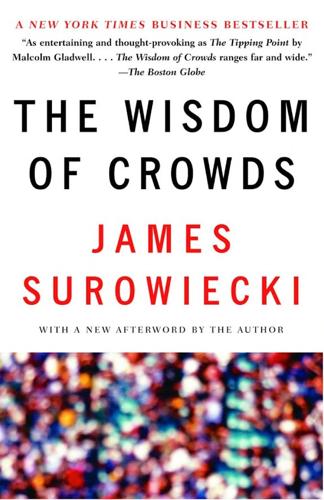
The Wisdom of Crowds
by
James Surowiecki
Published 1 Jan 2004
An excellent discussion of the relationship between convention and economic behavior is H. Peyton Young, “The Economics of Convention,” Journal of Economic Perspectives 10 (1996): 105–22. Also see Truman F. Bewley, Why Wages Don’t Fall During a Recession (Cambridge: Harvard University Press, 1999); and George Akerlof, “A Theory of Social Custom, of Which Unemployment May Be One Consequence,” Quarterly Journal of Economics 94 (1980): 749–75. The study is Robert E. Hall, “The Response of Prices to Shifts in Demand,” Stanford working paper (2002). A good discussion of movie theaters’ fixed-price strategy can be found in Liran Einav and Barak Orbach, “Uniform Prices for Differentiated Goods: The Case of the Movie-Theater Industry,” Harvard Olin discussion paper no. 337 (2001).
…
Thaler, “The End of Behavioral Finance,” Financial Analysts’ Journal (November–December 1999): 12–17; and Daniel Kahneman, Paul Slovic, and Amos Tversky, Judgement Under Uncertainty: Heuristics and Biases (New York: Cambridge University Press, 1982), which is the jumping-off point for much of the work in behavioral finance. See George Akerlof’s Nobel lecture, “Behavioral Macroeconomics and Macroeconomic Behavior” (December 8, 2001), for a discussion of people’s problems saving. Fischer Black, “Noise,” Journal of Finance 41 (1986): 533. Robert Shiller, Market Volatility (Cambridge: MIT Press, 1993). The best definition of “market efficiency,” I think, is that the market is efficient if it consistently provides a better forecast of the future discounted free cash flow of companies than any other individual or system provides.

A Pelican Introduction Economics: A User's Guide
by
Ha-Joon Chang
Published 26 May 2014
The current state of affairs in which the predominant majority of Neoclassical economists are of free-market leaning is actually due more to the shift in political ideology since the 1980s than to the absence or the poor quality of theories within Neoclassical economics identifying the limits of the free market. If anything, the arsenal for Neoclassical economists who reject free-market policies has been expanded since the 1980s by the development of information economics, led by Joseph Stiglitz, George Akerlof and Michael Spence. Information economics explains why asymmetric information – the situation in which one party to a market exchange knows something that the other does not – makes markets malfunction or even cease to exist.7 However, since the 1980s, many Neoclassical economists have also developed theories that go so far as to deny the possibility of market failures, such as the ‘rational expectation’ theory in macroeconomics or the ‘efficient market hypothesis’ in financial economics, basically arguing that people know what they are doing and therefore the government should leave them alone – or, in technical terms, economic agents are rational and therefore market outcomes efficient.
…
* The most important regional multilateral banks are the Asian Development Bank (ADB), the African Development Bank (AfDB) and the Inter-American Development Bank (IDB). * There is a huge amount of evidence, well presented in accessible form in books like Peter Ubel’s Free Market Madness, George Akerlof’s and Robert Shiller’s Animal Spirits and the psychologist and 2002 Nobel Economics laureate Daniel Kahnemann’s Thinking, Fast and Slow. * A very rough but useful rule of thumb is that the value-added figure is usually around one-third of sales (turnover) figure of a company. * What really represents a nation’s productivity is how much people have to work in order to produce a given amount of output, rather than what the output is for each person alive.

Makers and Takers: The Rise of Finance and the Fall of American Business
by
Rana Foroohar
Published 16 May 2016
I am not in favor of a planned economy or a turn away from a market system. I simply don’t think that the system we have now is a properly functioning market system. We have a rentier economy in which a small group of vested interests take the cream off the top, to the detriment of overall growth. I agree with economists like Joseph Stiglitz, George Akerlof, Paul Volcker, and others who believe that markets prudently regulated by governments are the best guarantee of peace and prosperity the world has ever known. Until we make more progress toward that goal, we won’t have the kind of recovery we deserve. THE HIGH PRICE OF COMPLEXITY The first step in this process is understanding how the financial sector, which is the pivot point for all of this, came to play such an outsize role.
…
Thanks also to the many academics and policy thinkers whose research I relied heavily on, including but not limited to: Greta Krippner, Moritz Schularick, Alan M. Taylor, Robin Greenwood, David Scharfstein, Raghuram G. Rajan, Carmen Reinhart, Ken Rogoff, Thomas Philippon, Robert Atkinson, J. W. Mason, Luigi Zingales, Thomas Piketty, Emmanuel Saez, Gabriel Zucman, Jeff Madrick, George Akerlof, Robert Shiller, John Coates, Karen Ho, Enisse Kharroubi, Claudia Goldin, Lawrence Katz, David Graeber, Charles Calomiris, Stephen H. Haber, Allan H. Meltzer, Robert Reich, Alan Blinder, John Asker, Joan Farre-Mensa, Alexander Ljungqvist, Kimberly Krawiec, Thomas Ferguson, Gerald Epstein, Michael Spence, Sarah Edelman, Monique Morrissey, Mariana Mazzucato, Atif Mian, and Amir Sufi.

Competition Overdose: How Free Market Mythology Transformed Us From Citizen Kings to Market Servants
by
Maurice E. Stucke
and
Ariel Ezrachi
Published 14 May 2020
Competition instead favors the more crooked dealers. In many markets, one side knows more than the other. We know more about our health, diet, etc. than our life insurers. Used car salespeople know more about their cars’ condition than we do. This imbalance in information, as the Nobel laureate economist George Akerlof described, can create a “market for lemons.”77 It explains why competition in markets with imperfect information flow can actually be a disincentive to sellers to invest in quality. Akerlof showed how a lemon problem may affect the used car market. Suppose driving to and from work you pass the used car lot.
…
,” BBC News, June 8, 2015, https://www.bbc.co.uk/news/health-32786537; “Air Quality on Planes: Aerotoxic Syndrome,” Economist, February 7, 2013, https://www.economist.com/gulliver/2013/02/07/aerotoxic-syndrome; Association of Flight Attendants-CWA, “Issues: Aircraft Air Quality—Protecting Against Contaminants,” accessed April 12, 2019, http://www.afacwa.org/aircraft_air_quality. 77.George A. Akerlof, “The Market for ‘Lemons’: Quality Uncertainty and the Market Mechanism,” Quarterly Journal of Economics 84, no. 3 (August 1970): 488–500, https://doi.org/10.2307/1879431. 78.Healthline, “Experts Agree: Sugar Might Be as Addictive as Cocaine,” accessed April 12, 2018, https://www.healthline.com/health/food-nutrition/experts-is-sugar-addictive-drug#1. 79.Nell Boeschenstein, “How the Food Industry Manipulates Taste Buds with ‘Salt Sugar Fat,’” NPR, February 26, 2013, https://www.npr.org/sections/thesalt/2013/02/26/172969363/how-the-food-industry-manipulates-taste-buds-with-salt-sugar-fat. 80.Boeschenstein, “How the Food Industry Manipulates Taste Buds.”
…
Rather, they can focus on exploiting biased consumers who are very likely to purchase from them regardless of price and quality.” Steffen Huck, Jidong Zhou, and Charlotte Duke, Consumer Behavioural Biases in Competition: A Survey (London, Office of Fair Trading, May 2011), ¶ 6.2, https://ssrn.com/abstract=1944446. 6.George A. Akerlof and Robert J. Shiller, Phishing for Phools: The Economics of Manipulation and Deception (Princeton, NJ: Princeton University Press, 2015), xii. 7.Huck et al., “Consumer Behavioural Biases in Competition,” ¶¶ 3.31, 3.37, 3.43; Matthew Bennett et al., “What Does Behavioral Economics Mean for Competition Policy?
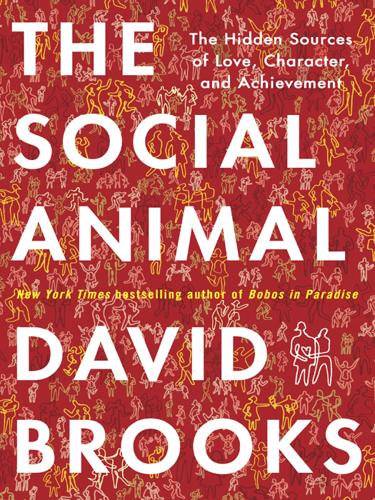
The Social Animal: The Hidden Sources of Love, Character, and Achievement
by
David Brooks
Published 8 Mar 2011
Denis Diderot. 21 This mode, as Guy Claxton Guy Claxton, The Wayward Mind: An Intimate History of the Unconscious (New York: Little, Brown Book Group, 2006). 22 Lionel Trilling diagnosed Lionel Trilling, The Liberal Imagination: Essays on Literature and Society (New York: New York Review of Books, 2008), ix–xx. 23 “deals with introspection” Robert Skidelsky, Keynes: The Return of the Master (New York: PublicAffairs, 2009), 81. 24 Paul Samuelson applied Clive Cookson, Gillian Tett, and Chris Cook, “Organic Mechanics,” Financial Times, November 26, 2009, http://www.ft.com/cms/s/0/d0e6abde-dacb-11de-933d-00144feabdc0.html. 25 George A. Akerlof and Robert Shiller George A. Akerlof and Robert J. Shiller, Animal Spirits: How Human Psychology Drives the Economy, and Why It Matters (Princeton, NJ: Princeton University Press, 2010), 1. 26 Jim Collins argues Jim Collins, “How the Mighty Fall: A Primer on the Warning Signs,” Businessweek, May 14, 2009, http://www.businessweek.com/magazine/content/09_21/b4132026786379.htm.
…
Behavioral economists argue that the caricature is not accurate enough to produce reliable predictions about real events. Two psychologists, Daniel Kahneman and Amos Tversky, were the pioneers. Then their insights were picked up by economists proper: including Richard Thaler, Sendhil Mullainathan, Robert Schiller, George Akerlof, and Colin Camerer. These scholars investigate cognition that happens below the level of awareness. Rationality is bounded by emotion. People have a great deal of trouble exercising self-control. They perceive the world in biased ways. They are profoundly influenced by context. They are prone to groupthink.
…
On the finance side, Emanuel Derman was a physicist who became a financier and played a central role in developing the models for derivatives. While valuable tools for understanding economic behavior, mathematical models were also like lenses that filtered out certain aspects of human nature. They depended on the notion that people are basically regular and predictable. They assume, as George A. Akerlof and Robert Shiller have written, “that variations in individual feelings, impressions and passions do not matter in the aggregate and that economic events are driven by inscrutable technical factors or erratic government action.” Within a very short time economists were emphasizing monetary motivations to the exclusion of others.
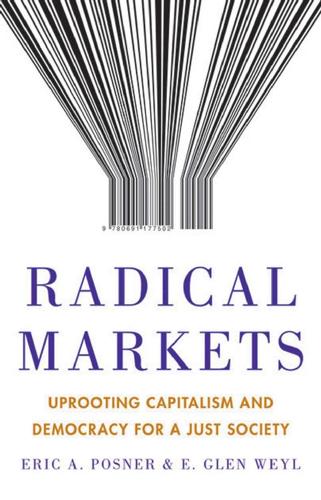
Radical Markets: Uprooting Capitalism and Democracy for a Just Society
by
Eric Posner
and
E. Weyl
Published 14 May 2018
We highlighted one emphasized by Myerson and Satterthwaite, but other economists have given other reasons why assets are not passed on to their best use. As we will see, a COST alleviates all these problems simultaneously. One such problem is what economists call “signaling” or “adverse selection,” concepts for which economists George Akerlof and A. Michael Spence were awarded the Nobel Prize.51 The possessor of an asset, such as a used car, often knows the quality of the asset better than a potential purchaser. The possessor may thus demand a high price for the car not only because she guesses the buyer may be willing to pay it, but also because a high price signals she is reluctant to part with it, a ploy to convince the buyer the car must be valuable.
…
Glen Weyl, Property Is Another Name for Monopoly, 9 Journal of Legal Analysis 51 (2017). 49. Note that this would create a highly liquid market in home refinancings. 50. A team of researchers led by Nikhil Naik is already using image analysis to conduct automated property assessments for real estate, so this idea is not as farfetched as it may at first sound. 51. George A. Akerlof, The Market for “Lemons”: Quality, Uncertainty and the Market Mechanism, 84 Quarterly Journal of Economics 488 (1970); Michael Spence, Job Market Signaling, 87 Quarterly Journal of Economics 355 (1973). 52. Richard Thaler, Toward a Positive Theory of Consumer Choice, 1 Journal of Economics, Behavior, and Organizations 39 (1980). 53.
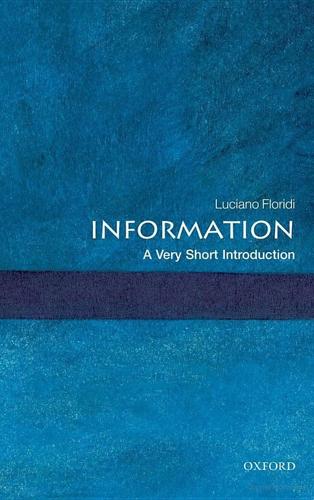
Information: A Very Short Introduction
by
Luciano Floridi
Published 25 Feb 2010
The benefits brought about by information need to be understood contextually because the agents exchanging information could be not only human individuals, but also biological agents, social groups, artificial agents (such as software programs or industrial robots), or synthetic agents (such as a corporation or a tank), which comprise agents of all kinds. In Chapter 1, we saw how human society has come to depend, for its proper functioning and growth, on the management and exploitation of information processes. Unsurprisingly, in recent years the scientific study of economic information has bloomed. In 2001, George Akerlof (born 1940), Michael Spence (born 1943), and Joseph E. Stiglitz (born 1943) were awarded what is known as the Nobel Prize in Economics `for their analyses of markets with asymmetric information'. Indeed, information-theoretical approaches to economic topics have become so popular and pervasive that one may be forgiven for mistaking economics for a branch of information science.
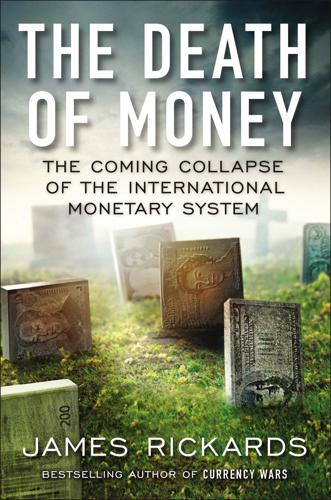
The Death of Money: The Coming Collapse of the International Monetary System
by
James Rickards
Published 7 Apr 2014
The policy debate over forward guidance as an adjunct to market manipulation is a continuation of one of the most long-standing areas of intellectual inquiry in modern economics. This inquiry involves imperfect information or information asymmetry: a situation in which one party has superior information to another that induces suboptimal behavior by both parties. This field took flight with a 1970 paper by George Akerlof, “The Market for ‘Lemons,’” that chose used car sales as an example to make its point. Akerlof was awarded the Nobel Prize in Economics in 2001 in part for this work. The seller of a used car, he states, knows perfectly well whether the car runs smoothly or is of poor quality, a “lemon.” The buyer does not know; hence an information asymmetry arises between buyer and seller.
…
. : This analysis is based on data and reporting in Buttonwood, “The Real Deal—Low Real Interest Rates Are Usually Bad News for Equity Markets,” Economist, October 20, 2012, http://www.economist.com/news/finance-and-economics/21564845-low-real-interest-rates-are-usually-bad-news-equity-markets. “The Market for ‘Lemons’”: George A. Akerlof, “The Market for ‘Lemons’: Quality Uncertainty and the Market Mechanism,” Quarterly Journal of Economics 84, no. 3 (August 1970), pp. 488–500. “Irreversibility, Uncertainty . . .”: Ben S. Bernanke, “Irreversibility, Uncertainty, and Cyclical Investment,” National Bureau of Economic Research, Cambridge, Mass., July 1980, http://www.nber.org/papers/w502.

Cheap: The High Cost of Discount Culture
by
Ellen Ruppel Shell
Published 2 Jul 2009
When we buy a used car from a dealer we don’t know, we feel like a tourist. In the Age of Cheap we are all tourists, blindly reliant on the seller to wring out the best price from his suppliers and to reliably pass those savings on to us. Retailers, and in particular discount retailers, reliably betray this trust. Nobel Prize winner in economics George Akerlof illustrates the problem with a thought experiment. Imagine that a quart of high-quality milk wholesales for $1.00, and a quart of watered-down milk wholesales for 60 cents. A typical buyer might willingly pay up to 80 cents for the watered-down milk and up to $1.20 for the pure milk. In either case, mutual gains would be made from the transaction: Both the buyer and the seller know what he or she is getting, and both end up with what might be considered a fair deal.
…
Geertz, an anthropologist, spent decades observing bazaar life in Morocco and Indonesia. 4 sell for more than thirteen times their production price: See Dana Thomas, Deluxe: How Luxury Lost Its Luster (New York: Penguin, 2008) This delicious exposé of the real cost and decline of luxury reveals—among many, many other things, that the average markup of a handbag is ten to twelve times its production cost. A Vuitton bag, however, is marked up as much as thirteen times. 5 in the same terms as he to them: Clifford Geertz, “Bazaar Economy.” 6 illustrates the problem with a thought experiment: George A. Akerlof, “The Market for ‘Lemons’: Quality Uncertainty and the Market Mechanism,” Quarterly Journal of Economics 84, no. 3 (1970): 488-500. CHAPTER ONE: DISCOUNT NATION 7 or generate even as much power as a horse: Robert Kanigel, The One Best Way: Frederick Winslow Taylor and the Enigma of Efficiency (New York: Viking, 1997), 95-96.

Markets, State, and People: Economics for Public Policy
by
Diane Coyle
Published 14 Jan 2020
The remainder of this chapter looks in more detail at three aspects of markets: the importance of information asymmetries in preventing competition from working well and so requiring regulation; technological disruption as a force for increased competition; and why natural monopoly markets always require heavy regulation. Information Asymmetries The absence or presence of information asymmetries can make all the difference to how a market functions. One of the most famous economic models, George Akerlof’s “market for lemons” model, captures the key insight into how the fact that one party has more information than another can prevent a market from working at all. (It is also an example of how a very simple and apparently unrealistic model can illuminate a profound insight—economists are often criticized for using abstract models not at all like the real world, but this one is a terrific demonstration of why that criticism is often misplaced.)
…
Further Reading Technical Follow-Up Massimo Motta (2004), Competition Policy: Theory and Practice, Cambridge University Press. Jean Tirole (2014), “Market Power and Regulation,” scientific background to the Nobel Prize announcement, http://idei.fr/sites/default/files/medias/doc/by/tirole/scientific_background_economics_nobel_2014.pdf. Classics George A. Akerlof (1970), “The Market for ‘Lemons’: Quality Uncertainty and the Market Mechanism,” Quarterly Journal of Economics 84, no. 3 (August): 488–500. Robert Bork (1978), The Antitrust Paradox, Free Press. On Competition Policy Michael Grenfell (2017), “What Has Competition Ever Done for Us?,” speech, http://www.regulation.org.uk/library/2017-What_has_Competition_ever_Done_for_us.pdf.

Small Wars, Big Data: The Information Revolution in Modern Conflict
by
Eli Berman
,
Joseph H. Felter
,
Jacob N. Shapiro
and
Vestal Mcintyre
Published 12 May 2018
In particular, tips from civilians allow police to arrest gang members and reduce the gang’s ability to control territory. Indeed, when we first laid out the idea of asymmetric conflict as a three-player game, we used as a starting point a model of criminal gangs proposed in a 1994 article by Nobel Prize winner George Akerlof and former chair of the Federal Reserve Janet Yellen.34 The article described the incentives faced by gangs and the citizens in areas where they operated. The authors argued that citizens must observe some share of gang activities, since operations such as extortion, prostitution, and selling drugs require visibility to customers.
…
The model is laid out in detail in Eli Berman, Jacob N. Shapiro, and Joseph H. Felter, “Can Hearts and Minds Be Bought? The Economics of Counterinsurgency in Iraq,” Journal of Political Economy 119, no. 4 (2011): 766–819. It was inspired by a model describing why communities endure, and even support, criminal gangs: George Akerlof and Janet L. Yellen, “Gang Behavior, Law Enforcement, and Community Values,” in Values and Public Policy, ed. Henry J. Aaron, Thomas E. Mann, and Timothy Taylor (Washington, DC: Brookings Institution, 1994). 3. A typical market has supply increasing in price and demand declining in price so that there is only one equilibrium price.
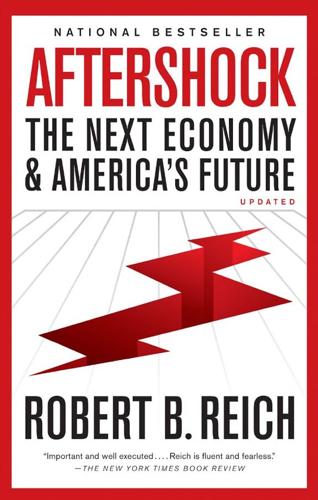
Aftershock: The Next Economy and America's Future
by
Robert B. Reich
Published 21 Sep 2010
We will choose reform, I believe, because we are a sensible nation, and reform is the only sensible option we have. ACKNOWLEDGMENTS This book is the result of discussions with people too numerous to name, although some will no doubt recognize their arguments and counterarguments in these pages. Special mention should go to my former colleagues Jack Donahue and Richard Parker and current colleagues George Akerlof, Brad DeLong, Jack Glaser, David Kirp, Jane Mauldon, Harley Shaiken, Eugene Smolensky, and Laura Tyson, all of whom helped me sharpen my arguments but none of whom should bear responsibility for them. Several friends subjected earlier drafts to the sort of criticism only friends can be trusted to provide.
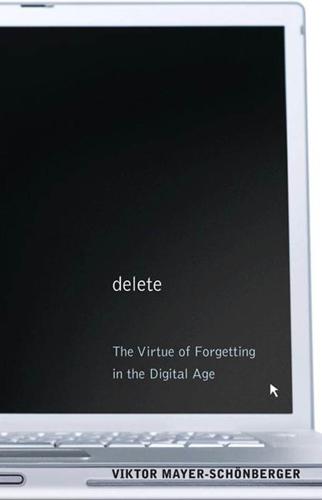
Delete: The Virtue of Forgetting in the Digital Age
by
Viktor Mayer-Schönberger
Published 1 Jan 2009
Third, market participants could hide their intention to change their behavior when it is the basis of the transaction (think of a person who begins to drive recklessly after having taken out comprehensive car insurance). These problems, it is argued, can be overcome by more and more symmetrical information, which is what online market makers have tried to achieve utilizing digital memory. 3. Michael Spence, who won the Nobel Prize with George Akerlof, is the author of a theory of signaling he originally developed for the job market, and which—in a much adapted form—eBay’s reputation system is an example of. See Spence, “Signaling in Retrospect and the Informational Structure of Markets,” 434–59. 4. See New York City Department of Health and Hygiene.

Humans as a Service: The Promise and Perils of Work in the Gig Economy
by
Jeremias Prassl
Published 7 May 2018
Following an update in the spring of 2017, the relevant description can now be found in clause 3: The Services comprise mobile applications and related services (each, an ‘Application’), which enable users to arrange and schedule transportation, logistics and/or delivery services and/or to purchase certain goods, including with third party providers of such services and goods under agreement with Uber or certain of Uber’s affiliates (‘Third Party Providers’). 10. George Akerlof, ‘The market for “lemons”: qualitative uncertainty and the market mechanism’ (1970) 84(3) Quarterly Journal of Economics 488. 11. Tom Slee, What’s Yours Is Mine: Against the Sharing Economy (O/R Books 2015). 12. Ibid., 100–1. 13. Ibid. This is confirmed by internal Uber documents, which suggest that, in 2014, fewer than 3 per cent of drivers were ‘at risk of being deactivated’ as a result of a rating below 4.6 stars (out of 5): James Cook, ‘Uber’s internal charts show how its driver-rating system actually works’, Business Insider UK (11 February 2015), http://uk.businessinsider.com/leaked-charts-show-how-ubers- driver-rating-system-works-2015–2, archived at https://perma.cc/5UPM-SWFN.

Adam Smith: Father of Economics
by
Jesse Norman
Published 30 Jun 2018
On progress and inequality—and the dynamic ebb and flow between them—see Angus Deaton, The Great Escape: Health, Wealth, and the Origins of Inequality, Princeton University Press 2013 GDP disparity between West and East Germany: CIA World Factbook, 1990 Incentives within capitalism encouraging rip-offs and exploitation: see George A. Akerlof and Robert J. Shiller, Phishing for Phools: The Economics of Manipulation and Deception, Princeton University Press 2015 ‘“Free Trade” is an accepted maxim of tedious orthodoxy’: Walter Bagehot, ‘Adam Smith and our Modern Economy’, reprinted in Economic Studies, ed. R. H. Hutton, Longman, Green 1895 Hamiltonian arguments for managed trade: cf.
…
Sen, ‘Adam Smith and the Contemporary World’, Erasmus Journal for Philosophy and Economics, 3.1, Spring 2010 Productivity differences: Robert Gibbons and Rebecca Henderson, ‘What Do Managers Do? Exploring Persistent Performance Differences among Seemingly Similar Enterprises’, Working Paper, Harvard Business School, August 2012 Identity and economics: overall, on identity as non-pecuniary source of motivation, see George A. Akerlof and Rachel E. Kranton, ‘Identity and the Economics of Organizations’, Journal of Economic Perspectives, 19.1, 2005, and their Identity Economics, Princeton University Press 2010. For the importance of ‘mission’ (and its implications for theories of agency), especially in non-profits, educational organizations and public-sector bureaucracies, see Timothy Besley and Maitreesh Ghatak, ‘Competition and Incentives with Motivated Agents’, American Economic Review, 95.3, 2005.

Not Working: Where Have All the Good Jobs Gone?
by
David G. Blanchflower
Published 12 Apr 2021
In his 2003 presidential address to the American Economic Association, Bob Lucas denied the possibility of a Great Recession, arguing that “macroeconomics in this original sense has succeeded: Its central problem of depression prevention has been solved, for all practical purposes, and has in fact been solved for many decades” (2003, 1). It hadn’t. The view was that stabilization of output, even if possible, should not be a macroeconomic priority because the gains are trivially small. Future Fed chair Janet Yellen and George Akerlof (2006) countered by arguing there is a solid case for stabilization policy, which can produce non-negligible gains in welfare. John Rapley has it right: “We should have read the warning signs. If history teaches us anything it’s that whenever economists feel certain they’ve found the holy grail of endless peace and prosperity, the end of the present regime is nigh….
…
John Cochrane, “Russ Roberts on Economic Humility,” Grumpy Economist, March 3, 2017, http://johnhcochrane.blogspot.com/2017/03/russ-roberts-on-economic-humility.html. 40. Robert Shiller, “Richard Thaler Is a Controversial Nobel Prize Winner—but a Deserving One,” Guardian, October 11, 2017. Six percent of all Nobels have been awarded, says Shiller, to people who can be classified as behavioral economists including Richard Thaler (2017), Bob Shiller (2013), George Akerlof (2001), Robert Fogel (1993), Daniel Kahneman (2002), and Elinor Ostrom (2009). 41. Stephen Nickell, “Household Debt, House Prices and Consumption Growth” (Speech given at Bloomberg in London, September 14, 2004). 42. Charles Bean, speech given at the Colchester Town Partnership Annual Dinner, Moot Hall, Colchester, November 25, 2004, https://www.bankofengland.co.uk/-/media/boe/files/speech/2004/colechester-town-partnership-annual-dinner. 43.
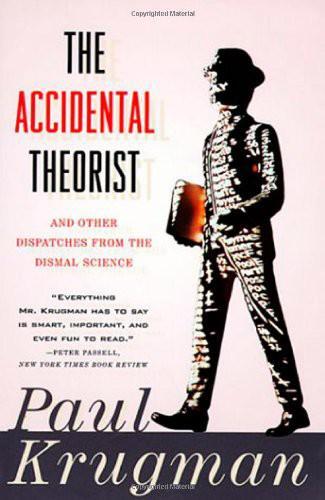
The Accidental Theorist: And Other Dispatches From the Dismal Science
by
Paul Krugman
Published 18 Feb 2010
And even this may not be the whole story: There is some evidence that a push to zero inflation may lead not just to a temporary sacrifice of output but to a permanently higher rate of unemployment. This is still controversial—the standard view, embodied in the concept of the NAIRU (non-accelerating-inflation rate of unemployment) is that there is no long-run tradeoff between inflation and unemployment—but recent work by George Akerlof, William Dickens, and George Perry makes a compelling case that this no-tradeoff view breaks down at very low inflation rates. The NAIRU hypothesis is based on the reasonable proposition that people can figure out the effects of inflation—that both workers and employers realize that an 11 percent wage increase in the face of 10 percent inflation is the same thing as a 6 percent increase in the face of 5 percent inflation, and therefore that any sustained rate of inflation will simply get built into price and wage decisions.
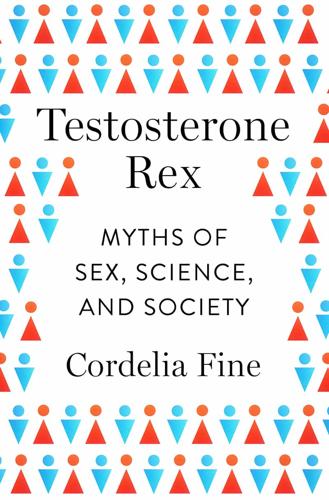
Testosterone Rex: Myths of Sex, Science, and Society
by
Cordelia Fine
Published 13 Jan 2017
Their research protocol is also in perfect keeping with Cass Sunstein’s argument (first met in Chapter 5) that the consequences of a decision for one’s self-concept and reputation are vital ingredients in the recipe from which preferences emerge. This aspect of the decision-making context is something that economists, in particular, have not been especially interested in. It was only at the turn of the twenty-first century, in a groundbreaking economics article written by Nobel Prize–winning economist George Akerlof and fellow economist Rachel Kranton, that the concept that social identity and norms have a motivating effect on behavior was formally introduced to economists.34 “What people care about, and how much they care about it, depends in part on their identity,”35 they observe. These “identities and norms derive from the social setting… .

When to Rob a Bank: ...And 131 More Warped Suggestions and Well-Intended Rants
by
Steven D. Levitt
and
Stephen J. Dubner
Published 4 May 2015
Social scientists sometimes talk about the concept of “identity.” It is the idea that you have a particular vision of the kind of person you are, and you feel awful when you do things that are out of line with that vision. That leads you to take actions that are seemingly not in your short-run best interest. In economics, George Akerlof and Rachel Kranton popularized the idea. I had read their papers, but in general have such a weak sense of identity that I never really understood what they were talking about. The first time I really got what they meant was when I realized that a key part of my identity was that I was not the kind of person who would cut in line to shorten my commute, even though it would be easy to do so, and seemed crazy to wait for fifteen minutes in this long line.
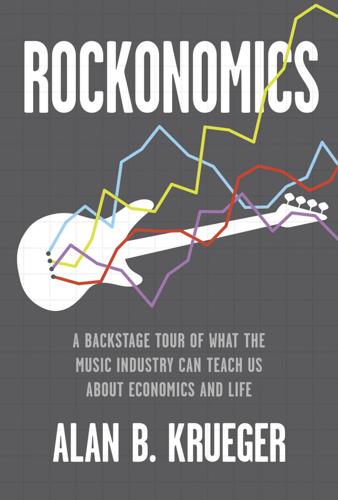
Rockonomics: A Backstage Tour of What the Music Industry Can Teach Us About Economics and Life
by
Alan B. Krueger
Published 3 Jun 2019
The 1998 Copyright Term Extension Act—also known as the Sonny Bono Act, after the then-congressman and former member of Sonny and Cher—extended copyright protection for new works from the life of the author plus fifty years to the life of the author plus seventy years. A distinguished group of economists, including George Akerlof, Kenneth Arrow, and Milton Friedman, wrote an amicus brief to the Supreme Court arguing that this twenty-year extension, coming long after the death of an author or composer, would have virtually no impact on the economic incentive for creative output. “Because the additional compensation occurs many decades in the future, its present value is small, very likely an improvement of less than 1 percent,” the economists wrote.27 They further warned that extending protection raises costs for consumers and reduces “the set of building-block materials freely available for new works [and therefore] raises the cost of producing new works and reduces the number created.”
…
Steven Tyler (@IamStevenT), “This is not about Dems vs. Repub,” Twitter, Aug. 22, 2018, 2:20 p.m., https://twitter.com/iamstevent/status/1032376949358788608?lang=en. 26. Kory Grow, “The Last Word: Lars Ulrich on Metallica’s Darkest Times, Making His Own Rules,” Rolling Stone, Nov. 7, 2016. 27. George A. Akerlof et al., “The Copyright Term Extension Act of 1998: An Economic Analysis,” AEI-Brookings Joint Center for Regulatory Studies, Brief 02-1, 2002. 28. Megan MacGarvie, John McKeon, and Jeremy Watson, “It Was Fifty Years Ago Today: Recording Copyright Term and the Supply of Music,” working paper, 2017. 29.
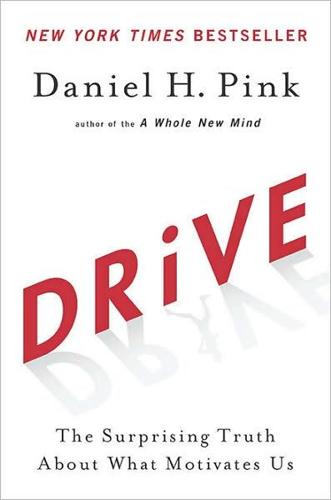
Drive: The Surprising Truth About What Motivates Us
by
Daniel H. Pink
Published 1 Jan 2008
But it is a way to avoid putting the issue of money back on the table and making it a de- motivator. 2. PAY MORE THAN AVERAGE I f you have provided adequate baseline rewards and established internal and external fairness, consider borrowing a strategy first surfaced by a Nobel laureate. In the mid-1980s, George Akerlof, who later won the Nobel Prize in economics, and his wife, Janet Yellen, who's also an economist, discovered that some companies seemed to be overpaying their workers. Instead of paying employees the wages that supply and demand would have predicted, they gave their workers a little more. It wasn't because the companies were selfless and it wasn't because they were stupid.

Good Economics for Hard Times: Better Answers to Our Biggest Problems
by
Abhijit V. Banerjee
and
Esther Duflo
Published 12 Nov 2019
Knowing that, anyone who can get a recommendation would rather wait to get it (maybe some connection to a prospective employer will emerge; maybe a friend will start a business), and only those who know no one will ever recommend them (perhaps because they are actually not good workers) will go around knocking at doors to find a job. But then the employer would be right in refusing to talk to them. The market in this situation is unraveling. In 1970, George Akerlof, another future Nobel laureate, but then just a fresh PhD, wrote a paper, “The Market for ‘Lemons,’” in which he argued that the market for used cars might just shut down because people have an incentive to sell off their worst cars. That sets off the kind of self-confirming reasoning we saw in the case of newcomers to the labor market; the more suspicious buyers become of the old cars being sold, the less they will want to pay for them.50 The problem is the less they want to pay, the more the owners of good used cars will want to hold on to them (or sell their cars to friends who know and trust them).
…
Stiglitz, “Equilibrium Unemployment as a Worker Discipline Device,” American Economic Review 74, no. 3 (June 1984): 433–44. 45 Emily Breza, Supreet Kaur, and Yogita Shamdasani, “The Morale Effects of Pay Inequality,” Quarterly Journal of Economics 133, no. 2 (2018): 611–63. 46 Dustmann, Schönberg, and Stuhler, “Labor Supply Shocks, Native Wages, and the Adjustment of Local Employment.” 47 Patricia Cortés and Jessica Pan, “Foreign Nurse Importation and Native Nurse Displacement,” Journal of Health Economics 37 (2017): 164–80. 48 Kaivan Munshi, “Networks in the Modern Economy: Mexican Migrants in the U.S. Labor Market,” Quarterly Journal of Economics 118, no. 2 (2003): 549–99. 49 Lori Beaman, “Social Networks and the Dynamics of Labor Market Outcomes: Evidence from Refugees Resettled in the U.S.,” Review of Economic Studies 79, no. 1 (January 2012): 128–61. 50 George Akerlof, “The Market for ‘Lemons’: Quality Uncertainty and the Market Mechanism,” Quarterly Journal of Economics 84, no. 3 (1970): 488–500. 51 Referees and editors apparently found Akerlof’s paper difficult to understand. Essentially, the kind of circular reasoning that explains the unraveling requires a proper mathematical exposition to make sure it is watertight, and in 1970 this particular style of mathematical argumentation was unfamiliar to most economists.

Why Women Have Better Sex Under Socialism: And Other Arguments for Economic Independence
by
Kristen R. Ghodsee
Published 20 Nov 2018
For an interesting critique of the effects on young people who watch it, see Laurie A. Rudman and Janelle Fetteroff, “Exposure to Sexual Economics Theory Promotes a Hostile View of Heterosexual Relationships,” Psychology of Women Quarterly 4, no. 1 (2017): 77–88. On the economics of abortion, see George Akerlof, Janet Yellen, and Michael Katz, “An Analysis of Out-of-Wedlock Childbearing in the United States,” Quarterly Journal of Economics 11, no. 2 (1996): 277–317. Shoshana Gossbard’s works on the economics of love and marriage are also important precursors to sexual economics theory. 6. Simon Chang, Rachel Connelly, and Ping Ma, “What Will You Do If I Say ‘I Do’?
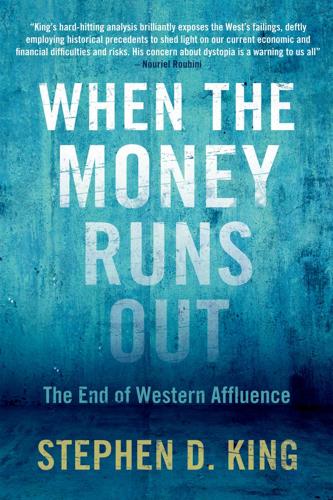
When the Money Runs Out: The End of Western Affluence
by
Stephen D. King
Published 17 Jun 2013
Thus the proprietors lost out, my guide lost out and I lost out, returning home empty-handed. A lack of trust prevented a transaction from taking place. This was a classic example of market failure: all parties wanted a transaction to take place but a lack of trust meant that it was impossible to strike a deal. My experience is not so different from George Akerlof's market for lemons. In his seminal paper published in 1970,1 Akerlof investigated an obvious peculiarity associated with the value of second-hand cars. Why did the value of a brand new car immediately drop as soon as it was driven off the forecourt? The answer was simple: the seller, having owned the car, would know something about its idiosyncratic strengths and weaknesses that the would-be buyer would, inevitably, be clueless about.

Rethinking the Economics of Land and Housing
by
Josh Ryan-Collins
,
Toby Lloyd
and
Laurie Macfarlane
Published 28 Feb 2017
Proponents of these so-called ‘dynamic stochastic general equilibrium’ models argued that, unlike an older generation of models, they were properly ‘micro-founded’ on optimising behaviour at the level of individual households and firms. To the book’s diagnosis of how this came about, I would add a failure to use correct micro-foundations that took into account the asymmetric information revolution initiated by George Akerlof, Michael Spence and Joseph Stiglitz, and the research of Angus Deaton and Christopher Carroll on how households behave when facing uncertainty and liquidity constraints.2 The global financial crisis has highlighted the mistake made by most of the macroeconomics profession and central banks in not incorporating asset prices, including property prices, credit and household balance sheets more generally in their models and their understanding.

Green Swans: The Coming Boom in Regenerative Capitalism
by
John Elkington
Published 6 Apr 2020
Kondratiev’s work was picked up by Austrian economist Joseph Schumpeter, another huge influence on my thinking, and more recently by Carlota Perez, ditto.24 As Perez herself would argue, stories like that of Thomas Midgley Jr., told on pages 171–173, are powerful reminders that new technologies periodically disrupt our economies—and are likely to do so in the coming decades, in the process creating whole new generations of challenges alongside the undoubted benefits. Another Nobel laureate for economics, George Akerlof, concludes that a key design fault in the discipline is that it has favored “hard” research over “soft,” numbers over narrative, causation over correlation. From this perspective, physics is hard, sociology soft. But if economists are to be helpful in reining in Black Swan trajectories and blazing Green Swan pathways, they must work out how to embrace the “too difficult” worlds of environmental and social impact, and linked forms of valuation.

The Irrational Bundle
by
Dan Ariely
Published 3 Apr 2013
—Charles Schwab, Chairman and CEO of The Charles Schwab Corporation “Predictably Irrational is wildly original. It shows why—much more often than we usually care to admit—humans make foolish, and sometimes disastrous, mistakes. Ariely not only gives us a great read; he also makes us much wiser.” —George Akerlof, Nobel Laureate in Economics, Koshland Professor of Economics, University of California, Berkeley “Dan Ariely’s ingenious experiments explore deeply how our economic behavior is influenced by irrational forces and social norms. In a charmingly informal style that makes it accessible to a wide audience, Predictably Irrational provides a standing criticism to the explanatory power of rational egotistic choice.”
…
Roosevelt, Oglethorpe University commencement address, May 22, 1932. Bibliography and Additional Readings Below is a list of the papers and books on which the chapters were based, plus suggestions for additional readings on each topic. Introduction: Lessons from Procrastination and Medical Side Effects Additional readings George Akerlof, “Procrastination and Obedience,” The American Economic Review 81, no. 2 (May 1991): 1–19. Dan Ariely and Klaus Wertenbroch, “Procrastination, Deadlines, and Performance: Self-Control by Precommitment,” Psychological Science 13, no. 3 (2002): 219–224. Stephen Hoch and George Loewenstein, “Time-Inconsistent Preferences and Consumer Self-Control,” Journal of Consumer Research 17, no. 4 (1991): 492–507.
…
Glen Jensen, Calvin Leung, and David Hess, “ ‘Freeloading’ in the Skinner Box Contrasted with Freeloading in the Runway,” Psychological Reports 27 (1970): 67–73. George Loewenstein, “Because It Is There: The Challenge of Mountaineering . . . for Utility Theory,” Kyklos 52, no. 3 (1999): 315–343. Additional readings George Akerlof and Rachel Kranton, “Economics and Identity,” The Quarterly Journal of Economics 115, no. 3 (2000): 715–753. David Blustein, “The Role of Work in Psychological Health and Well-Being: A Conceptual, Historical, and Public Policy Perspective,” American Psychologist 63, no. 4 (2008): 228–240. Armin Falk and Michael Kosfeld, “The Hidden Costs of Control,” American Economic Review 96, no. 5 (2006): 1611–1630.

Economists and the Powerful
by
Norbert Haring
,
Norbert H. Ring
and
Niall Douglas
Published 30 Sep 2012
Laboratory experiments that reproduce the give and take of an employment relationship can help explain the reasons that perceptions of fairness are more important for most labor relationships than market 170 ECONOMISTS AND THE POWERFUL forces. The Swiss economist Ernst Fehr has pioneered the use of the gift exchange game for this purpose. The name of the game refers to an influential theoretical paper by Nobel Memorial Prize winner George Akerlof, called “Labor Contracts as a Partial Gift Exchange.” In the gift exchange model, the effort of workers depends on whether they consider their pay as fair. Therefore many firms pay more than the market clearing wage in order to elicit more effort. One consequence of this policy is that the market does not clear and there is involuntary unemployment (Akerlof 1982).

Economic Gangsters: Corruption, Violence, and the Poverty of Nations
by
Raymond Fisman
and
Edward Miguel
Published 14 Apr 2008
Available on the World Bank website at http://info.worldbank.org/governance/ wgi2007/pdf/govmatters5.pdf (last accessed March 23, 2008). 7. “U.N. Hears of 2 Diplomats’ Treatment,” New York Times, January 10, 1997. 8. This has started to change in recent years, thanks to the pioneering efforts of a renegade band of “behavioral economists” including Matthew Rabin and Nobel Prize winner George Akerlof, both at University of California, Berkeley. Their research shows how people’s feelings—say, about fairness or about identity— can drive economic decision making just as powerfully as the financial incentives that dominate standard economic analysis. 9. There is more discussion of this result in the working paper 222 N O TES version, “Cultures of Corruption: Evidence from Diplomatic Parking Tickets,” NBER Working Paper #12312 (2006). 10.
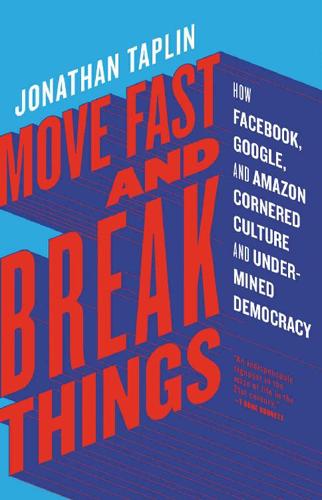
Move Fast and Break Things: How Facebook, Google, and Amazon Cornered Culture and Undermined Democracy
by
Jonathan Taplin
Published 17 Apr 2017
Perhaps Henry Jenkins is right: the neorealism that was so much a part of the American New Wave in the 1970s has drifted into TV. But TV has also spawned an age of reality shows in which Kim Kardashian and Donald Trump can overwhelm any cultural innovation that might exist. 8. In 1970 the Nobel Prize–winning economist George Akerlof published a paper that may help us understand the effect that the commoditization of media by Facebook, YouTube, and Google is having on our culture. The paper was called “The Market for ‘Lemons’: Quality Uncertainty and the Market Mechanism.” Akerlof says that when you buy a used car you assume the worst—it’s a lemon—in your negotiation stance.
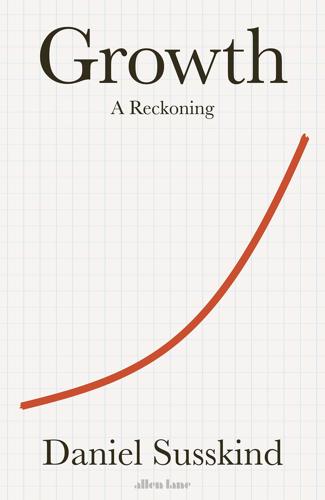
Growth: A Reckoning
by
Daniel Susskind
Published 16 Apr 2024
‘Economic growth can be sustained even in the presence of a finite collection of raw materials,’ writes the economist Charles Jones, ‘as we discover better ways to arrange atoms and better ways to use the arrangements.’30 The infinite universe of ideas allows us to sidestep the constraints imposed by a finite planet. But even if there are many possible arrangements of atoms in the world, are they all useful? It is said that one time when Romer presented the culinary metaphor, the Nobel Prize-winning economist George Akerlof piped up, ‘Yes, the number of possible combinations is huge, but aren’t most of them like chicken ice cream?’ Novel, in other words, but useless.31 Leaving aside the fact that in 2022, an American company in Portland introduced a fried-chicken-flavoured ice cream to modest acclaim – a cautionary tale about setting firm limits to the future of human taste – the thrust of Akerlof’s quip is sensible: many possible ideas for organizing atoms in the world are likely to be of little value in practice.32 That said, what Akerlof’s perceptive scepticism does not quite capture is how huge ‘huge’ really is when you move beyond the confines of a kitchen or a chemistry set into the real world.

Termites of the State: Why Complexity Leads to Inequality
by
Vito Tanzi
Published 28 Dec 2017
To believe that the private market, without regulations and controls, will naturally and always promote the public interest and the general welfare in today’s world, as some economists continue to argue, amounts to closing one’s eyes to much reality and to much daily evidence. 116 Termites of the State Consider the rise of the financial sector, of the private health sector, and of several other sectors that share broadly similar characteristics. Taken together, these sectors now account for a large and growing share of the total market transactions and of the total spending of most individuals. Therefore, the problem is now no longer limited to occasional “lemons” bought from used-car dealers, in the example made famous by George Akerlof in his classic 1970 article on asymmetry in transactions. The problem has become more general. Ironically, in the automobile industry, it has moved from the sale of used cars, with defects unknown to buyers, to the sale of new cars, with defects also hidden from unwary buyers or even from car dealers, but probably known to the car producers.

Bourgeois Dignity: Why Economics Can't Explain the Modern World
by
Deirdre N. McCloskey
Published 15 Nov 2011
The comic point of the book is that the Don is invulnerable to reason, calculation, cool rhetoric, conversation, not to speak of nicely-calculated less or more. (Yet in modern economic life the role of identity and impulse needs to be acknowledged, as the social psychologist Jonathan Haidt, the management theorist James March, the economic historian John Nye, and the economists George Akerlof and Robert Shiller have all affirmed. Not many business decisions could be made without identity and impulse.11) Austen laughs at thoughtless aristocratic gestures and Christian pseudo-martyrdoms. In Austen’s novels, strategic thinking is the means, and if the end is wisely chosen (as it is at the last by the major and developing characters), all is well.
…
If trading were in fact a scene mainly of adulterated flour and over-dear shoes, a matter of making upland wives think your stuff was good when it was rotten, a theater of hypocrisy ruled only by lying and plotting, then no one of faith or justice or indeed of common prudence would venture to take part in it. The self-selection would drive out all faithful people, by a mechanism the economists call, following George Akerlof, the “lemons” effect. If the only automobiles that come be traded, Akerlof observed, are those that work badly and therefore are lemons fit only to be sold off to suckers (an auto that has been in a serious crash, for example, though “repaired”), then everyone will come to suspect that any automobile put up for sale is likely to be a lemon.16 The medieval historian James Davis makes the same point: “If unremitting suspicion [which he finds especially in literary and religious comments on petty traders] reflected the opinion of all medieval market users then exchange would have been very difficult, . . . requiring constant (and costly) surveillance.”17 If only deceitful Scottish tradesmen, or English knaves and men admired out of opinion rather than for who they really are, can succeed in the secondhand market for horses, then everyone will come to suspect that any horse put up for sale is likely to be rotten, impure, over-dear, and dissembling.
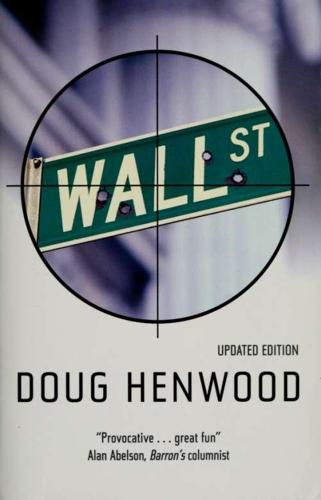
Wall Street: How It Works And for Whom
by
Doug Henwood
Published 30 Aug 1998
Or as one of the major figures in the development of information asymmetry theory, Joseph Stiglitz, put it, "If it's such a good idea, why are you telling me, instead of investing your own money?" (quoted in Kane 1993). This is a remarkably blunt statement for Stiglitz, whose normal mode is the symbols of pure mathematized theory. Interest in "information asymmetry" is usually traced to George Akerlof s 1969 paper on the "lemons" problem — not the fruit, but bum autos. Would-be buyers of used cars have no way of knowing whether the vehicle they're contemplating is any good. So the price must reflect the possibility that it is a lemon, meaning that the sellers of good cars get an unfairly low price — while the sellers of bad ones still get an unfairly high one.
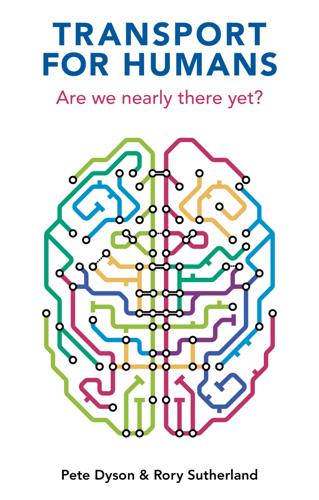
Transport for Humans: Are We Nearly There Yet?
by
Pete Dyson
and
Rory Sutherland
Published 15 Jan 2021
This means there’s little sense in making a service more reliable if the perception of its reliability is already lagging behind reality. Economists call this the ‘market for lemons’: if the customer (traveller) knows some services are bad and others good, but they are unable to know which ones are which, they are inclined to act as though all services are bad. George Akerlof won the Nobel Memorial Prize in Economic Sciences for applying this analysis to second-hand cars, but this downward spiral should concern mass transit operators providing services of variable quality too.16 Social research is the first step to resolving this: talking to people helps transport planners understand motivations, fears and assumptions.

Open for Business Harnessing the Power of Platform Ecosystems
by
Lauren Turner Claire
,
Laure Claire Reillier
and
Benoit Reillier
Published 14 Oct 2017
Without a sufficient level of trust, perceived risks may outweigh the possible financial gains of using the platform. In fact, one of the key issues for platforms is that the producer has more information about what is being exchanged, sold or traded than the users. Using the example of cars, famous economic Nobel Prize winner George Akerlof wrote a very insightful paper titled ‘The Market for Lemons’. In it, he explains that if some sellers are selling cars in working order while others are selling broken cars (so-called ‘lemons’, presumably because they leave a bitter taste in the mouth of buyers) and that buyers have no way of knowing which is which, then the price of all the cars will converge towards the price of the worst possible car.
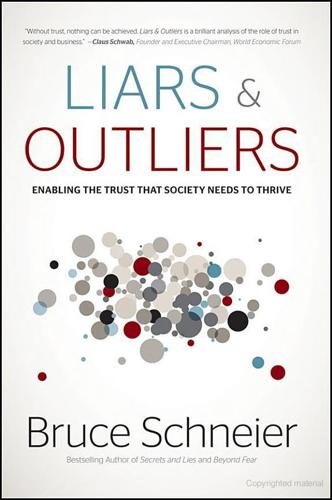
Liars and Outliers: How Security Holds Society Together
by
Bruce Schneier
Published 14 Feb 2012
principal–agent problem Kathleen M. Eisenhardt (1989), “Agency Theory: An Assessment and Review,” The Academy of Management Review, 14:57–74. John M. Darley (2010), “Constructive and Destructive Obedience: A Taxonomy of Principal-Agent Relationships,” Journal of Social Issues, 41:124–54. corporate looting George A. Akerlof, Paul M. Romer, Robert E. Hall, and N. Gregory Mankiw (1993), “Looting: The Economic Underworld of Bankruptcy for Profit,” Brookings Papers on Economic Activity, 1993(2): 1–73. Sambo's restaurants Charles Bernstein (1984), Sambo's: Only a Fraction of the Action: The Inside Story of a Restaurant Empire's Rise and Fall, National Literary Guild.
…
attribute substitution Daniel Kahneman and Shane Frederick (2002), “Representativeness Revisited: Attribute Substitution in Intuitive Judgment,” in Thomas Gilovich, Dale Griffin, and Daniel Kahneman, eds., Heuristics and Biases: The Psychology of Intuitive Judgment, Cambridge University Press, 49–81. a lemons market George Akerlof (1970), “The Market for Lemons: Quality Uncertainty and the Market Mechanism,” Quarterly Journal of Economics, 83:488–500. George E. Hoffer and Michael D. Pratt (1987), “Used Vehicles, Lemons Markets, and Used Car Rules: Some Empirical Evidence,” Journal of Consumer Policy, 10:409–14. Steven E.
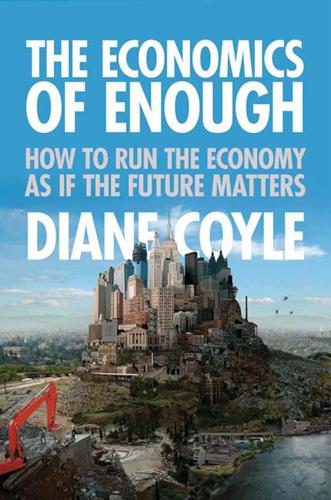
The Economics of Enough: How to Run the Economy as if the Future Matters
by
Diane Coyle
Published 21 Feb 2011
Henderson (2003 a, b). 15 McKitrick (2007). 16 Nordhaus (2007). 17 Nordhaus (2007). 18 Conference on Global Climate Change, (2007) Robert Mendelsohn, “Climate Policy: Minimizing the Present Value of the Sum of the Abatement Costs and Climate Change Damages for All Time”; Gilbert Metcalf, “Distributional Consequences of Policies to Mitigate Warming Effects by Excise Taxes for Carbon Dioxide Emissions in the United States”; Peter Wilcoxen, “Economic Analysis of Policy Choices for Dealing with Climate Change”; Ross McKitrick, “Response to David Henderson’s ‘Governments and Climate Change Issues: The Flawed Consensus.’” http://www.aier.org/research/conferences/climate-change. 19 McKitrick (2007). 20 Nordhaus (2007), 21. 21 Dasgupta (2006), 8. 22 Stern (2009), 71. 23 See for example Hepburn and Klemperer (2006). 24 Brundtlandt (1987). 25 Dasgupta (2009a), 28. 26 Solow (1992). 27 Collier (2010). 28 See http://www.teebweb.org/; accessed 10 May 2010; and also http://news.bbc.co.uk/1/hi/science_and_environment/10103179.stm; accessed 10 May 2010. 29 Sen (2009a), 251. 30 Dasgupta (2010), Diamond (2005); Homer-Dixon (1999); Collier (2010). 31 Partha Dasgupta (2010), 7. 32 See Hamilton and Clemens (1999), Dasgupta and Mäler (2000), Arrow et al. (2003, 2004), Dasgupta (2009b) for increasingly general treatments. 33 Dasgupta (2009a), 42. 34 Report by the Commission on the Measurement of Economic Performance and Social Progress (Sen et al. [2009], 67). NOTES TO CHAPTER THREE 1 Quoted by Achenbach (2010). 2http://www.whitehouse.gov/the_press_office/Remarks-by-the-President-on-Financial-Rescue-and-Reform-at-Federal-Hall. 3 It is a textbook example of the collapse of a market due to asymmetric information set out in a classic article by George Akerlof (1970). 4 IMF, World Economic Outlook, (April 2009), 203. 5 See also IMF http://www.imf.org/external/np/speeches/2010/032110.htm; accessed 14 April 2010. 6 Gokhale and Smetters (2003); accessed 1 April 2010. 7 United Nations Population Division, “Completing the Fertility Transition,” 2002 conference, http://www.un.org/esa/population/publications/completingfertility/completingfertility.htm, containing the following papers: “The Future of Fertility in Intermediate-Fertility Countries,” http://www.un.org/esa/population/publications/completingfertility/RevisedPEPSPOPDIVpaper.PDF, also “Eamining Changes in the Status of Women and Gender as Predictors of Fertility Change Issues in Intermediate-Fertility Countries.” http://www.un.org/esa/population/publications/completingfertility/RevisedCosio-Zavalapaper.PDF. 8 Sen (1990). 9 OECD (2006b), 42. 10 Willetts (2010), 253. 11 OECD (2006a), EU Projections European Economy: “The 2005 Projections of Age-related Expenditure” (2005). http://ec.europa.eu/economy_finance/publications/publication6502_en.pdf .
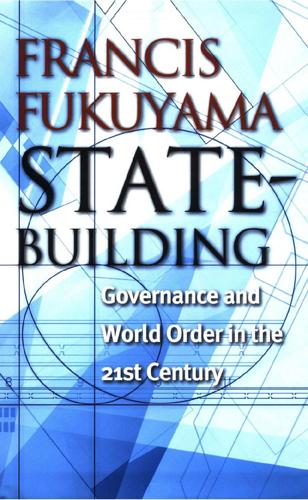
State-Building: Governance and World Order in the 21st Century
by
Francis Fukuyama
Published 7 Apr 2004
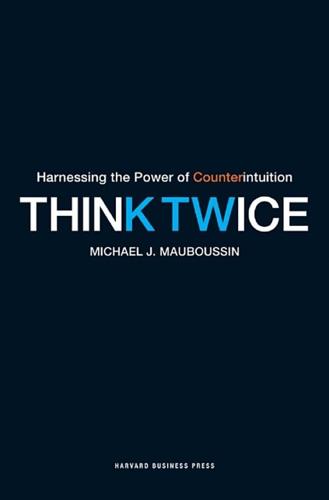
Think Twice: Harnessing the Power of Counterintuition
by
Michael J. Mauboussin
Published 6 Nov 2012
Freeman and Company, 1994); and Samuel M. McClure, David I Laibson, George Loewsenstein, and Jonathan D. Cohen, “Separate Neural Systems Value Immediate and Delayed Monetary Rewards,” Science 306 (October 15, 2004), 503–507. 28. Jerome Groopman tells a similar story. See Groopman, How Doctors Think, 225–233. 29. George A. Akerlof and Robert J. Shiller, Animal Spirits: How Human Psychology Drives the Economy, and Why It Matters for Global Capitalism (Princeton, NJ: Princeton University Press, 2009), 36–37; and Whitney Tilson and Glenn Tongue, More Mortgage Meltdown: 6 Ways to Profit in These Bad Times (New York: John Wiley & Sons, 2009), 29–47. 30.

The Trouble With Billionaires
by
Linda McQuaig
Published 1 May 2013
Instead, Solow attributed the majority of the growth – about 88 per cent – to ‘technical change in the broadest sense’.10 Herbert A. Simon, another Nobel Prize-winning economist, referred to the huge store of knowledge from the past as ‘social capital’, and argued that access to it was our main source of wealth, responsible for about 90 per cent of national income.11 Still another Nobel laureate, George Akerlof, points to the economic significance of this technological inheritance in noting that ‘our marginal products are not ours alone…[but] are due almost entirely to the cumulative process of learning that has taken us from stone age poverty to twenty-first century affluence’.12 Indeed, it’s hard to figure out the rationale for the mammoth discrepancies in today’s incomes when so much of what any of us are able to accomplish is due to all the learning and knowledge accumulated in the centuries preceding us.

Jared Bibler
by
Iceland's Secret The Untold Story of the World's Biggest Con-Harriman House (2021)
In addition to the three executives Sigurður, Hreiðar Már, and Magnús, the high court found the CEO of Icelandic operations, the head of proprietary trading, two proprietary traders, the head of credit, and a senior credit officer all to be guilty in this case. 86 Hreiðar Már was charged separately in this case with insider trading and abuse of agency, and absolved at the appeals court level in 2020. Landsréttur Íslands, case number 917/2018. 87 Phishing for Phools: The Economics of Manipulation and Deception, George Akerlof & Robert Shiller, 2015, p. 118 88 Hæstiréttur Íslands, case number 842/2014. On 12 March 2021, Iceland’s top court, Hæstiréttur Íslands, issued a new judgment for Sigurjón in the Landsbanki market manipulation case. It upheld his earlier conviction for market abuse, but restricted now to the trading days 29 September to 3 October 2008.
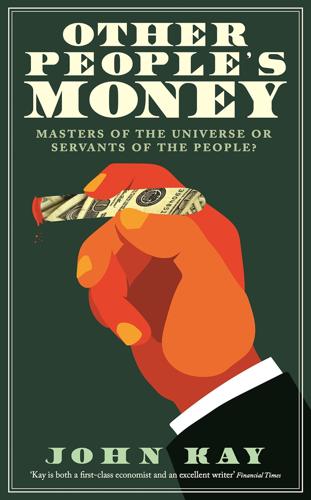
Other People's Money: Masters of the Universe or Servants of the People?
by
John Kay
Published 2 Sep 2015
Tuckett, D., 2011, Minding the Markets, London, Palgrave Macmillan, p. 18. 35. Sinclair, U., 1994, I, Candidate for Governor: And How I Got Licked (originally published 1935), London, University of California Press, p. 109. 3: Intermediation 1. McCardie, J., Armstrong v. Jackson (1917) 2KB 822. 2. George Akerlof employed the used car market as an example to highlight how markets can break down when information asymmetry is present in his classic 1970 article: Akerlof, G.A., 1970, ‘The Market for “Lemons”: Quality Uncertainty and the Market Mechanism’, Quarterly Journal of Economics, 84 (3), pp. 488–500. 3.
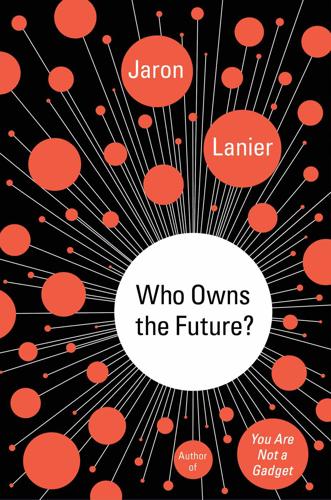
Who Owns the Future?
by
Jaron Lanier
Published 6 May 2013
This is an instance in which a classic problem in pre-digital markets should have been put to rest to a significant degree by digital designs. The supposed transparency of the way we have structured our present information economy turned out to be unusable. The problem in question is known as the “Market for Lemons,” after the title of the famous paper, which helped earn its author, George Akerlof, a Nobel Prize13 in Economics. The lemons in the paper were not from the lemonade stand we encountered earlier, but were instead crummy used cars for sale. The paper detailed how a prevalence of bad used cars distorted markets through the mechanism of information asymmetry. Buyers worried that sellers knew more about a used car’s problems than they were letting on, which put a pervasive burden on the market, stunted it, and made it less efficient.

Networks, Crowds, and Markets: Reasoning About a Highly Connected World
by
David Easley
and
Jon Kleinberg
Published 15 Nov 2010
For considering the role of asymmetric information, we’ll follow a similar strategy, first developing the case of the used-car market as a simple, stylized example, and then showing how the same principles apply to a range of more complex and fundamental markets. In focusing first on used cars, we’re following the rhetorical lead of the economist George Akerlof, who published a foundational paper on asymmetric information [10] for which he shared the 2001 Nobel Prize in Economics. His leading example in the paper was the market for used cars — or, as he called it, the “market for lemons.” (A used car that is particularly bad is called a lemon.) The idea behind this phrase is old, probably as old as trading itself, but Akerlof was the first to clearly articulate the underlying principle and its implications for how markets work — or, in some cases, how they fail to work.
…
Signaling in the Labor Market. This idea of signaling applies to many settings other than just the used-car market. Perhaps its most important application is to the labor market, in which education can serve as signal; Michael Spence developed this idea and shared the 2001 Nobel Prize in Economics (with George Akerlof and Joseph Stiglitz) for his work on this topic [373]. Spence’s idea is easy to understand in the context of our earlier labor market example, with productive and unproductive workers which firms cannot initially distinguish from each other. Suppose that it is easier for productive workers to obtain education than it is for unproductive workers.
…
Search in power-law networks. Physical Review E, 64:046135, 2001. [8] U.S. Environmental Protection Agency. Clean air markets. http://www.epa.gov/airmarkt/. [9] Ravindra K. Ahuja, Thomas L. Magnanti, and James B. Orlin. Network Flows: Theory, Algorithms, and Applications. Prentice Hall, 1993. [10] George Akerlof. The market for ’lemons’: Quality uncertainty and the market mechanism. Quarterly Journal of Economics, 84:488–500, 1970. [11] Réka Albert and Albert-László Barabási. Statistical mechanics of complex networks. Reviews of Modern Physics, 74:47–97, 2002. 799 800 BIBLIOGRAPHY [12] Armen A.
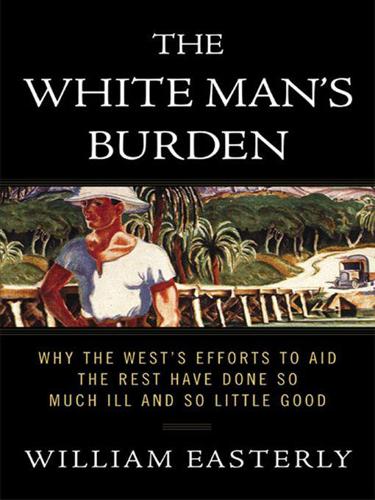
The White Man's Burden: Why the West's Efforts to Aid the Rest Have Done So Much Ill and So Little Good
by
William Easterly
Published 1 Mar 2006
So I would not bother with safe food handling, selling you the lousy tacos you expected. I could even keep all the best taco ingredients and safest procedures for tacos consumed by my own family, and sell you the tacos made with shoddy ingredients and food safety procedures. So the market does not supply healthy tacos! The economist George Akerlof of Berkeley won the Nobel Prize for this kind of insight, applied to sales of used cars.14 Even slightly used cars sell for far less than new cars because buyers have no information on the cars’ quality (and used car sellers have a tendency to sell lemons). Many other types of cheating exist.

Limitless: The Federal Reserve Takes on a New Age of Crisis
by
Jeanna Smialek
Published 27 Feb 2023
When she wasn’t collecting rocks, she was studying probability, matrix algebra, and finite dimensional vector spaces and enjoying off-Broadway theater.[32] She attended Brown University’s Pembroke College for her undergraduate degree, and it was there that she fell in love with the practical public policy implications in economics. She went on to a doctorate at Yale, then worked at Harvard before taking a role at the Federal Reserve Board in Washington. At a Fed lunch in 1977, she met her future husband, the economist George Akerlof. They bonded over their shared devotion to Keynesian economics—the idea that the government has an active role to play in resolving market breakdowns—and married less than a year later. They would go on to collaborate extensively, especially while they both worked at the University of California, Berkeley.
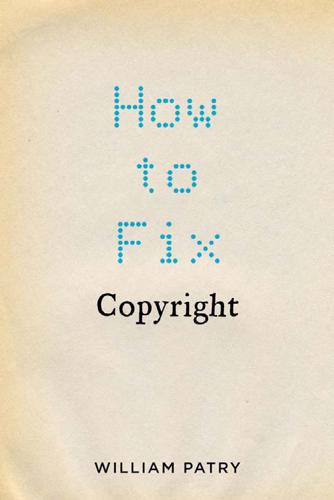
How to Fix Copyright
by
William Patry
Published 3 Jan 2012
Supreme Court in the Eldred case wrote: “Where building-block materials are copyrighted, new creators must pay to use those materials, and may incur additional costs in locating and negotiating with copyright holders....By reducing the set of building-block materials freely available for new work, the [term extension] raises the cost of producing new works and reduces the number created.” Brief of George Akerlof et al. in Eldred v. Reno, No. 01-618, page 2–3. May 20, 2002. 23. See, e.g., Gowers Review of Intellectual Property, (2006), Centre for Intellectual Property and Information Law (CIPIL)—http://www. hm-treasury.gov.uk/gowers_review.htm; The Recasting of Copyright & Related Rights for the Knowledge Economy (2006), Institute for Information Law (IViR), University of Amsterdam for DG Internal Market; http://www.ivir.nl/publications/other/IViR_Recast_Final_ Report_2006.pdf; Professor David Newbery (FBA, University of Cambridge), letter to Commission; NOTES TO PAGE 197 307 President Barroso (April 10, 2008) (Letter opposing extension from thirty-two economists including Nobel prize-winners and other persons working the field of copyright); Bournemouth Statement, letter and statement to Commission President Barroso (June 16, 2008), academic version “Creativity stifled?”

The Sharing Economy: The End of Employment and the Rise of Crowd-Based Capitalism
by
Arun Sundararajan
Published 12 May 2016
As I defined and discussed in chapter 6, sharing economy platforms can reduce many forms of information asymmetry. The predictions of economic theory are that such reductions will increase, rather than reduce, wages over time. Let me explain the consequences of information asymmetry, and in particular, the effect of “adverse selection” further by appealing to the example of used car markets that George Akerlof famously used in his Nobel Prize–winning work. In Akerlof’s model, there are two kinds of used cars—those of high quality, and those of low quality (the “lemons”). Suppose that prospective buyers have no way of determining the true quality of a used car prior to purchasing it. The price a buyer would be willing to pay would then be somewhere between the value of a high-quality car and the value of a lemon.
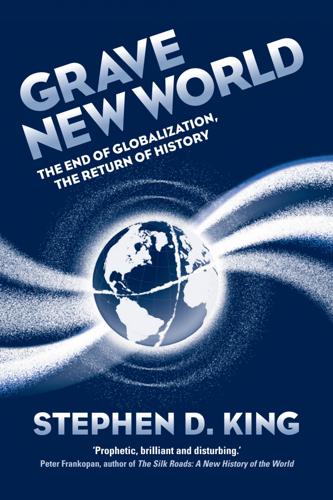
Grave New World: The End of Globalization, the Return of History
by
Stephen D. King
Published 22 May 2017
King, The End of Alchemy: Money, banking and the future of the global economy, Little, Brown, London, 2016. 13.Sherman McCoy, the protagonist in Wolfe’s Bonfire of the Vanities, is a Wall Street trader whose life goes horribly wrong just when it seemed to be going so well: he was a self-styled Master of the Universe. 14.For a discussion of the effects of dysfunctional belief systems, see R. Hausmann, ‘Through the Venezuelan looking glass’, Project Syndicate, August 2016, available at: https://www.project-syndicate.org/commentary/venezuela-destructive-belief-systems-by-ricardo-hausmann-2016-08 15.The classic article on asymmetric information is George Akerlof, ‘The market for lemons: Quality, uncertainty and the market mechanism’, Quarterly Journal of Economics, 84:3 (1970), pp. 488–500. 16.See, for example, E. Passari and H. Rey, Financial Flows and the International Monetary System, National Bureau of Economic Research Working Paper No. 21172, Cambridge, MA, May 2015. 17.The pre-2000 figures come from M.
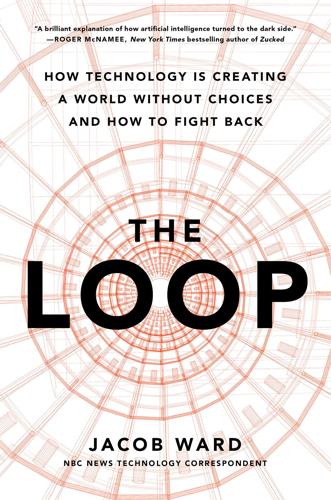
The Loop: How Technology Is Creating a World Without Choices and How to Fight Back
by
Jacob Ward
Published 25 Jan 2022
In a 2015 New York Times op-ed, he railed against the fact that airlines like United routinely require us to actively turn down travel insurance even when buying a fully refundable airline ticket. And in a larger sense, he railed against the idea that these dark nudges—what Robert Shiller and George Akerlof called phishing in their 2015 book Phishing for Phools—are being deployed by the private sector. Critics of his and Sunstein’s work have complained that government policies that nudge us to make better decisions are paternalistic, maybe even unconsciously dictatorial. But, he wrote, one has a voice in what a representative government does.

Alchemy: The Dark Art and Curious Science of Creating Magic in Brands, Business, and Life
by
Rory Sutherland
Published 6 May 2019
It may correct itself if better boards arise, or if a shrewd company such as Samsung cannily attaches its name to the best. Noticeably, brands such as Juul and Vype are starting to emerge in the similarly haphazard vaping market. In many ways, expensive advertising and brands arise as a solution to a problem identified by George Akerlof in his 1970 paper ‘The Market for Lemons’ in the Quarterly Journal of Economics. The problem is known as ‘information asymmetry’, whereby the seller knows more about what he is selling than the buyer knows about what he is buying. This lesson was learned the hard way in Eastern Bloc countries under communism; brands were considered un-Marxist, so bread was simply labelled ‘bread’.
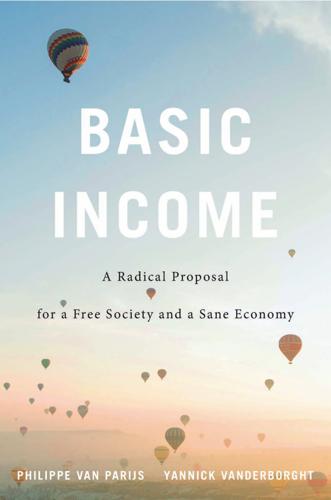
Basic Income: A Radical Proposal for a Free Society and a Sane Economy
by
Philippe van Parijs
and
Yannick Vanderborght
Published 20 Mar 2017
“Young Adult Obesity and HouseÂ�hold Income: Effects of Unconditional Cash Transfers.” American Economic Journal: Applied Economics 5(2): 1–28. Akerlof, George A. 1982. “Â�Labor Contracts as Partial Gift Exchange.” In George A. Akerlof, ed., An Economic Theorist’s Book of Tales, 145–174. Cambridge: Cambridge University Press, 1984. Akerlof, George A., and Janet L. Yellen. 1986. “Introduction.” In George A. Akerlof and Janet L. Yellen, eds., Efficiency Wage Models of the Â�Labor Market, 1–22. Cambridge: Cambridge University Press. Alaluf, Mateo. 2014. L’allocation universelle. Nouveau label de précarité. Mons: Couleur Livres.

Manias, Panics and Crashes: A History of Financial Crises, Sixth Edition
by
Kindleberger, Charles P.
and
Robert Z., Aliber
Published 9 Aug 2011
Morris’s The Trillion Dollar Meltdown: Easy Money, High Rollers, and the Great Credit Crash, James Grant’s Mr Market Miscalculates: The Bubble Years and Beyond, Charles Gasparino’s The Sellout: How Three Decades of Wall Street Greed and Government Mismanagement Destroyed the Global Financial System, Barry Rithholtz’s Bailout Nation: How GREED and EASY MONEY Corrupted Wall Street And Shook the World Economy, and Meltdown: How Greed and Corruption Shattered Our Financial System and How We Can Recover by Katrina vanden Heuvel and the Editors of the Nation. Some of the books are by academics. One of the first was Richard Posner’s The Failure of Capitalism. Robert J. Shiller produced The Subprime Solution and George A. Akerlof together with Shiller wrote Animal Spirits; some of the chapters in this book focus on the crisis. Simon Johnson and James Kwak authored 13 Bankers: The Wall Street Takeover and the Next Financial Meltdown. Raghuram G. Rajan wrote Fault Lines: How Hidden Fractures Still Threaten the World Economy, Joseph Stiglitz produced Freefall: America, Free Markets, and the Sinking of the World Economy and Nassim Nicholas Taleb brought out The Theory of Black Swan Events, a critique of the prevailing consensus in academic finance about market efficiency.
…
More and more economic theorists are moving away from unswerving reliance on the assumption that market participants are uniformly intelligent, informed, and independent in thought, introducing such concepts as asymmetric information (different knowledge available to different participants), cognitive dissonance (unconscious suppression of information that fails to fit a priori views), herd behavior, procrastination that results in failure to act in timely fashion, and so on. Those interested should consult the work especially of George Akerlof and Richard Thaler. For relevant studies, see Frederic S. Miskin, ‘Asymmetric Information and Financial Crises: a Historical Perspective’, in R. Glenn Hubbard, ed., Financial Markets and Financial Crises (Chicago: University of Chicago Press, 1991), pp. 69–108; and Thomas Lux, ‘Herd Behavior, Bubbles and Crashes’, Economic Journal, vol. 105 (July 1995), pp. 881–96. 11.
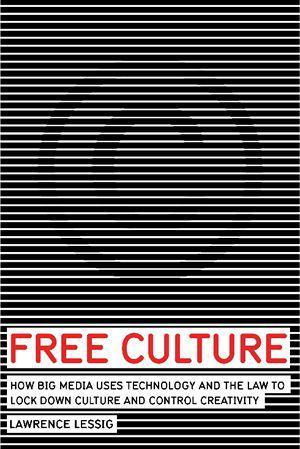
Free culture: how big media uses technology and the law to lock down culture and control creativity
by
Lawrence Lessig
Published 15 Nov 2004
One made the argument I've already described: A brief by Hal Roach Studios argued that unless the law was struck, a whole generation of American film would disappear. The other made the economic argument absolutely clear. This economists' brief was signed by seventeen economists, including five Nobel Prize winners, including Ronald Coase, James Buchanan, Milton Friedman, Kenneth Arrow, and George Akerlof. The economists, as the list of Nobel winners demonstrates, spanned the political spectrum. Their conclusions were powerful: There was no plausible claim that extending the terms of existing copyrights would do anything to increase incentives to create. Such extensions were nothing more than "rent-seeking"—the fancy term economists use to describe special-interest legislation gone wild.
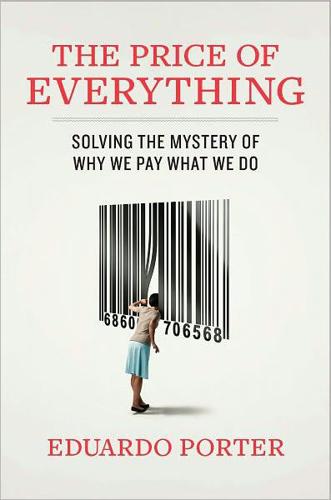
The Price of Everything: And the Hidden Logic of Value
by
Eduardo Porter
Published 4 Jan 2011
: Eugene Fama’s quote is in Douglas Clement, “Interview with Eugene Fama,” The Region, Federal Reserve Bank of Minnesota, December 2007. Keynes’s quote is in John Maynard Keynes, The General Theory of Employment, Interest and Money (New York: Harcourt Brace and World, 1965), p. 161. Robert Shiller’s theory is described in George Akerlof and Robert Shiller, Animal Spirits: How Human Psychology Drives the Economy, and Why It Matters for Global Capitalism (Princeton: Princeton University Press, 2010). 240-246 Economics for a New World: Limits to the assumption of human rationality and self-regard are discussed in Herbert Gintis, “Five Principles for the Unification of the Behavioral Sciences,” Working Paper, May 13, 2008.
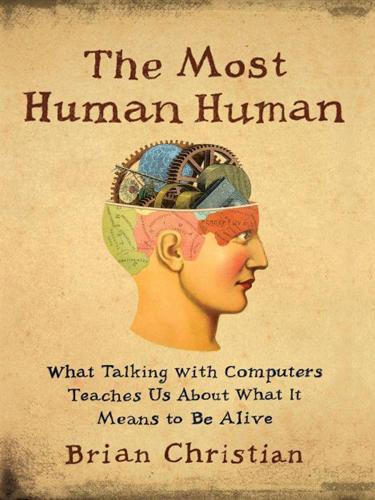
The Most Human Human: What Talking With Computers Teaches Us About What It Means to Be Alive
by
Brian Christian
Published 1 Mar 2011
“How we can prevent being fooled,” says Jerome Groopman, Recanati Professor of Medicine at Harvard Medical School. “The weird ways we act,” says business writer James Surowiecki. “Foibles, errors, and bloopers,” says Harvard psychologist Daniel Gilbert. “Foolish, and sometimes disastrous, mistakes,” says Nobel laureate in economics George Akerlof. “Managing your emotions … so challenging for all of us … can help you avoid common mistakes,” says financial icon Charles Schwab.12 Now, some of what passes for “irrationality” in traditional “rational” economics is simply bad science, cautions Daniel Kahneman, Nobel laureate from Princeton.

The Globalization Paradox: Democracy and the Future of the World Economy
by
Dani Rodrik
Published 23 Dec 2010
That is why he envisaged capital controls as an integral part of any stable system of international finance. Perhaps the most consummate fox among today’s economists is Joe Stiglitz, whose research constitutes a nearly endless catalogue of the ways in which markets can fail. Stiglitz won a Nobel Prize in 2001 (along with George Akerlof and Mike Spence) for theoretical work showing how “asymmetric information” distorts incentives in a wide range of markets. If you know more than I do about the value of what you are selling me—whether it is your used car, your labor, or your debt—then we’re in for a troubled relationship. Prices in such transactions tend to provide the wrong signals.

Windfall: The Booming Business of Global Warming
by
Mckenzie Funk
Published 22 Jan 2014
.: Cambridge University Press, 2007), Field Notes from a Catastrophe by Elizabeth Kolbert (New York: Bloomsbury, 2006), The Weather Makers by Tim Flannery (New York: Atlantic Monthly Press, 2005), and Six Degrees by Mark Lynas (London: Fourth Estate, 2007). I later relied on Animal Spirits: How Human Psychology Drives the Economy, and Why It Matters for Global Capitalism by George Akerlof and Robert Shiller (Princeton, N.J.: Princeton University Press, 2009) as I considered humankind’s response to climate change. The history of Arctic exploration and the Northwest Passage is covered in Resolute by Martin Sandler (New York: Sterling, 2006) and Dangerous Passage by Gerard Kenney (Toronto: Natural Heritage, 2006).
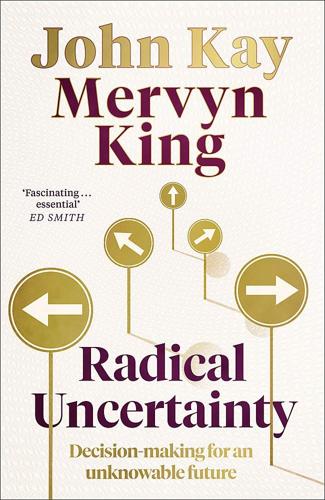
Radical Uncertainty: Decision-Making for an Unknowable Future
by
Mervyn King
and
John Kay
Published 5 Mar 2020
If goods remain unsold, then a fall in the price should stimulate demand and clear the market. But in some markets things don’t seem to work that way. One reason is that sellers may know far more about the quality of the goods they are selling than do the buyers, and buyers recognise that fact. In 1970, George Akerlof showed that in the presence of this ‘asymmetric information’ it may be difficult to find any price at which trade occurs. 5 Potential buyers of second-hand cars do not know whether a particular vehicle is of high or low quality. They are perhaps willing to pay a particular price for a car of average quality.

Animal Spirits: The American Pursuit of Vitality From Camp Meeting to Wall Street
by
Jackson Lears
As in the post–World War II era, financial policymakers sought to conjure animal spirits, but also to keep them moving in the right direction by systematically deploying statistics, as Wells Fargo does in its animal spirits index. Such exercises have led observers to discern a contemporary revival of Keynes’s ideas. In 2009, two behavioral economists, George Akerlof and Robert Shiller, appeared to signal the return of Keynes when they published Animal Spirits: How Human Psychology Drives the Economy, and Why It Matters for Global Capitalism. But they defanged animal spirits, reducing them to mere confidence—the sort of emotion that seems quantifiable in surveys, not to mention assimilable to neoclassical economic assumptions.

Willful: How We Choose What We Do
by
Richard Robb
Published 12 Nov 2019
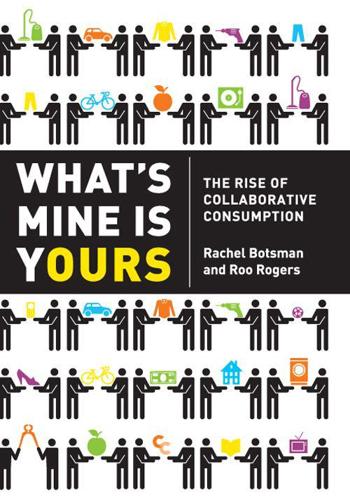
What's Mine Is Yours: How Collaborative Consumption Is Changing the Way We Live
by
Rachel Botsman
and
Roo Rogers
Published 2 Jan 2010
This is a working article written by Butts while on the Knight-Bagehot fellowship for business journalists at Columbia Journalism School and Columbia Business School, http://www.mickeybutts.com/wj_business.html. 19. Ibid. 20. Joe Nocera, A Piece of the Action: How the Middle Class Joined the Money Class, as quoted in Vanity Fair, “Rethinking the American Dream,” www.vanityfair.com/culture/features/2009/04/american-dream200904. 21. George A. Akerlof and Robert J. Shiller, Animal Spirits: How Human Psychology Drives the Economy and Why It Matters for Global Capitalism (Princeton University Press, 2009), 128. 22. Steve Rhode, founder of myvesta.org, found that 26 percent of his company’s clients say they never look at the statement. Quoted in Mickey Butts, “Why We Charge: What Behavioral Economics Can Tell Us.” 23.
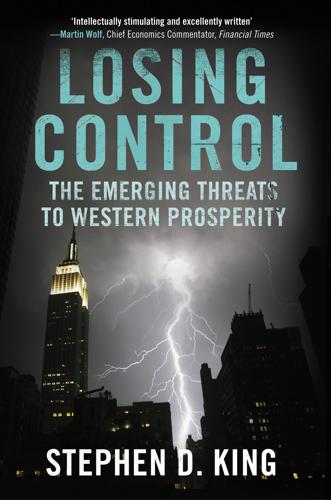
Losing Control: The Emerging Threats to Western Prosperity
by
Stephen D. King
Published 14 Jun 2010
An Inquiry into the Nature and Causes of the Wealth of Nations, first published in 1776. As it turned out, this was a remarkably auspicious year for political and economic developments. 9. See, for example, ‘The market for lemons: quality uncertainty and the market mechanism’, the groundbreaking paper by George A. Akerlof, Quarterly Journal of Economics, 84.3 (1970), pp. 488–500. 10. For an interesting modern discussion of the role of ‘good government’, see Timothy Besley’s ‘ ‘Principled Agents?’ The Political Economy of Good Government’, The Lindahl Lectures (Oxford, 2006). The case for government in general is famously well expressed in Thomas Hobbes’s Leviathan, where the ‘state of nature’ gives rise to continuous wars leaving human lives ‘solitary, poor, nasty, brutish and short’.

The Road to Ruin: The Global Elites' Secret Plan for the Next Financial Crisis
by
James Rickards
Published 15 Nov 2016
Faust is a member in good standing of the Keynesian-monetarist academic coterie. He received his Ph.D. in 1988 from the University of California, Berkeley. Janet Yellen was a professor at Berkeley before she became a senior Fed official. Faust’s thesis adviser, the Nobel Prize–winning economist George Akerlof, is married to Yellen. Faust worked at the Fed in various capacities from 1981 to 2006, ultimately becoming assistant director in the international finance division. Suffice to say, Faust was no stranger to the Fed, Bernanke, or Yellen when he got a call to advise the board in 2012. On January 20, 2015, not long after he left the Fed, Jon and I had dinner at The National, a popular New York steakhouse, in a private dining room on the second floor.
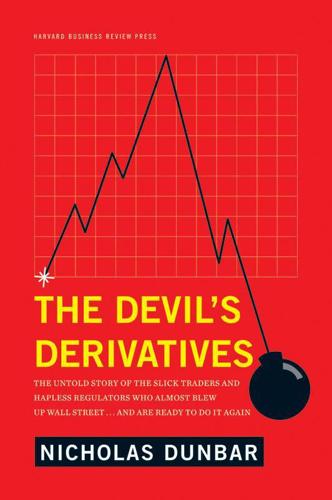
The Devil's Derivatives: The Untold Story of the Slick Traders and Hapless Regulators Who Almost Blew Up Wall Street . . . And Are Ready to Do It Again
by
Nicholas Dunbar
Published 11 Jul 2011
“If you’re buying from a dealer, what makes you think the dealer knows less than you do? It’s like buying second-hand cars. These fancy products—I understand their appeal to buyers, but the fact is, unless they’re mispriced, you’re getting exactly what you paid for.” Miller was making a reference to the so-called lemons problem identified by another Nobel-winning economist, George Akerlof. In the same way that buyers of second-hand cars face a disadvantage against dealers trying to sell them lemons, nonspecialist buyers of derivatives have less information about those hard-to-understand products than the banks that create them. Akerlof’s work highlighted a flaw in the free market: that competition will inevitably tease out all pertinent information about a product and lead to fair pricing.
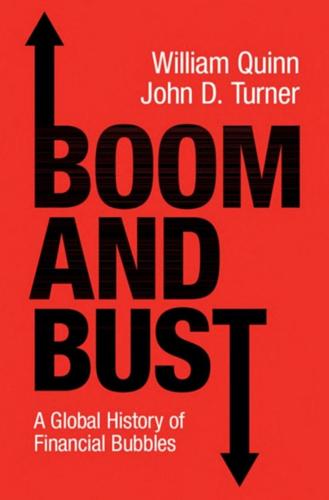
Boom and Bust: A Global History of Financial Bubbles
by
William Quinn
and
John D. Turner
Published 5 Aug 2020
Or do our historical bubbles simply offer salutary lessons in how to spot bubbles and avoid them? The lessons from the ashes of past bubbles for amateur investors are particularly pertinent. During bubbles, amateur investors often rush into the market, whether for stocks or houses. In nearly every bubble episode, there are instances of what George Akerlof and Robert Shiller call ‘phishing for phools’ – attempts to persuade people to part with their money and put it into some nebulous scheme.31 The main takeaway from this book for amateur investors is that they are better off sitting out bubbles in stocks and particularly in houses. Get-rich-quick investments are always enticing, but typically only highly experienced investors and insiders profit from a bubble, generally at the expense of newcomers.
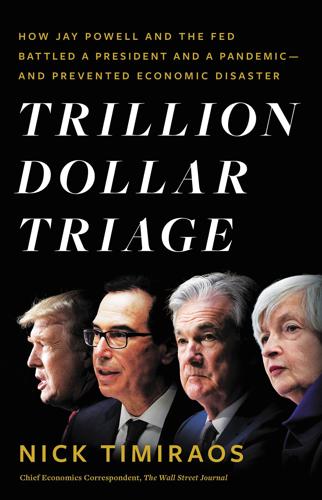
Trillion Dollar Triage: How Jay Powell and the Fed Battled a President and a Pandemic---And Prevented Economic Disaster
by
Nick Timiraos
Published 1 Mar 2022
But then she met visiting Yale economist James Tobin, an adviser to Kennedy and Johnson, and was taken by Tobin’s Keynesian belief that the government had an obligation to combat the human suffering caused by unemployment. Yellen went on to earn her PhD at Yale, with Tobin as her mentor. Her notes of his lectures were so meticulous that he asked her to turn them into a textbook.11 After a teaching stint at Harvard, Yellen joined the Fed’s staff in the fall of 1977. She met her future husband, economist George Akerlof, at lunch in the cafeteria.12 They collaborated often on provocative research topics, including why workers were more likely to quit their jobs when the economy was strong, what caused out-of-wedlock births, and how community norms could deter gang crime. At the Fed’s meeting in December 2012, Yellen warned against repeating the mistakes of the Bank of Japan, which in its long-running battle with declining prices had conveyed skepticism about the benefits of QE.
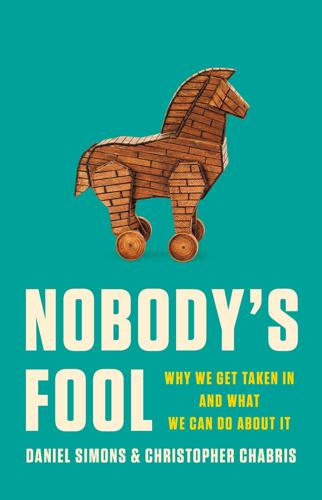
Nobody's Fool: Why We Get Taken in and What We Can Do About It
by
Daniel Simons
and
Christopher Chabris
Published 10 Jul 2023
Gilbert Chikli and the president scam are described in Evan Ratliff’s podcast, Persona: The French Deception (Wondery, 2022) [https://wondery.com/shows/persona/] and in E. Kinetz, T. Goldenberg, D. Estrin, and R. Satter, “AP Investigation: How Con Man Used China to Launder Millions,” AP News, March 28, 2016 [https://apnews.com/article/business-middle-east-israel-europe-africa-7500da6eb1d94e1dbb7e5650d1c20bd6]. 5. Writers like Maria Konnikova, Dan Davies, George Akerlof, Robert Shiller, Eugene Soltes, and Edward Balleisen have covered these topics well in recent years. We recommend the following books: M. Konnikova, The Confidence Game: Why We Fall for It… Every Time (New York: Viking, 2016); D. Davies, Lying for Money: How Legendary Frauds Reveal the Workings of the World (New York: Scribner, 2021); G.
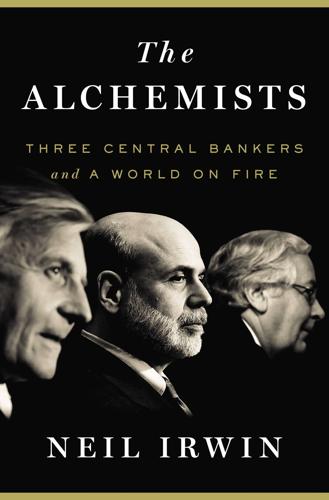
The Alchemists: Three Central Bankers and a World on Fire
by
Neil Irwin
Published 4 Apr 2013
The 110 attendees, including a handful of journalists, are chosen by the Kansas City Fed president, with the guest list constrained by the size of the Jackson Lake Lodge’s fur-trapper-modernist ballroom. This is surely the only conference of its type to which a Nobel laureate such as Berkeley economist George Akerlof would find himself invited only as the spouse of San Francisco Fed president Janet Yellen, not on his own account. Inevitably, small talk at the kickoff dinner devolves to analyzing who is and isn’t in attendance that year. New York Times columnist Paul Krugman, himself a Nobel laureate and once a regular attendee, concluded that he was blackballed from the conference for criticizing Greenspan too harshly.

A Demon of Our Own Design: Markets, Hedge Funds, and the Perils of Financial Innovation
by
Richard Bookstaber
Published 5 Apr 2007
Things can get pretty perverse if adverse selection goes too far. Extending this good car/bad car case to where there is a continuum of quality of cars, we might find that not only do the bad cars drive out the good cars, but the really bad cars drive out the moderately bad ones, and so on, until no market exists at all. This basic argument, presented in George Akerlof’s famous paper, “The Market for ‘Lemons’: Quality Uncertainty and the Market Mechanism” (Quarterly Journal of Economics, August 1970, pages 488–500), was the basis for his award of the Nobel Prize in 2001. 6. Carol J. Loomis’s Fortune article, “Warren Buffett’s Wild Ride at Salomon” (October 27, 1997), provides an insider’s view of Warren Buffett’s reaction to this scandal.

The Blockchain Alternative: Rethinking Macroeconomic Policy and Economic Theory
by
Kariappa Bheemaiah
Published 26 Feb 2017
Putting it all together "Economic theorists, like French chefs in regard to food, have developed stylized models whose ingredients are limited by some unwritten rules. Just as traditional French cooking does not use seaweed or raw fish, so neoclassical models do not make assumptions derived from psychology, anthropology, or sociology. I disagree with any rules that limit the nature of the ingredients in economic models", George Akerlof, An Economic Theorist’s Book of Tales (1984) It would seem that we have drifted from the topic of the Blockchain whilst endeavouring to grasp the basics of complexity economics. But actually, we were just setting the stage to the final point to be made in this book. The Blockchain is not a panacea.
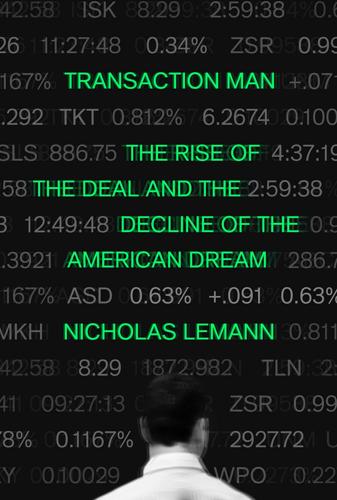
Transaction Man: The Rise of the Deal and the Decline of the American Dream
by
Nicholas Lemann
Published 9 Sep 2019
Wagner Labor Archives at New York University; the Columbia Center for Oral History in New York; and the Anderson University and Church of God Archives at Anderson University in Indiana. A few of the many people I consulted about the book were particularly generous with their advice, either along the way or in response to an early draft of the manuscript that I had given them: George Akerlof, Roy Bahat, Richard Bookstaber, Jeffrey Frank, Rakesh Khurana, Frank Levy, and Elisabeth Sifton. My agent, Amanda Urban, and her husband, Ken Auletta, suggested that I make Reid Hoffman one of the profile subjects in the book and introduced me to him. My editor at Farrar, Straus and Giroux, Alexander Star, did a superb job of helping me sharpen and clarify my arguments and tell the book’s stories more engagingly.
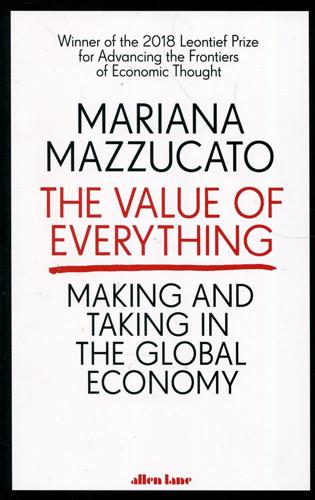
Value of Everything: An Antidote to Chaos The
by
Mariana Mazzucato
Published 25 Apr 2018
It plays a bigger part in macroeconomics, which deals with the economy as a whole, but at best as a redistributor of the wealth created by companies and an investor in the ‘enabling' conditions companies need - infrastructure, education, skills and so on. The marginal theory has fostered the idea that collectively produced value derives from individual contributions. Yet, as the American economist George Akerlof, who shared the Nobel Prize in Economics in 2001, said: ‘Our marginal products are not ours alone'71 - they are the fruits of a cumulative process of learning and investment. Collective value creation entails a risk-taking public sector - and yet the usual relationship between risks and rewards, as taught in economics classes, does not seem to apply.
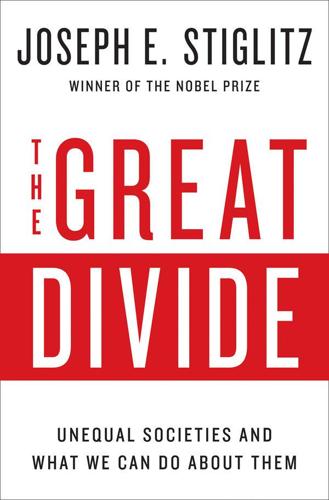
The Great Divide: Unequal Societies and What We Can Do About Them
by
Joseph E. Stiglitz
Published 15 Mar 2015
And so, I owe a great deal to my thesis supervisors, two of the great economists of the twentieth century, Robert Solow (whose own dissertation was on the subject) and Paul Samuelson, for encouraging me in this line of research, as well as for their great insights.4 And an especial thanks to my first co-author, George Akerlof, who shared the 2001 Nobel Prize with me. At Cambridge, we often discussed the determinants of the distribution of income, and I benefited enormously from conversations with Frank Hahn, James Meade, Nicholas Kaldor, James Mirrlees, Partha Dasgupta, David Champernowne, and Michael Farrell. It was there that I tutored and then began my collaboration with Anthony Atkinson, the leading scholar on inequality in the past half century.

Rationality: What It Is, Why It Seems Scarce, Why It Matters
by
Steven Pinker
Published 14 Oct 2021
The decision weight graph differs from fig. 4 in Kahneman & Tversky 1979 and is instead based on fig. 12.2 in Hastie & Dawes 2010, which I believe is a better visualization of the theory. 35. Based on Kahneman & Tversky 1979. 36. This pervasive asymmetry is called the Negativity bias; Tierney & Baumeister 2019. 37. Maurice Allais, Herbert Simon, Daniel Kahneman, Richard Thaler, George Akerlof. 38. Gigerenzer 2008b, p. 20. 39. Abito & Salant 2018; Braverman 2018. 40. Sydnor 2010. 41. Gigerenzer & Kolpatzik 2017; see also Gigerenzer 2014, for a similar argument on breast cancer screening. CHAPTER 7: HITS AND FALSE ALARMS (SIGNAL DETECTION AND STATISTICAL DECISION THEORY) 1.
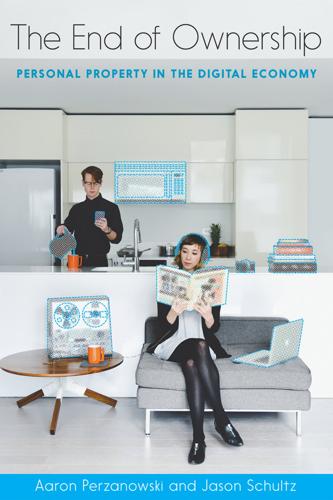
The End of Ownership: Personal Property in the Digital Economy
by
Aaron Perzanowski
and
Jason Schultz
Published 4 Nov 2016
Mike Masnick, “Supreme Court Chief Justice Admits He Doesn’t Read Online EULAs or Other ‘Fine Print,’” Techdirt, October 22, 2010, https://www.techdirt.com/articles/20101021/02145811519.shtml, accessed July 7, 2015. 8. Mike Masnick, “Proof That (Almost) No One Reads End User License Agreements,” Techdirt, February 23, 2005, https://www.techdirt.com/articles/20050223/1745244.shtml, accessed July 7, 2015. 9. George A. Akerlof, “The Market for ‘Lemons’: Quality Uncertainty and the Market Mechanism,” Quarterly Journal of Economics 84, no. 3 (August 1970): 488–500, http://www.jstor.org/stable/1879431, accessed July 7, 2015. 10. Services like Carfax have addressed this problem by making information about specific vehicles more readily available.

Capitalism 4.0: The Birth of a New Economy in the Aftermath of Crisis
by
Anatole Kaletsky
Published 22 Jun 2010
Further unintended assistance came from an even more distinguished group—the galaxy of renowned economists who gathered at George Soros’s house outside New York to launch the Institute for New Economic Thinking (INET) in September 2009. The discussions that memorable weekend about the subversion of economics by academic politics—and especially the contributions of Joseph Stiglitz, George Akerlof, Axel Leijonhufvud, Roman Frydman, John Kay, and, of course, our convenor George Soros—corroborated at the highest possible level my longstanding belief that academic economics had degenerated into a form of political propaganda and would need to be reinvented along with the capitalist system itself.

Where We Are: The State of Britain Now
by
Roger Scruton
Published 16 Nov 2017
Silber, Architecture of the Absurd: How ‘Genius’ Disfigured a Practical Art, London, 2007. 15See Guy Debord, La société du spectacle, Paris, 1967, Jean Baudrillard, Simulacres et simulation, Paris, 1981; G. Lipovetsky and J. Serroy, L’esthétisation du monde, Paris, 2006. 16See the new journal Limite, for example, which advocates an integral ecology, in which the human settlement is defended alongside the natural environment. 17See George A. Akerlof and Rachel E. Kranton, Identity Economics: How Our Identities Shape Our Work, Wages and Well-being, Princeton, 2010. 7 OUT INTO THE WORLD The argument is often made that Britain belongs in Europe and will be bereft of its true identity if it leaves the Union. This argument assumes precisely what is most questionable, namely that Europe is the same thing as the European Union.

The Fissured Workplace
by
David Weil
Published 17 Feb 2014
This meant that the hiring practice was increasingly at odds with the quality standards desired by the company—although not enough so to tilt the balance back toward its higher-paid permanent workforce. 55. Formally, this requires that the costs of locating the activity inside the firm must be greater than or equal to the cost of activity from outside divided by the relative productivity of outside option relative to inside option. 56. This is famously characterized as the “lemons problem” by George Akerlof, a Nobel Prize–winning economist. In the used car market, the underlying quality of cars is hard for buyers to observe. Because many people sell cars because of problems they have with them, buyers in the market assume the worst (in part because they cannot easily see the quality of any given car).

Big Data and the Welfare State: How the Information Revolution Threatens Social Solidarity
by
Torben Iversen
and
Philipp Rehm
Published 18 May 2022
There is of course already a large literature on the welfare state as social insurance. Nicholas Barr’s (2001) “piggy bank” metaphor for the welfare state – where people can tap into the piggy bank in times of need – succinctly captures the basic idea of social insurance. For Barr and other economists, the state takes over where markets fail, and starting with George A. Akerlof’s work, robust economic models have been developed to show how incomplete information leads to market failure. But this can only be part of the story, since the rich usually have the option of self-insuring and have no interest in bankrolling an all-encompassing public risk pool. For the latter, coercive taxation is required.

The Blank Slate: The Modern Denial of Human Nature
by
Steven Pinker
Published 1 Jan 2002
Murray’s libertarianism leads him to oppose government programs that are more activist than that, but he and Herrnstein noted that a hereditarian left is a niche waiting to be filled. An important challenge to conservative political theory has come from behavioral economists such as Richard Thaler and George Akerlof, who were influenced by the evolutionary cognitive psychology of Herbert Simon, Amos Tversky, Daniel Kahneman, Gerd Gigerenzer, and Paul Slovic.54 These psychologists have argued that human thinking and decision making are biological adaptations rather than engines of pure rationality. These mental systems work with limited amounts of information, have to reach decisions in a finite amount of time, and ultimately serve evolutionary goals such as status and security.

Global Financial Crisis
by
Noah Berlatsky
Published 19 Feb 2010
The goal of these agreements is to help producers of goods and services, exporters, and importers conduct business. WTO publishes trade statistics, research and analysis, studies, reports, and the journal World Trade Review. Recent publications are available on its Web site. 244 Bibliography of Books Liaquat Ahamed Lords of Finance: The Bankers Who Broke the World. New York: Penguin Press, 2009. George A. Akerlof Animal Spirits: How Human Psycholand Robert J. ogy Drives the Economy, and Why It Shiller Matters for Global Capitalism. Princeton, NJ: Princeton University Press, 2009. Jennifer Amyx Japan’s Financial Crisis: Institutional Rigidity and Reluctant Change. Princeton, NJ: Princeton University Press, 2004.

The Bankers' New Clothes: What's Wrong With Banking and What to Do About It
by
Anat Admati
and
Martin Hellwig
Published 15 Feb 2013
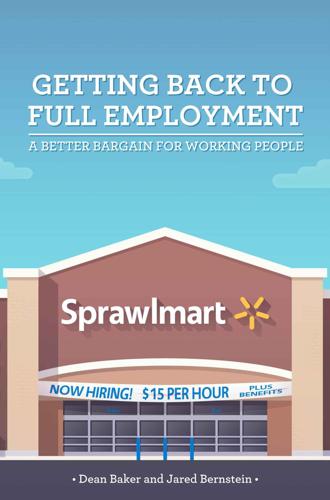
Getting Back to Full Employment: A Better Bargain for Working People
by
Dean Baker
and
Jared Bernstein
Published 14 Nov 2013
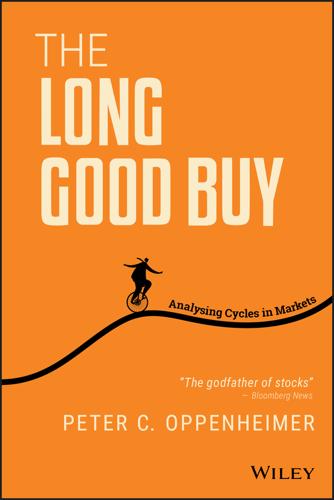
The Long Good Buy: Analysing Cycles in Markets
by
Peter Oppenheimer
Published 3 May 2020
Since the financial crisis, the interest in behavioural explanations and the psychology of markets has increased, and this information helps to better understand how and why financial cycles develop and can often significantly exaggerate the developments of economic and financial variables on which they are driven. Nobel Prize winners George A. Akerlof and Robert J. Shiller wrote that ‘the crisis was not foreseen, and is still not fully understood … because there have been no principles in conventional economic theories regarding animal spirits’.21 It is the impact of human behaviour and the way in which information is processed by humans that makes the forecasting of markets so much more complicated than forecasting physical systems such as the weather.
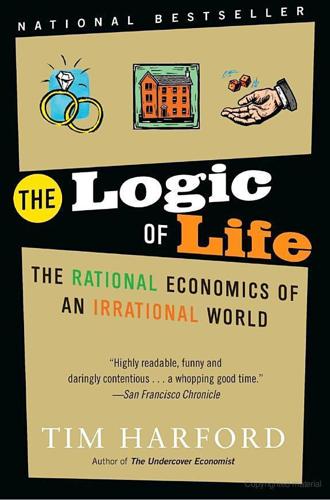
The Logic of Life: The Rational Economics of an Irrational World
by
Tim Harford
Published 1 Jan 2008
(I am oversimplifying here): For an economic model in which it is rational to pay an excess wage, see C. Shapiro and J. Stiglitz, “Equilibrium Unemployment as a Worker Discipline Device,” American Economic Review (June 1984). The theory that high wages and high effort are a sort of gift exchange rather than a response to economic incentives originates with George A. Akerlof, “Labor Contracts as Partial Gift Exchange,” Quarterly Journal of Economics 97 (1982): 543–69. Kagel and Battalio put each rat: Telephone interview with John Kagel, January 24, 2005. Battalio, Kagel, and Kogut showed: Raymond Battalio, John Kagel, and Carl Kogut, “Experimental Confirmation of the Existence of a Giffen Good,” American Economic Review 81, no. 4(September 1991).
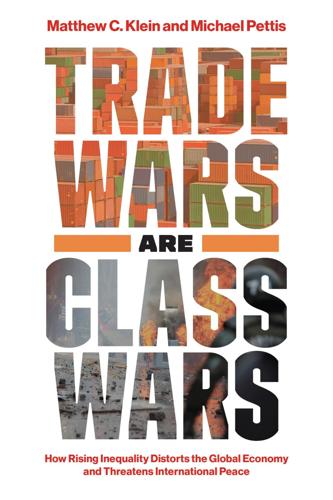
Trade Wars Are Class Wars: How Rising Inequality Distorts the Global Economy and Threatens International Peace
by
Matthew C. Klein
Published 18 May 2020
Serge Schmemann, “Upheaval in the East; East Germans Form ‘Grand Coalition,’” New York Times, April 10, 1990; “De Maziere Accused of Ties to East’s Secret Police,” AP, December 9, 1990. 7. Peter Bofinger, “The German Monetary Unification (Gmu): Converting Marks to D-Marks,” Federal Reserve Bank of St. Louis, Review, July–August 1990, 17–36. 8. George A. Akerlof et al., “East Germany in from the Cold: The Economic Aftermath of Currency Union,” Brookings Papers on Economic Activity, 1991, No. 1; Destatis, “Population, Persons in Employment, Unemployed Persons, Economically Active Population, Economically Inactive Population: Länder, Years,” https://www-genesis.destatis.de/genesis/online/link/tabelleErgebnis/12211-0005&language=en. 9.

The Meritocracy Trap: How America's Foundational Myth Feeds Inequality, Dismantles the Middle Class, and Devours the Elite
by
Daniel Markovits
Published 14 Sep 2019
Finally, in the three and a half decades between 1980 and 2014, incomes at the 99.999th percentile grew nearly three times as fast as incomes at the 99th percentile, and only the richest one-twentieth of 1 percent enjoyed the same income growth that the poorest Americans experienced in the Great Compression. All these data come from Facundo Alvaredo et al., World Inequality Report 2018 (World Inequality Lab, 2017), https://wir2018.wid.world/. See also Leonhardt, “Our Broken Economy.” on his children: I owe this formulation to Gemma Mortensen. rat-race equilibrium: George Akerlof, “The Economics of Caste and of the Rat Race and Other Woeful Tales,” Quarterly Journal of Economics 90, no. 4 (November 1976). See also Alan Day Haight, “Padded Prowess: A Veblenian Interpretation of the Long Hours of Salaried Workers,” Journal of Economic Issues 31, no. 1 (March 1997): 33–34.

Reimagining Capitalism in a World on Fire
by
Rebecca Henderson
Published 27 Apr 2020
Assuming that 50 percent of this income would have been lost starting in 2023 without the passage of the bill, and that with the passage of the bill it will be retained, and discounting those future income streams at 6 percent. 50. Tim Lee, “15 Years Ago, Congress Kept Mickey Mouse out of the Public Domain. Will They Do It Again?” Washington Post, Apr. 23, 2019, www.washingtonpost.com/news/the-switch/wp/2013/10/25/15-years-ago-congress-kept-mickey-mouse-out-of-the-public-domain-will-they-do-it-again/. 51. Brief of George A. Akerlof et al. as Amici Curiae in Support of Petitioners, Eric Eldred et al. v. John D. Ashcroft, Attorney General, 537 U.S. 186 (2003). 52. “Fossil Fuel Interests Have Outspent Environmental Advocates 10:1 on Climate Lobbying,” Yale E360, July 18, 2018, https://e360.yale.edu/digest/fossil-fuel-interests-have-outspent-environmental-advocates-101-on-climate-lobbying; https://influencemap.org/index.html. 53.
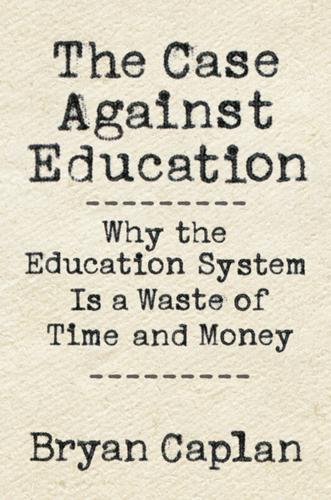
The Case Against Education: Why the Education System Is a Waste of Time and Money
by
Bryan Caplan
Published 16 Jan 2018
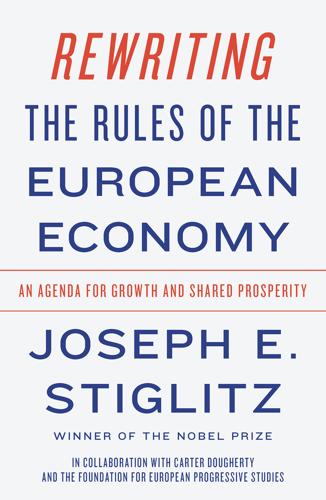
Rewriting the Rules of the European Economy: An Agenda for Growth and Shared Prosperity
by
Joseph E. Stiglitz
Published 28 Jan 2020
Alissa Pelatan and Roberto Randazzo, “The First European Benefit Corporation,” Esela—The Legal Network for Social Impact, https://www.bwbllp.com/file/benefit-corporation-article-june-16-pdf, and “B Corp Movement in BeNeLux,” B Lab Europe, 2019, https://bcorporation.eu/about-b-lab/country-partner/benelux. 8. Keith Collins, “A Patent that Helped Amazon Take Over Online Commerce Is about to Expire,” Quartz, Aug. 19, 2017, https://qz.com/1057490/a-patent-that-helped-amazon-take-over-online-commerce-is-about-to-expire/. 9. George A. Akerlof and Robert J. Shiller, Phishing for Phools: The Economics of Manipulation and Deception (Princeton, NJ: Princeton University Press, 2015). CHAPTER 5: TOWARD A FINANCIAL SYSTEM THAT SERVES SOCIETY 1. Tori and Onaran (2017) use panel data on the balance sheets of publicly listed nonfinancial companies (from Worldscope) for the period 1995–2015.

Chokepoint Capitalism
by
Rebecca Giblin
and
Cory Doctorow
Published 26 Sep 2022
Committee on Digital, Culture, Media and Sport, UK House of Commons, Economics of Music Streaming, Second Report of Session 2021–22 (London, July 15, 2021), 105, https://committees.parliament.uk/publications/6739/documents/72525/default. 21. If you’re interested in digging into the detail of how this figure is calculated, see the discussion in Rebecca Giblin, “A New Copyright Bargain? Reclaiming Lost Culture and Getting Authors Paid,” Columbia Journal of Law & the Arts 41 (2018): 369. 22. Brief of George A. Akerlof et al. as Amici Curiae in Support of Petitioners, Eldred v. Ashcroft, 537 US 186, 01–618, 2003, at 7. 23. Paul J. Heald, “How Copyright Keeps Works Disappeared,” Journal of Empirical Legal Studies 11, no. 4 (2013): 829. 24. Jacob Flynn, Rebecca Giblin, and François Petitjean, “What Happens When Books Enter the Public Domain?
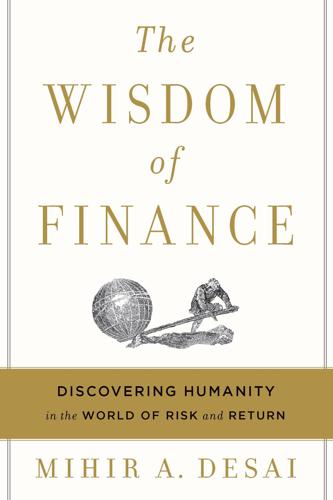
The Wisdom of Finance: Discovering Humanity in the World of Risk and Return
by
Mihir Desai
Published 22 May 2017
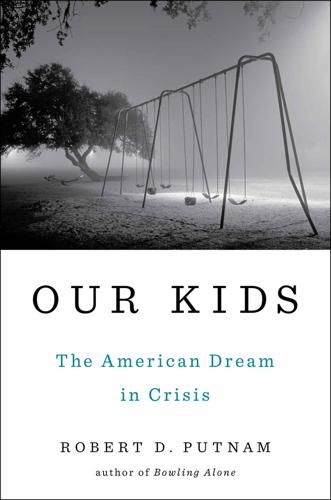
Our Kids: The American Dream in Crisis
by
Robert D. Putnam
Published 10 Mar 2015
Leaving orphans aside, the fraction of 16-year-olds living with two biological parents declined from 85 percent in the 1960s to 59 percent in the 1990s. David T. Ellwood and Christopher Jencks, “The Spread of Single-Parent Families in the United States Since 1960,” in The Future of the Family, eds. Daniel Patrick Moynihan, Timothy M. Smeeding, and Lee Rainwater (New York: Russell Sage Foundation, 2004), 25–65. 13. George A. Akerlof, Janet L. Yellen, and Michael L. Katz, “An Analysis of Out-of-Wedlock Births in the United States,” Quarterly Journal of Economics 11 (1996): 277–317. 14. Cherlin, The Marriage-Go-Round; David Popenoe, War over the Family (New Brunswick, NJ: Transaction, 2005); Paul R. Amato, “Institutional, Companionate, and Individualistic Marriages: Change over Time and Implications for Marital Quality,” in Marriage at the Crossroads: Law, Policy, and the Brave New World of Twenty-first-Century Families, eds.
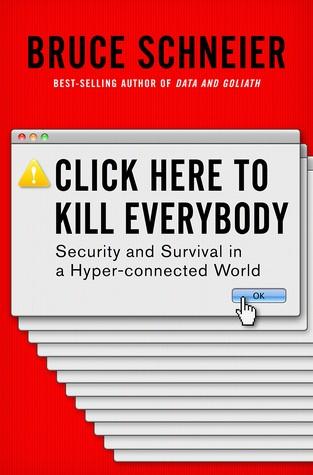
Click Here to Kill Everybody: Security and Survival in a Hyper-Connected World
by
Bruce Schneier
Published 3 Sep 2018
Craig Silverman (24 Jul 2015), “7 creepy baby monitor stories that will terrify all parents,” BuzzFeed, https://www.buzzfeed.com/craigsilverman/creeps-hack-baby-monitors-and-say-terrifying-thing. 133Many brands are hackable: Carl Franzen (4 Aug 2017), “How to find a hack-proof baby monitor,” Lifehacker, https://offspring.lifehacker.com/how-to-find-a-hack-proof-baby-monitor-1797534985. 133“[Our] technology transmits a secure”: Amazon.com (accessed 24 Apr 2018), “VTech DM111 audio baby monitor with up to 1,000 ft of range, 5-level sound indicator, digitized transmission & belt clip,” https://www.amazon.com/VTech-DM111-Indicator-Digitized-Transmission/dp/B00JEV5UI8/ref=pd_lpo_vtph_75_bs_lp_t_1. 134I couldn’t tell the good from the bad: I found one security assessment of a few brands. Mark Stanislav and Tod Beardsley (29 Sep 2015), “Hacking IoT: A case study on baby monitor exposure and vulnerabilities,” Rapid7, https://www.rapid7.com/docs/Hacking-IoT-A-Case-Study-on-Baby-Monitor-Exposures-and-Vulnerabilities.pdf. 134“lemons market”: George A. Akerlof (1 Aug 1970), “The market for ‘lemons’: Quality uncertainty and the market mechanism,” Quarterly Journal of Economics 84, no. 3, https://academic.oup.com/qje/article-abstract/84/3/488/1896241. 134The result is that insecure products: Bruce Schneier (19 Apr 2007), “How security companies sucker us with lemons,” Wired, https://www.wired.com/2007/04/security matters-0419. 134There is nothing like this today: One study estimated it would take average consumers 244 hours/year to read all of the privacy policies they agree to.
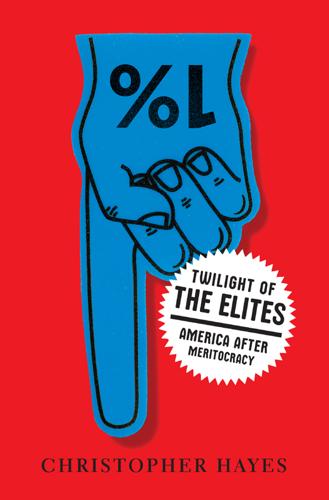
Twilight of the Elites: America After Meritocracy
by
Chris Hayes
Published 11 Jun 2012
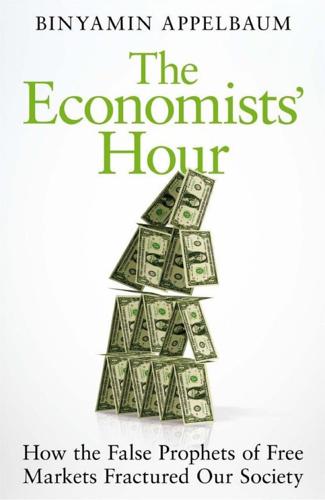
The Economists' Hour: How the False Prophets of Free Markets Fractured Our Society
by
Binyamin Appelbaum
Published 4 Sep 2019
In July 1996, seeking to build consensus, Greenspan set aside the metronomic routine of the Fed’s policy meetings for a debate about the optimal level of inflation. He asked Yellen to explain to her colleagues why she thought a little inflation was a good thing. Yellen’s explanation was rooted in her experience hiring a babysitter for her son in the early 1980s. Yellen and her husband, the economist George A. Akerlof, decided to pay more than the going rate, reasoning that a happier babysitter would provide better care. Generalizing from that experience, Yellen and Akerlof presented evidence in their academic work that companies often seek to boost morale, and productivity, by paying workers more than the cost of a replacement.* Similarly, during recessions, employers refrain from cutting wages because lower morale would diminish productivity.
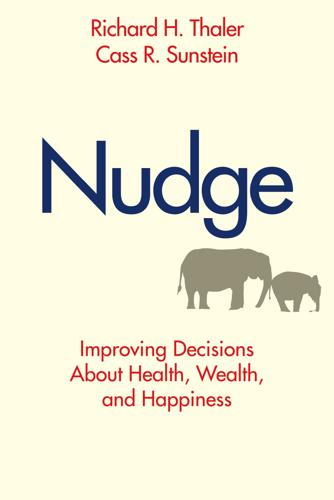
Nudge: Improving Decisions About Health, Wealth, and Happiness
by
Richard H. Thaler
and
Cass R. Sunstein
Published 7 Apr 2008
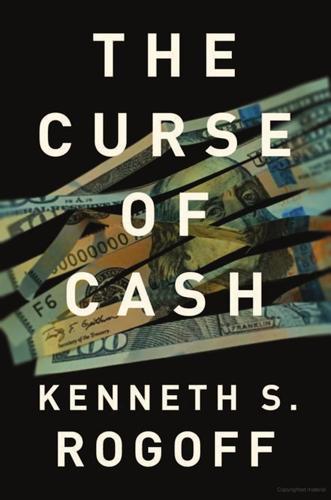
The Curse of Cash
by
Kenneth S Rogoff
Published 29 Aug 2016

The Physics of Wall Street: A Brief History of Predicting the Unpredictable
by
James Owen Weatherall
Published 2 Jan 2013
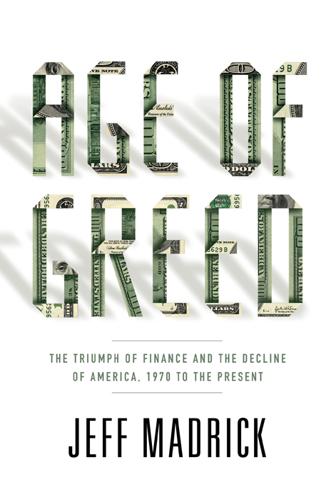
Age of Greed: The Triumph of Finance and the Decline of America, 1970 to the Present
by
Jeff Madrick
Published 11 Jun 2012
Rudd, “The Supply Shock Explanation of the Great Stagflation Revisited,” Center for Economic Studies Working Paper, No. 176, Princeton, November 2008, p. 49. 60 MANY ECONOMISTS HAILED: Ben S. Bernanke, “The Great Moderation,” Speech, February 2004, http://www.bis.org/review/r040301f.pdf. 61 THERE HAD BEEN DISSENTERS: George A. Akerlof, William T. Dickens, and George L. Perry, “Near-Rational Wage and Price Setting and the Optimal Rates of Inflation and Unemployment,” Brookings Papers on Economic Activity, Economic Studies Program, The Brookings Institution, vol. 31 (2000–2001), pp. 1–60. 62 “NOBODY KNOWS THE COST”: On Blanchard’s inflation targeting, see Chris Giles, “IMF Experts Spell Out Policy Flaws,” Financial Times, February 12, 2010, p. 3; Akerlof, Dickens, and Perry, “Near-Rational Wage and Price Setting and the Optimal Rates of Inflation and Unemployment,” p. 1. 63 RATHER, HIS SOCIAL POLICY WAS DRIVEN: Friedman, Capitalism and Freedom, p. 169. 64 “THE GREAT ADVANCES OF CIVILIZATION”: Ibid., p. 5. 65 “THE GREAT ACHIEVEMENT OF CAPITALISM”: Ibid., p. 169. 66 “I HAVE ALWAYS BEEN IMPRESSED”: Friedman and Friedman, Two Lucky People, pp. 217–18.

How I Became a Quant: Insights From 25 of Wall Street's Elite
by
Richard R. Lindsey
and
Barry Schachter
Published 30 Jun 2007

Crisis Economics: A Crash Course in the Future of Finance
by
Nouriel Roubini
and
Stephen Mihm
Published 10 May 2010

Engineering Security
by
Peter Gutmann
[428] “SSL Certificate Fails to Adhere to Basic Constraints / Key Usage Extensions”, discussion thread at http://support.godaddy.com/groups/community/forum/topic/ssl-certificate-fails-to-adhere-tobasic-constraints-key-usage-extensions, October/November 2011. [429] “The Market for ‘Lemons’: Quality Uncertainty and the Market Mechanism”, George Akerlof, Quarterly Journal of Economics, Vol.84, No.3 (August 1970), p.488. [430] “Markets in Imperfect Information — Lemons, Limes and Silver Bullets”, Ian Grigg, 14 May 2006, http://www.financialcryptography.com/mt/archives/000721.html. [431] “The Market for Silver Bullets”, Ian Grigg, 2 March 2008, http://iang.org/papers/market_for_silver_bullets.html.

Algorithms to Live By: The Computer Science of Human Decisions
by
Brian Christian
and
Tom Griffiths
Published 4 Apr 2016
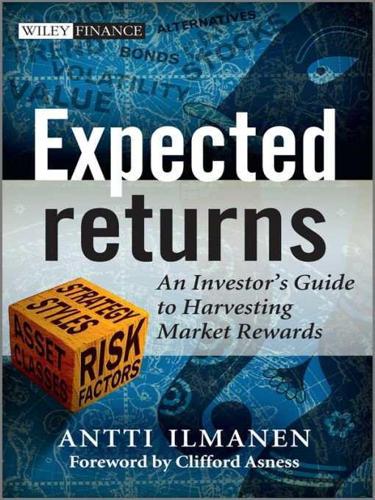
Expected Returns: An Investor's Guide to Harvesting Market Rewards
by
Antti Ilmanen
Published 4 Apr 2011
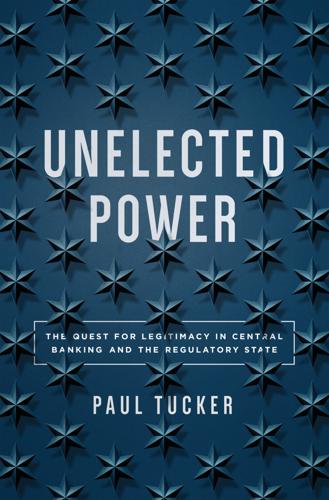
Unelected Power: The Quest for Legitimacy in Central Banking and the Regulatory State
by
Paul Tucker
Published 21 Apr 2018

The Rise and Fall of American Growth: The U.S. Standard of Living Since the Civil War (The Princeton Economic History of the Western World)
by
Robert J. Gordon
Published 12 Jan 2016